September 18, 2022
Martha O'Kennon
The Summer is hanging on by its nails - water temperature still above 60 F and a bit warm and muggy, but I'm not complaining right now.
The Asters are once more gorgeous! Both purple and pink are such nice colors and so attractive to bees right now. You'll see Bees soon. The Tall Evening Primrose are beginning to slow down.
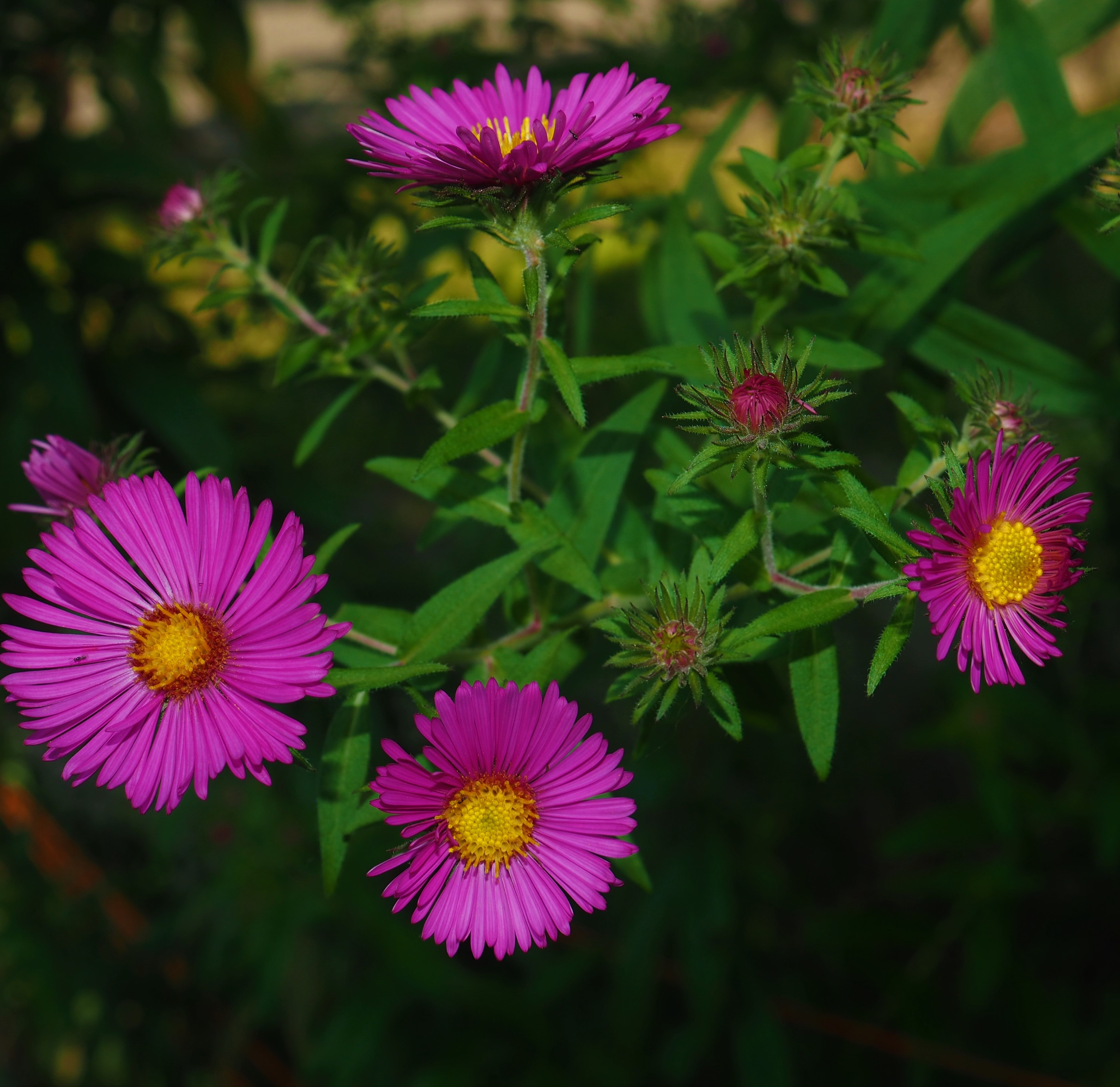
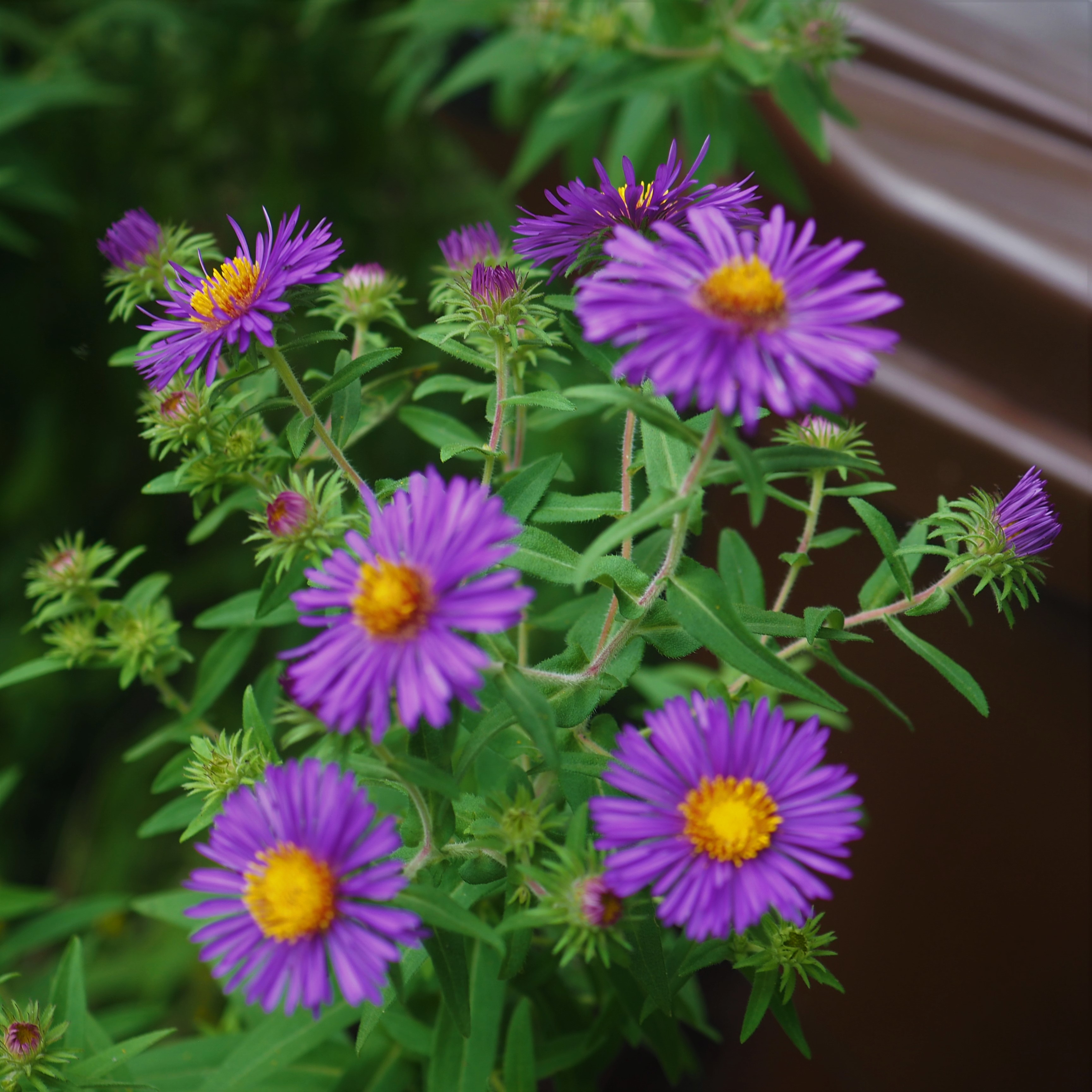
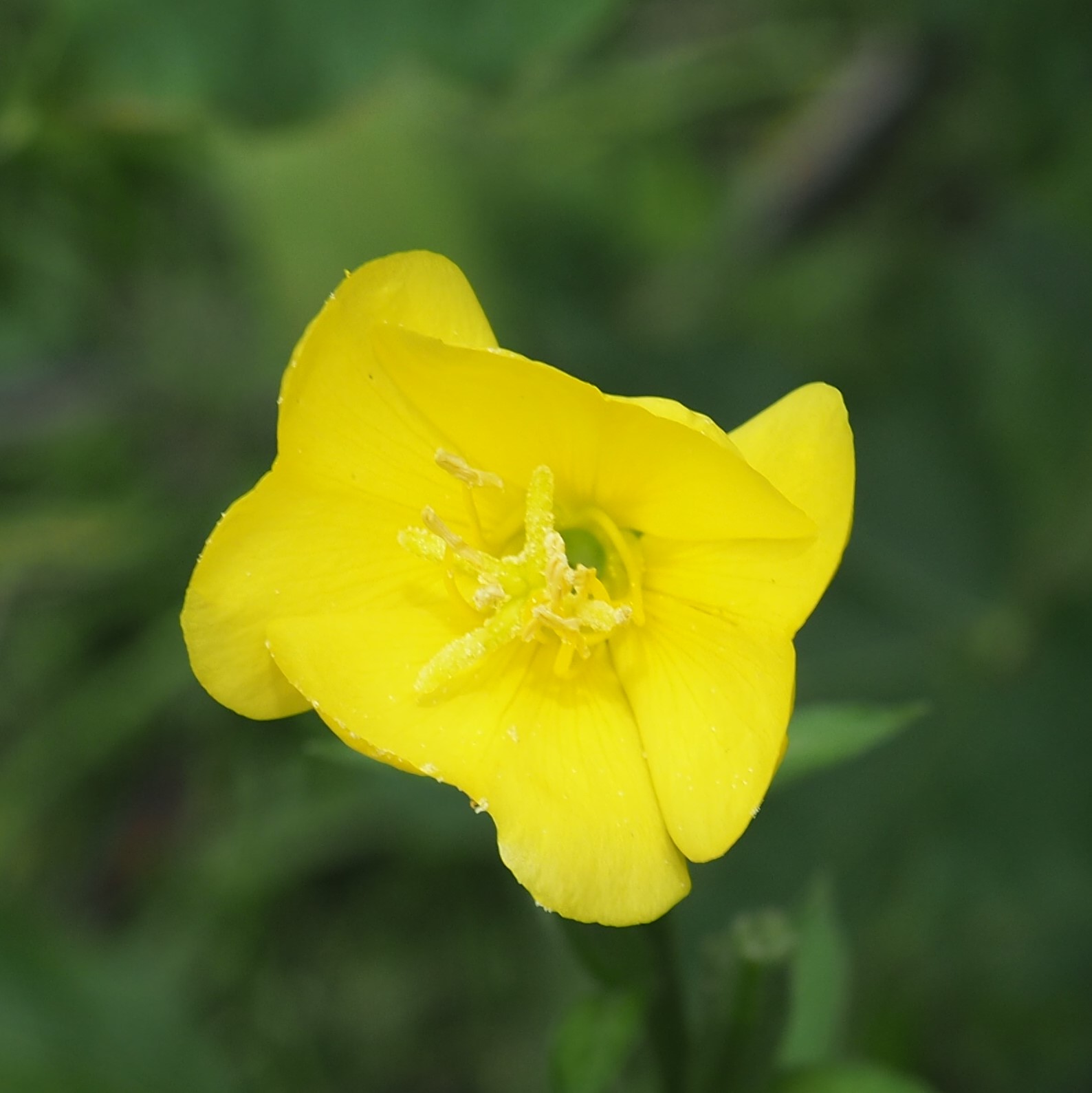
Remember that there is information in the name of the file for each image. You can see it by mousing over the image - look at the lower left of the screen. Or you can click on the image to get to the (usually) larger image. Then the info is displayed in the address line above. Sometimes the second click will actually display a different view of the original image.
A good number of the Ants I'd recorded this week were actually tiny Wasps, but we did have a few real Ants. I THINK this first one is the Eastern Black Carpenter, even though it's hard to see the yellow hairs on its abdomen. The next one has enough red on its thorax that it's almost certainly a Nearctic Ant. Third is probably one of those Odorous House Ants. There weren't really very many Ants running back and forth on the Wall this time.
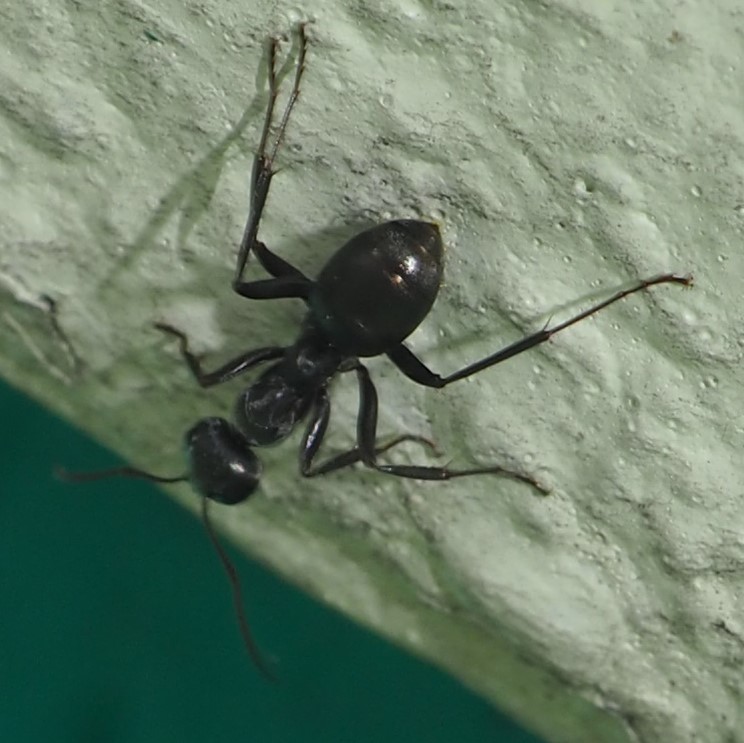

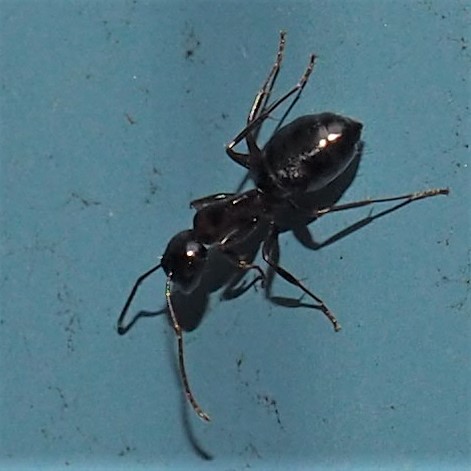
But the Bees were the BEST ever. A few of them decided to make my day and sit enjoying the Goldenrod nectar in lovely clear positions. Like this one, which is one of the Augochlora Green-Gold Sweat Bees.

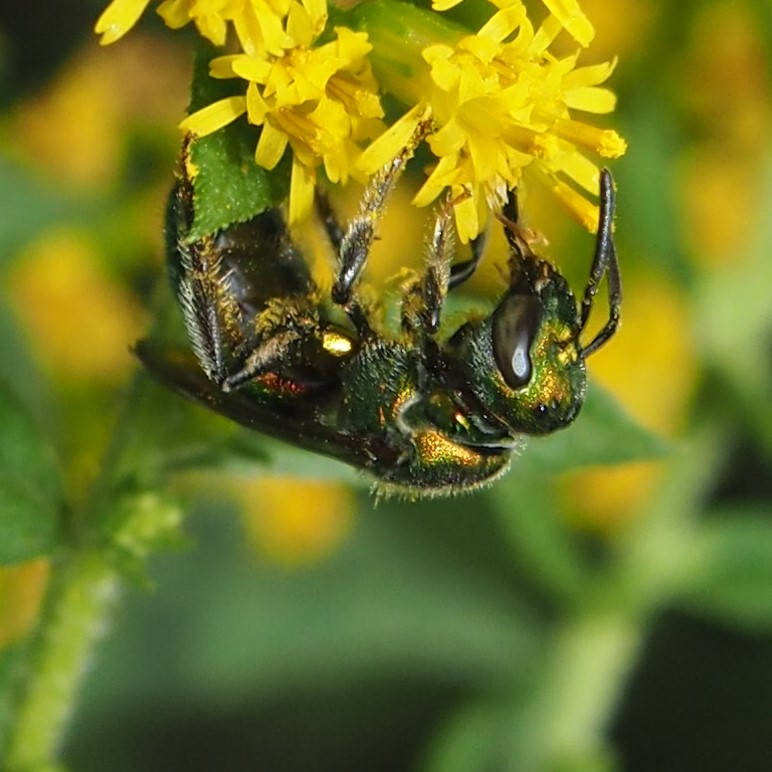

This first one may be the same as the previous but definitely Gold! I'm still waiting to see what the second beautiful blue bee is. I think the third one is the same bluish Bee.
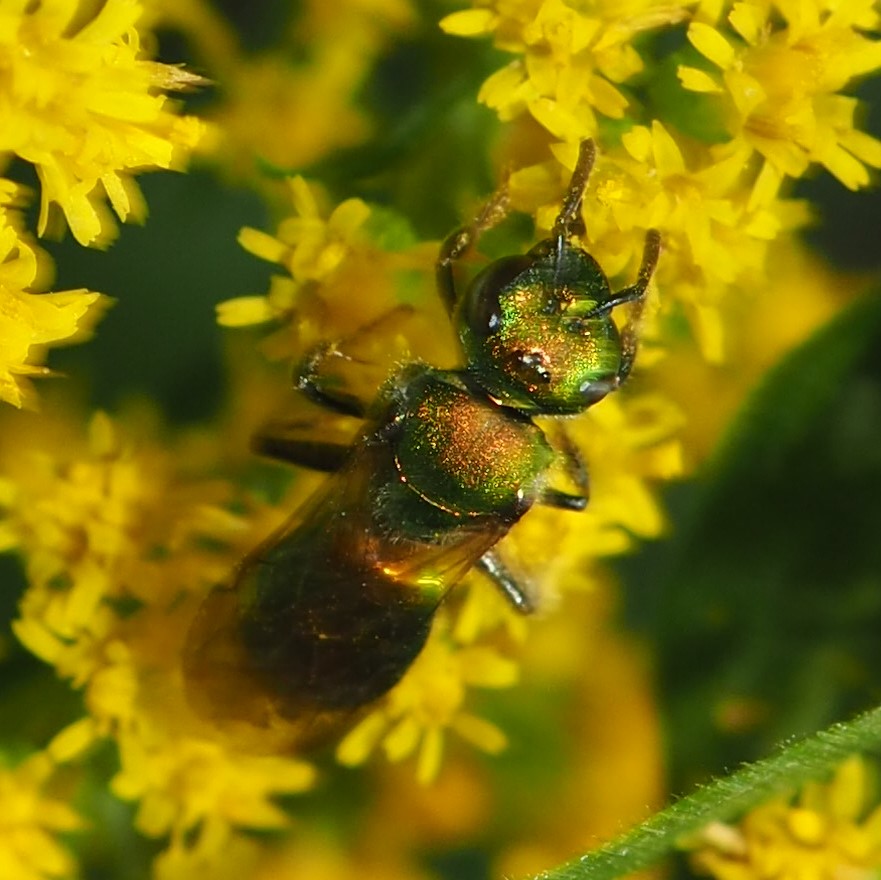
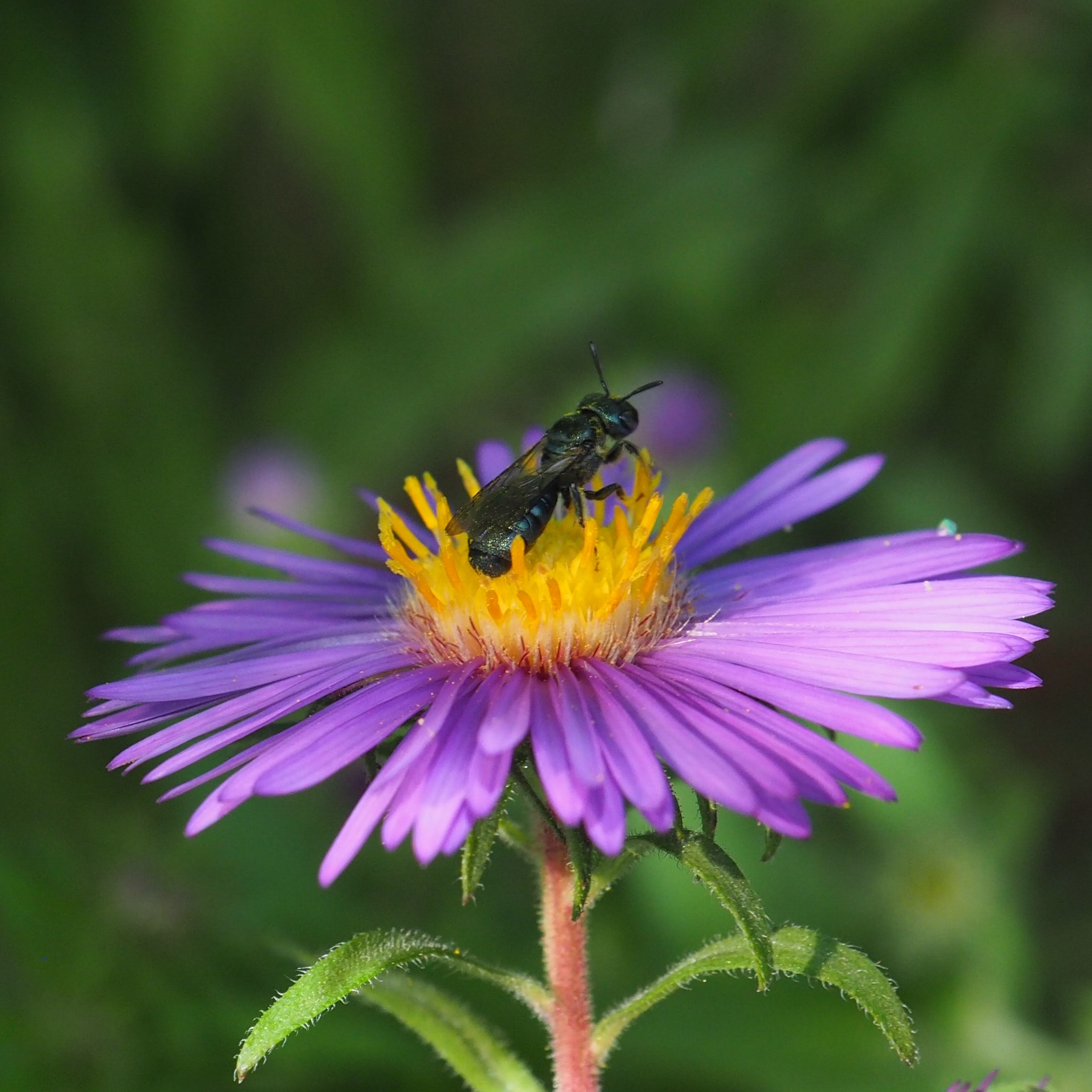
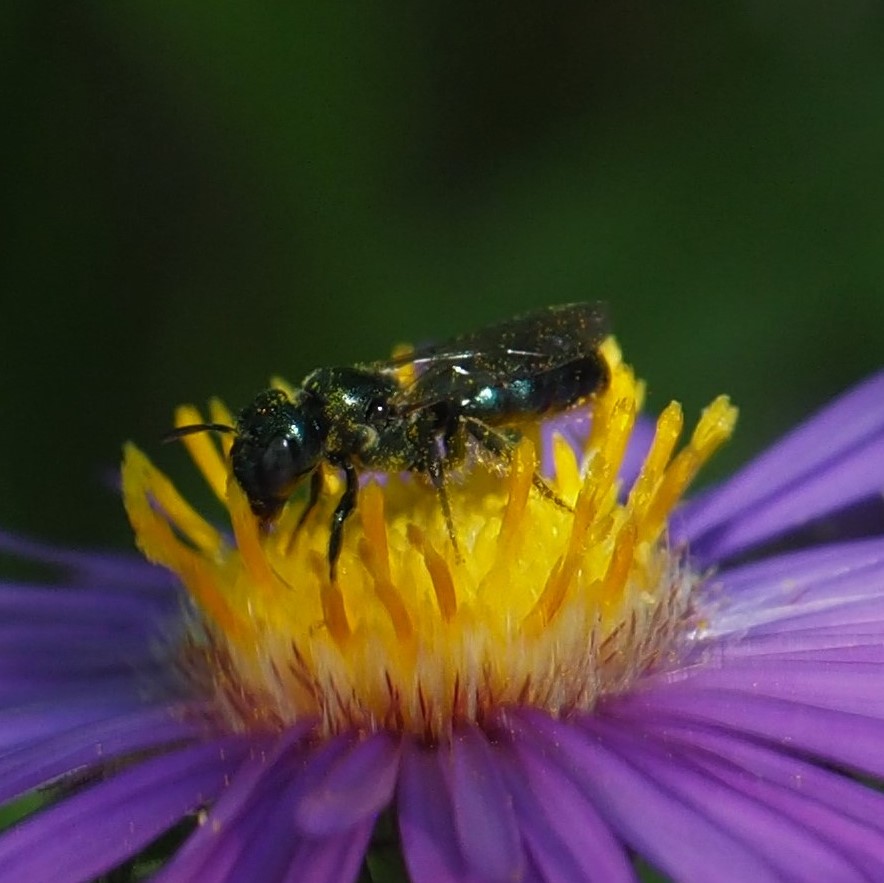
Here's one that we haven't seen much since the early spring flowers were blooming - the Western Honey Bee! Then another of the Sweat Bees, this one with a striped abdomen. Finally, the Common Eastern Bumblebee.
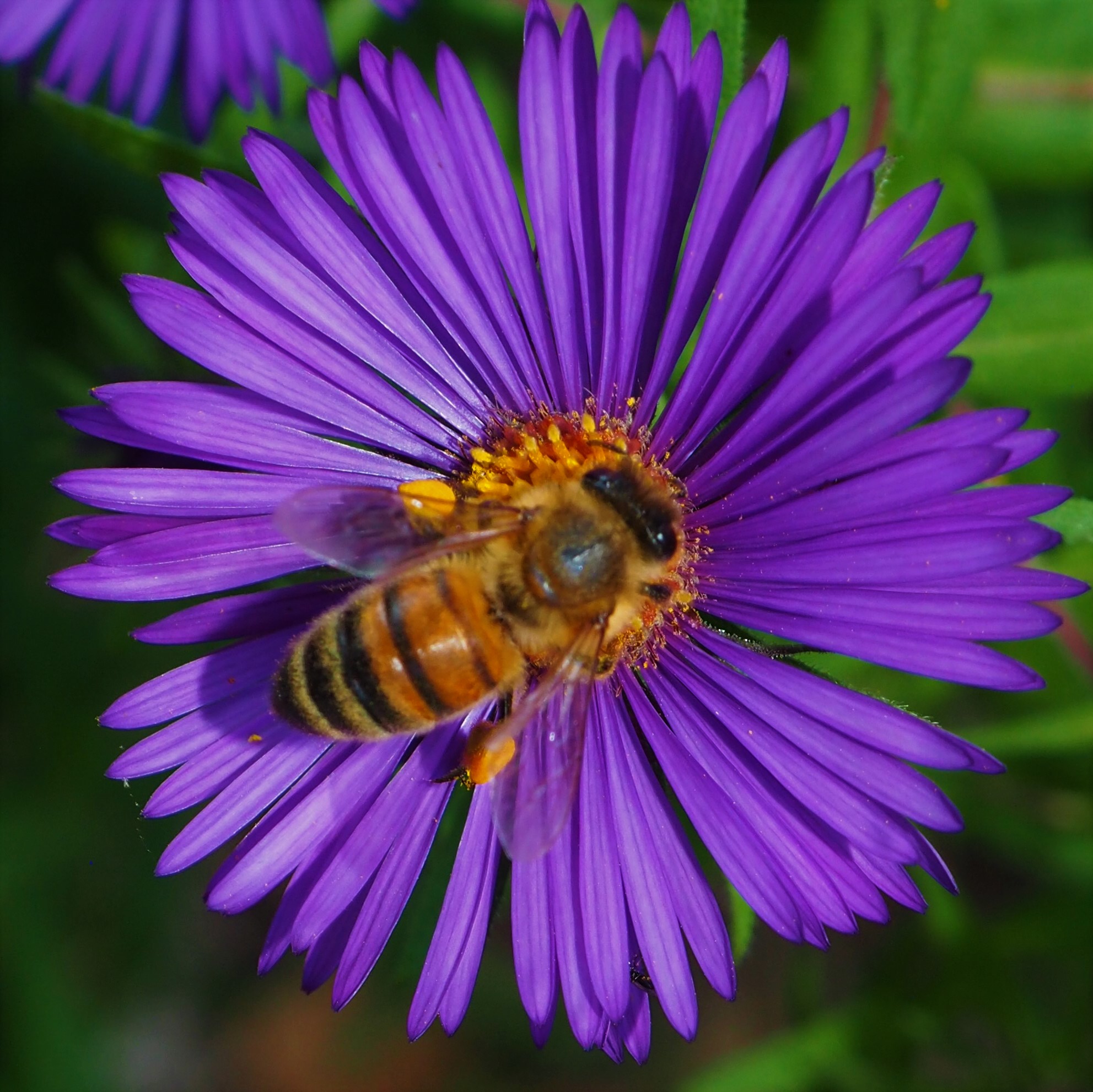
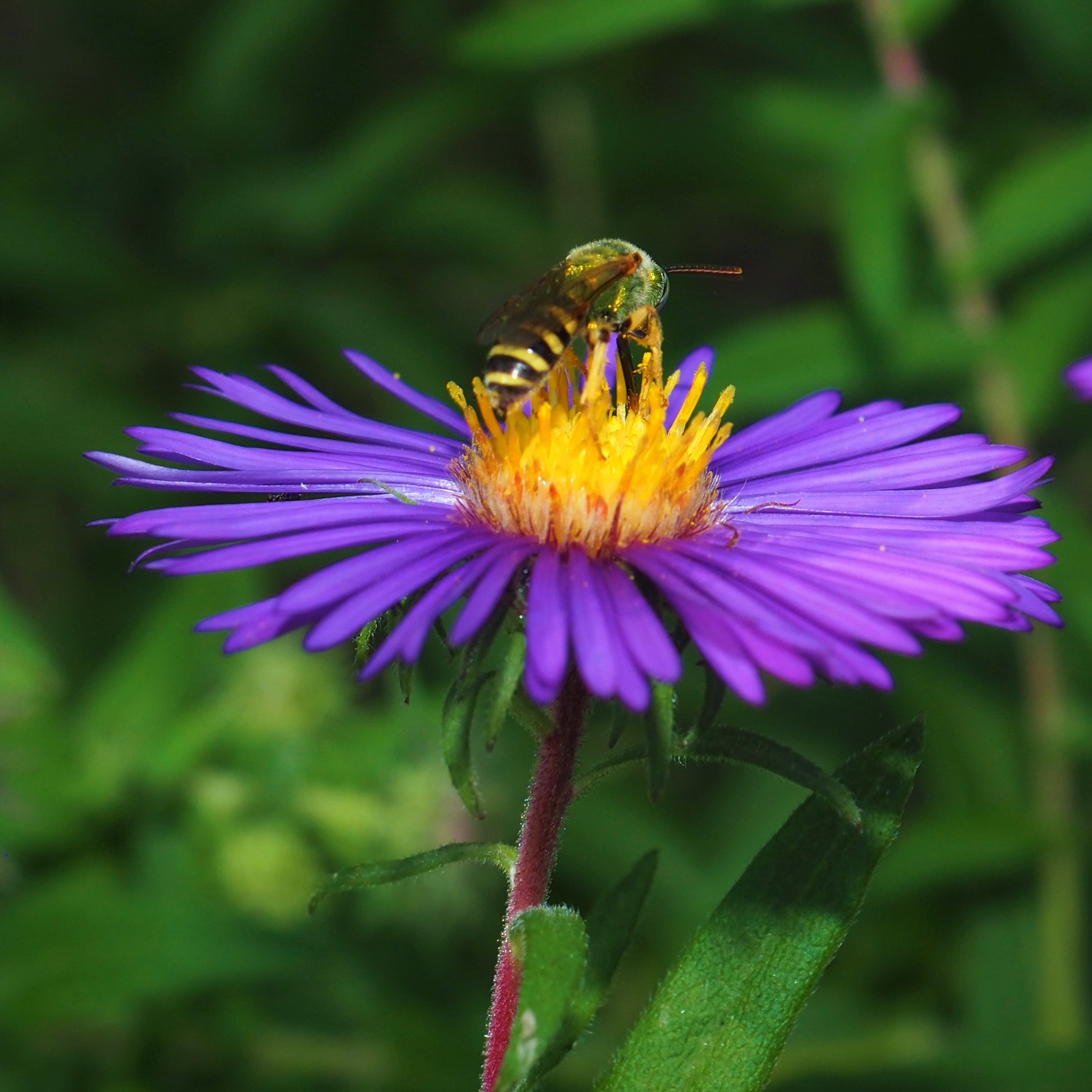
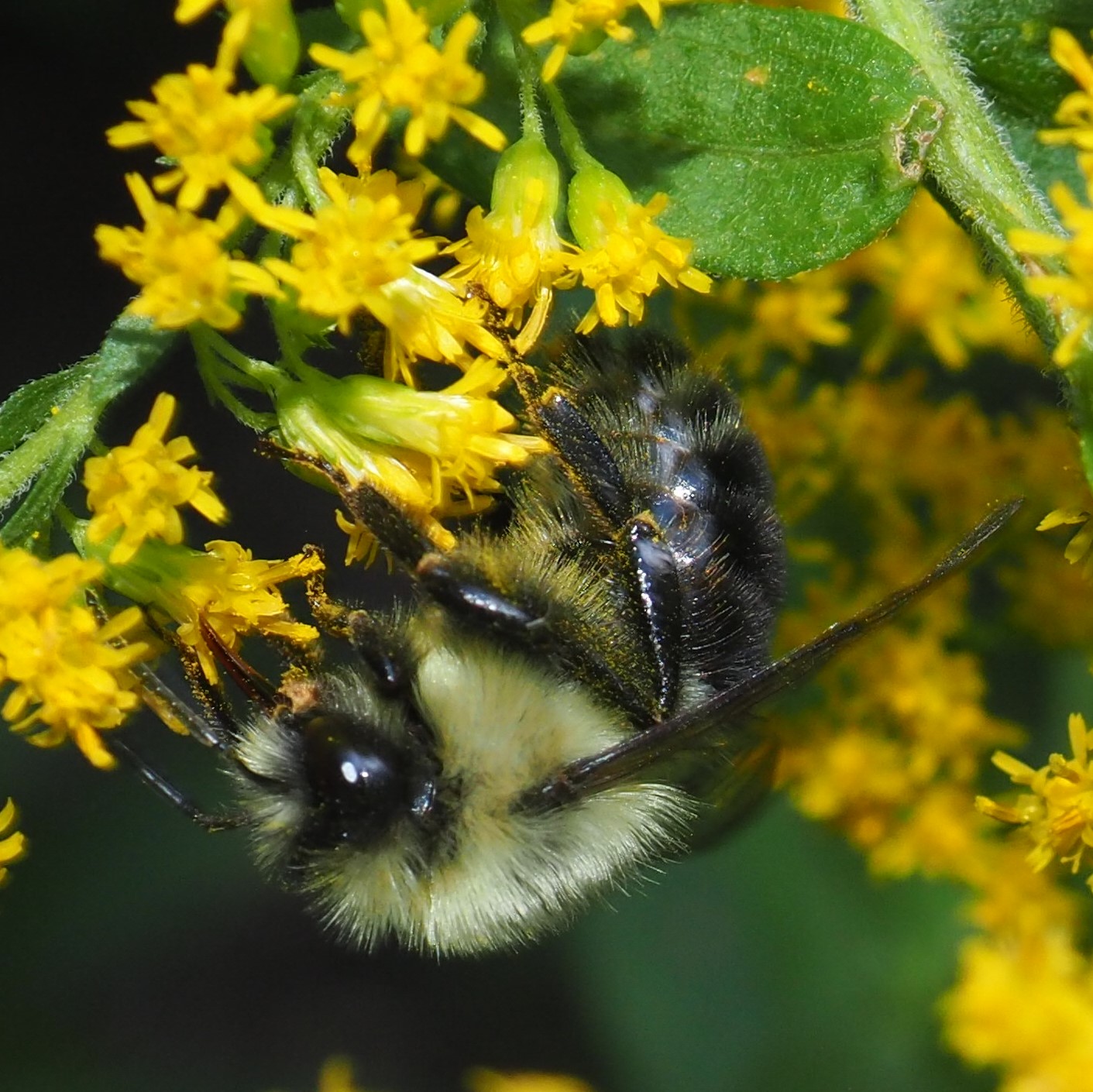
The Goldenrod doesn't just attract Bees, but also a few very beautiful Beetles. You've already met the Locust Borer Beetle. Next, this week we started to see the Goldenrod Soldier Beetle. Third is that tiny Weevil, the Redbud Bruchid. I find it amazing up close where you can see the rows and rows of colored cells. Last looks big, but it is really a tiny Flea Beetle.
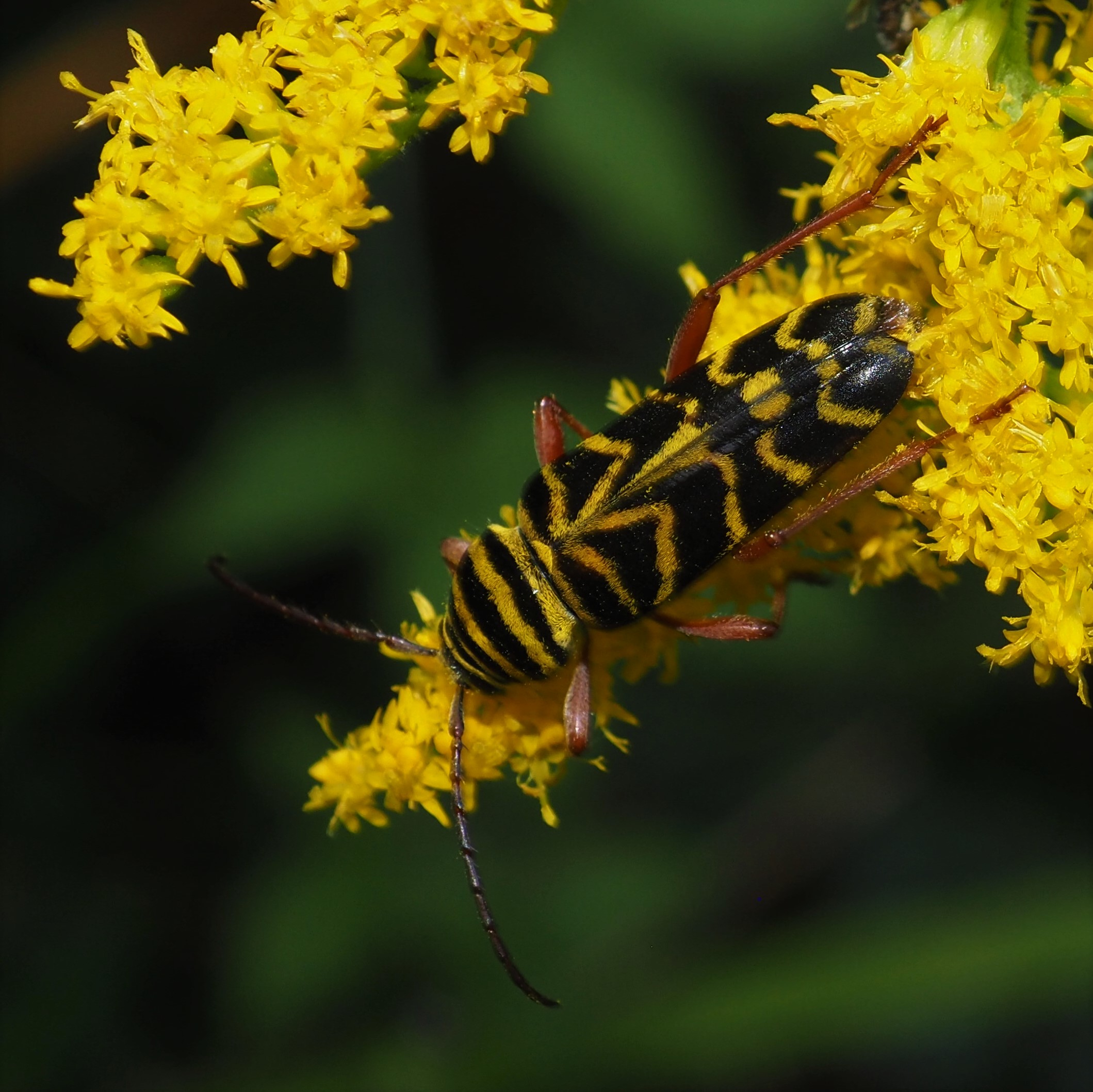
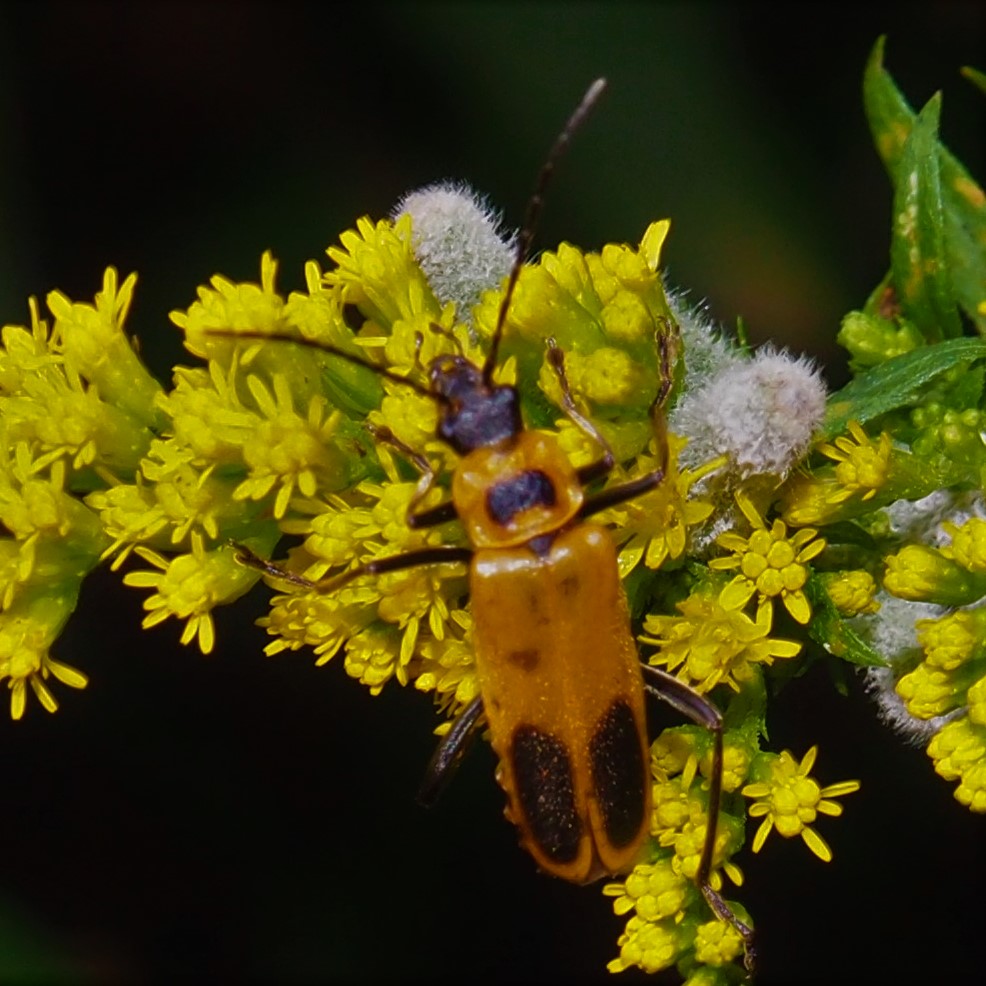
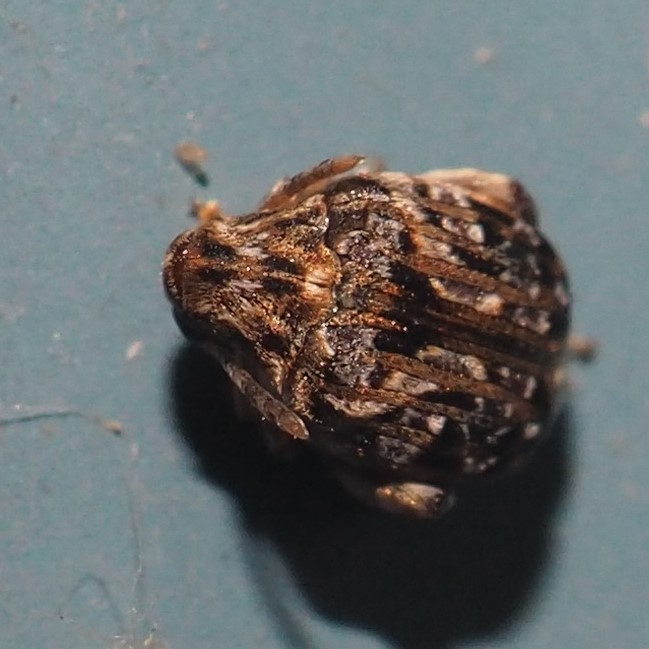
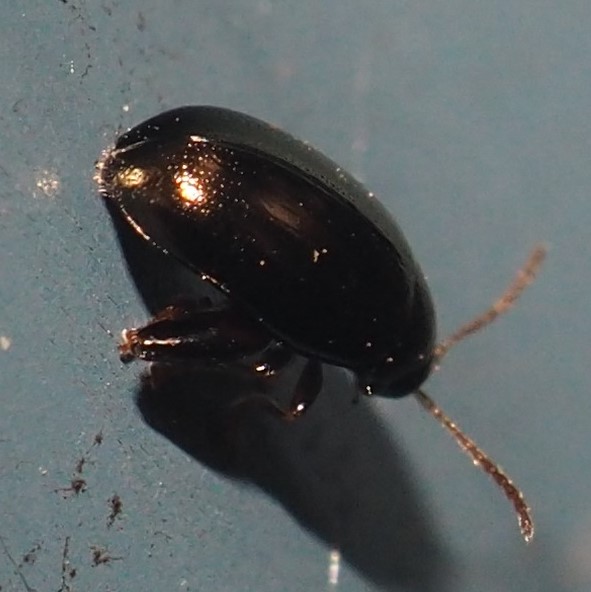
On to the Bugs. Starting again with the Assassins, here is the one I always associate with Goldenrod Season - the Pennsylvania Ambush Bug. Here are two - in two different colors. Now you are probably saying to yourself, why two colors? Well, look at picture 3 (from 2021). Since these insects mate using the doggy position, you now know why - the black-topped model is the male and the mostly brown-topped is the female.
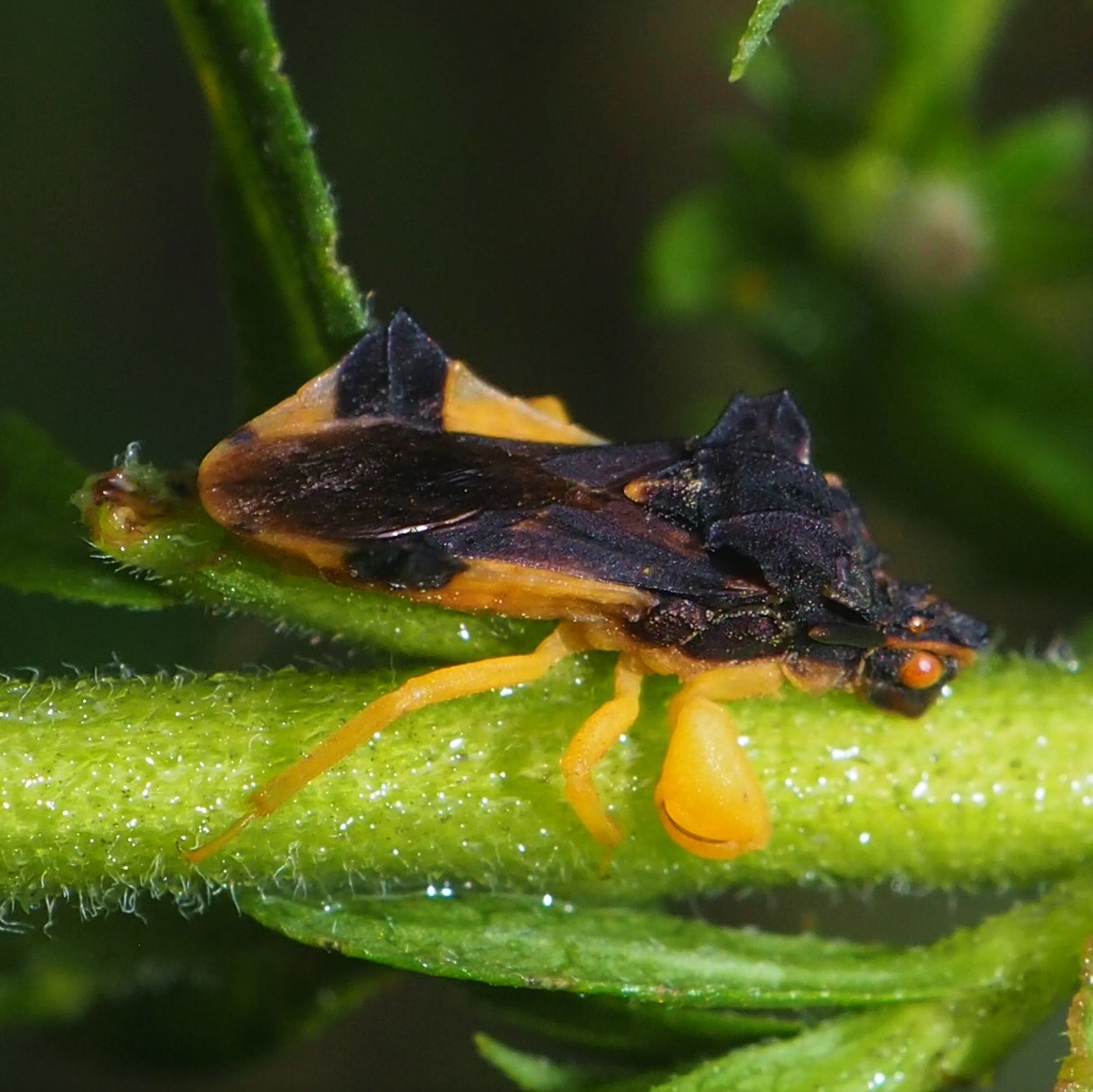
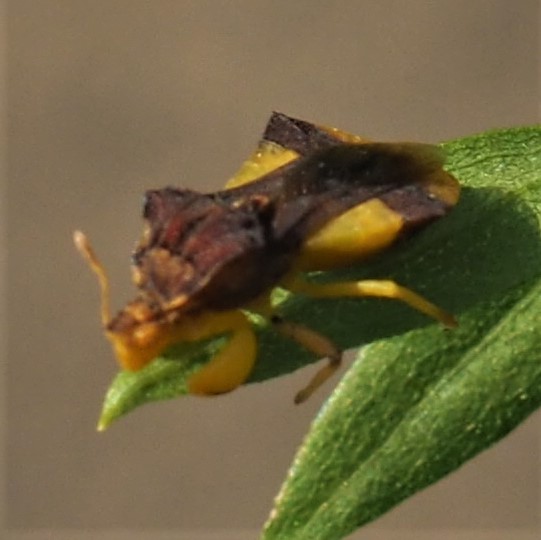

The other Assassin we saw this week was this baby Zelus luridus, the Pale-Green Assassin Bug. Then we have these Leafhoppers. There was a good bit more shade in the spot on the South Wall where I usually see the most Leafhoppers, so the pictures are a bit dark, but you can see what they are. The first of these was our old friend Erasmoneura vulnerata; then you see one of the members of genus Eratoneura. Fourth is the lovely Erythroneura elegans.


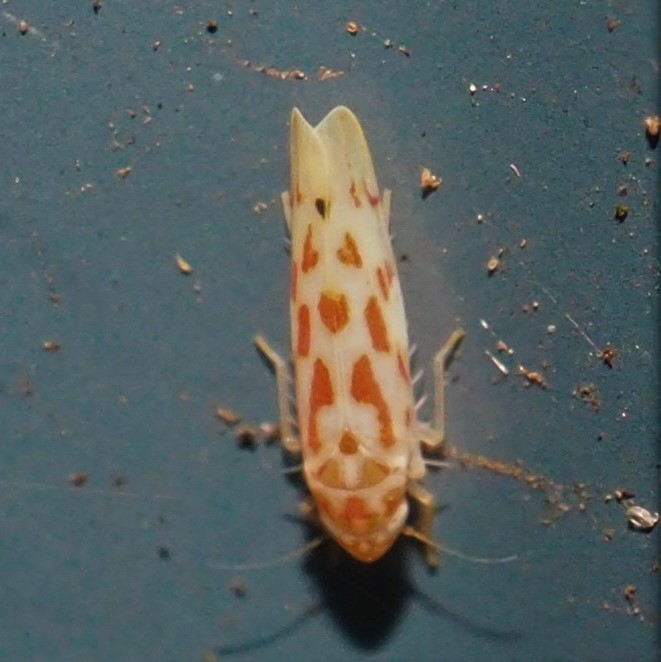

Here are two shots of a leafhopper of genus Erythridula (which I always first think of by its old name Arboridia). Finally, one of the genus Osbornellus, and finally Jikradia olitoria, the Coppery Leafhopper.
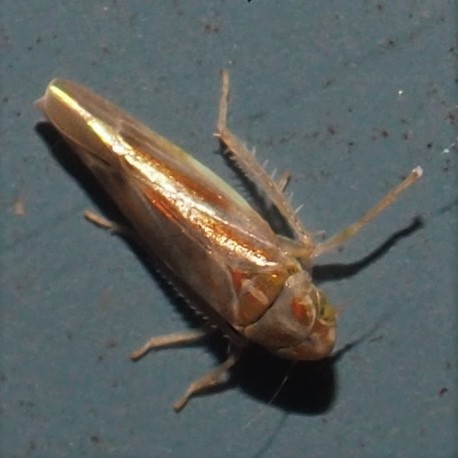
.jpg)
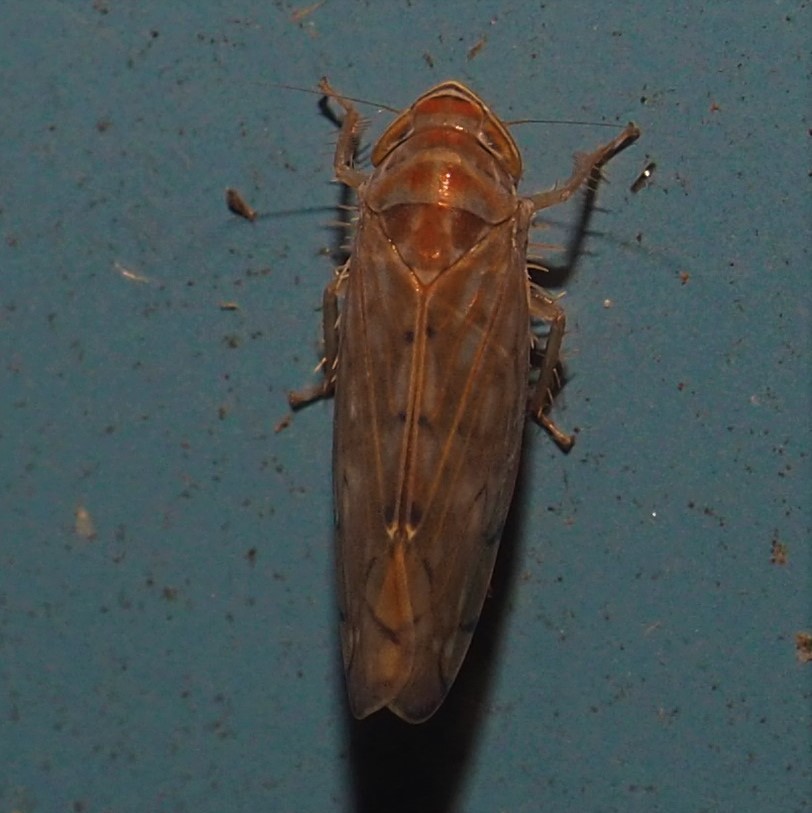
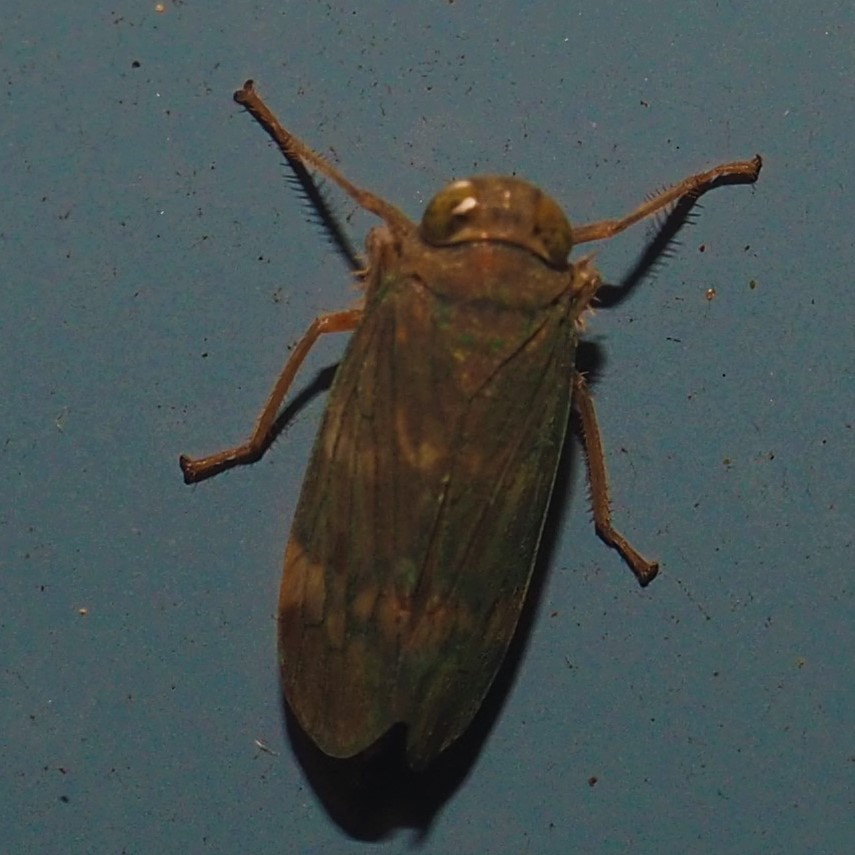
We finish our summary of the Bugs of the Week with two more: a Stink Bug of genus Dendrocoris, and a huge delightful surprise for me. I hadn't seen any of the "kids" from the colony of Keeled Treehoppers since they all became Adults and disappeared. Picture 2 shows a group of new adults on July 30 of this year. Well, yesterday evening I had a strange thought that I needed more pictures of creatures in Goldenrod - it was about 7:30 Eastern, and getting dark. But suddenly I saw this bright brown Keeled Treehopper (picture 3). I'd forgotten how small they actually are. Anyway, the little fellow apparently was eager to escape the hand that was holding its goldenrod branch and HOP! it leapt vigorously into the Japonica. So our colony's offspring are alive and well and doing fine wherever they are.
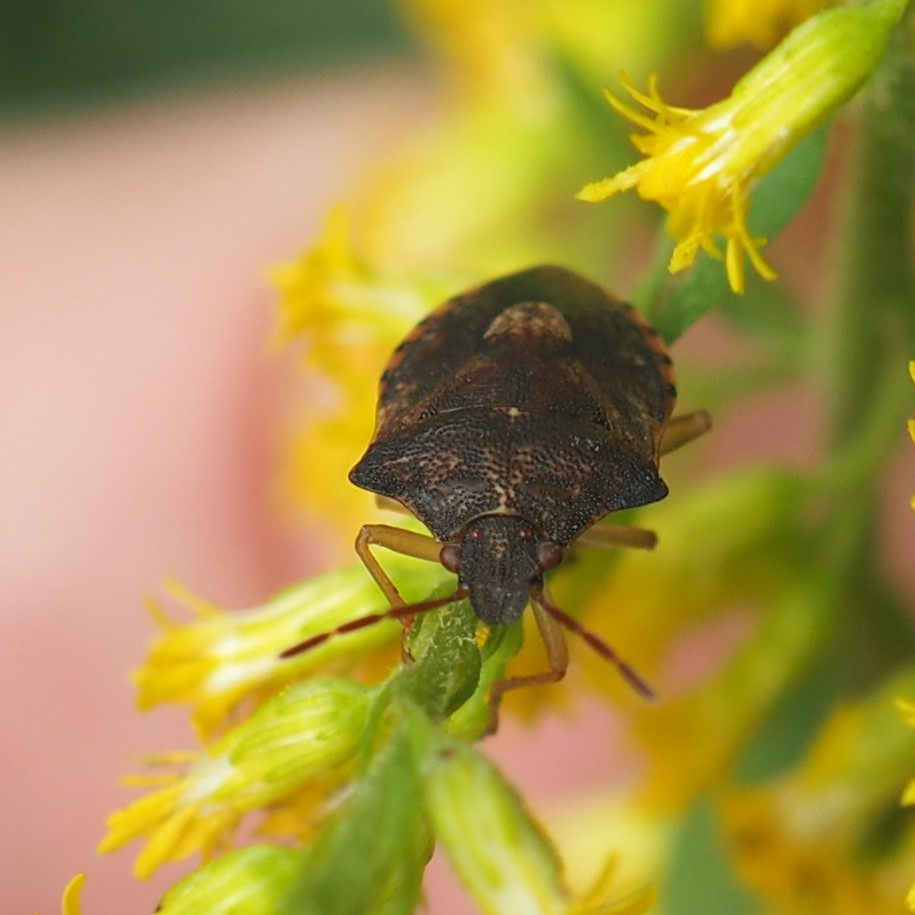
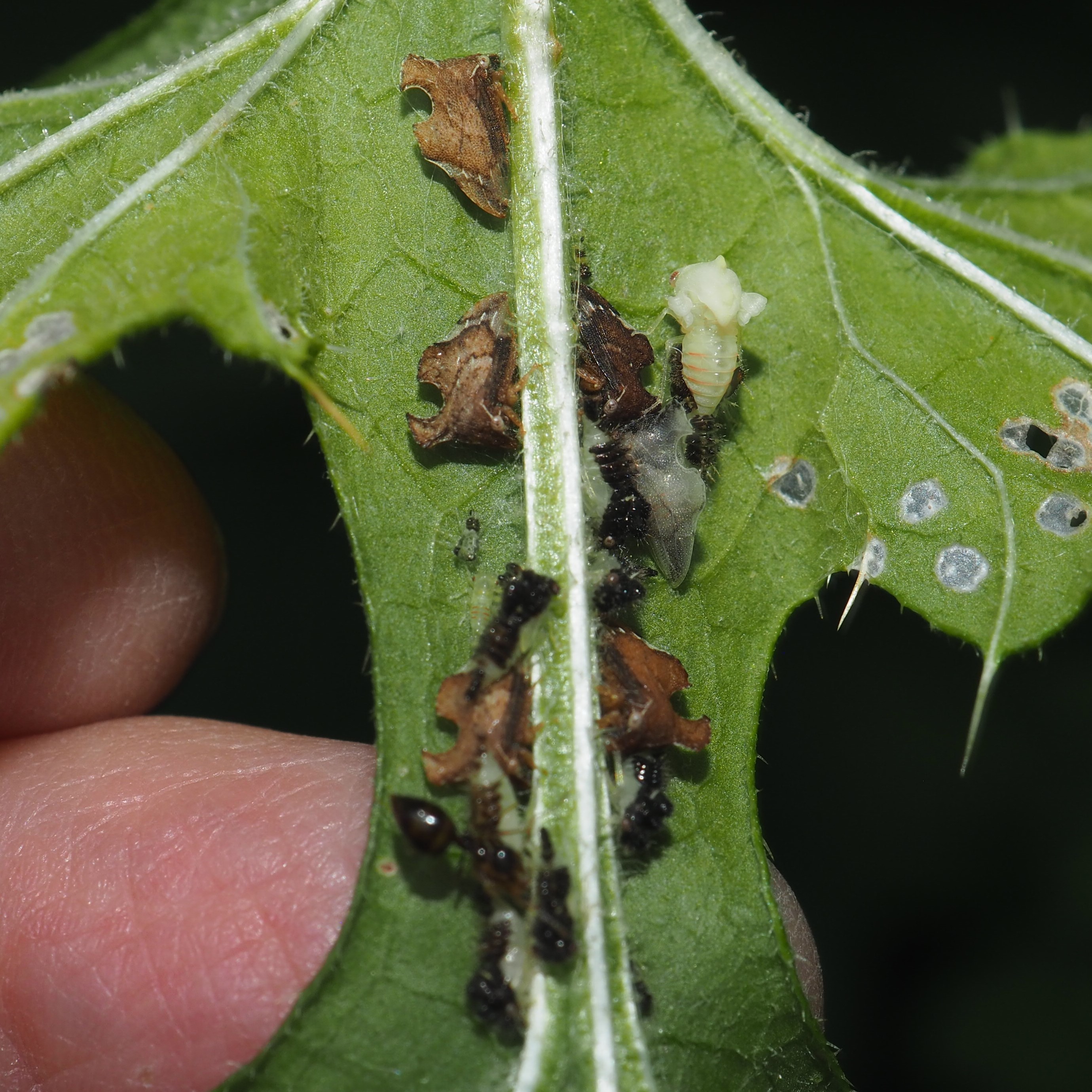
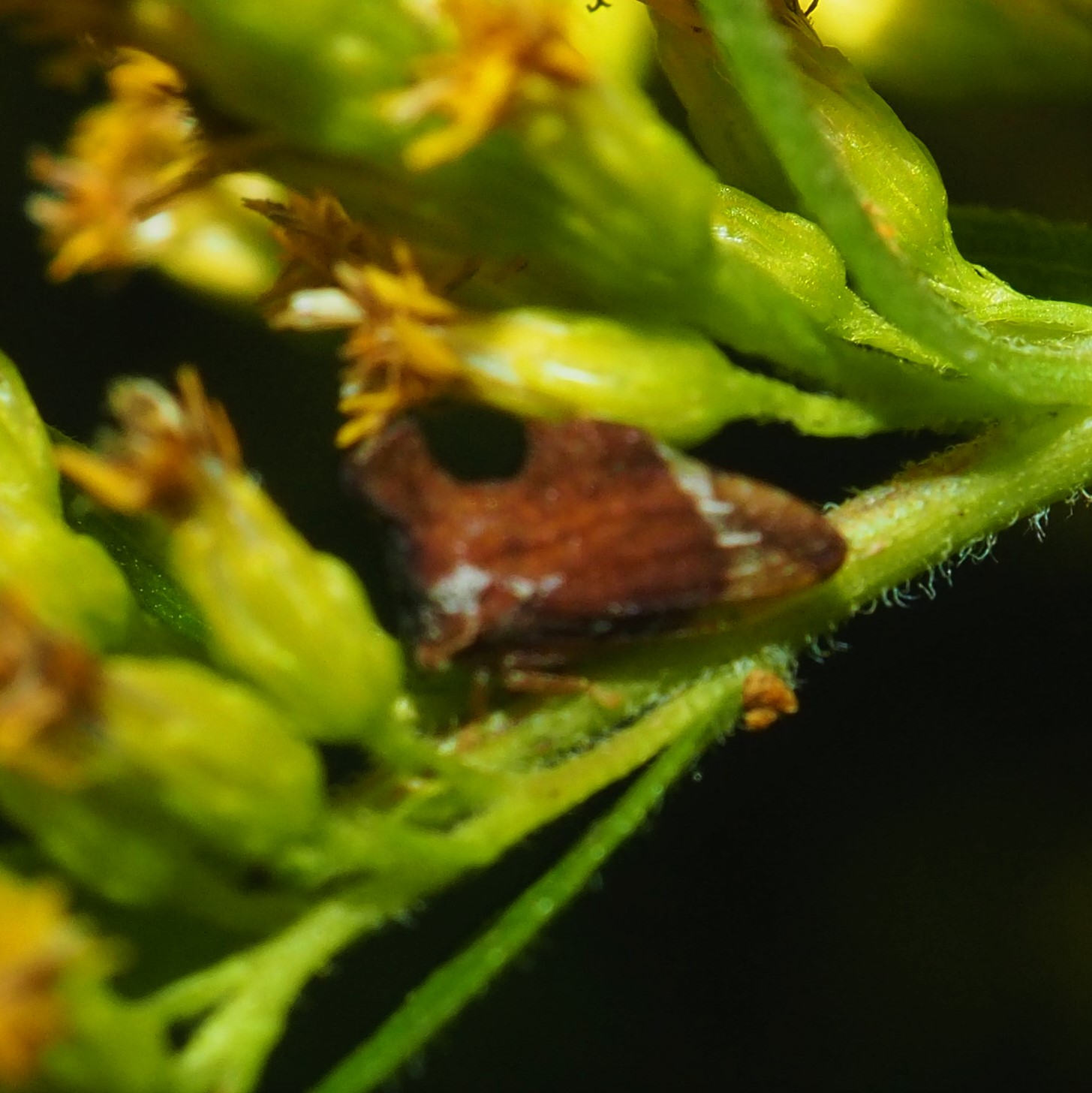
Let's check out our Barklice. Have you heard my rantlet about calling them that? Well, they don't eat Bark and they aren't Lice. The Ectopsocus meridionalis are at their height of egg-laying. Nowadays you can see a large several of them laying prodigious quantities of eggs. They operate a lot like the Graphopsocus cruciatus that I showed you a video the other day - they lay their eggs and then silk over the nest, but unlike the Graphopsocus, they are shy and if you get the camera close enough to focus on them while they're moving this way and that, they will suddenly stop and do no more work until that big lens goes away.
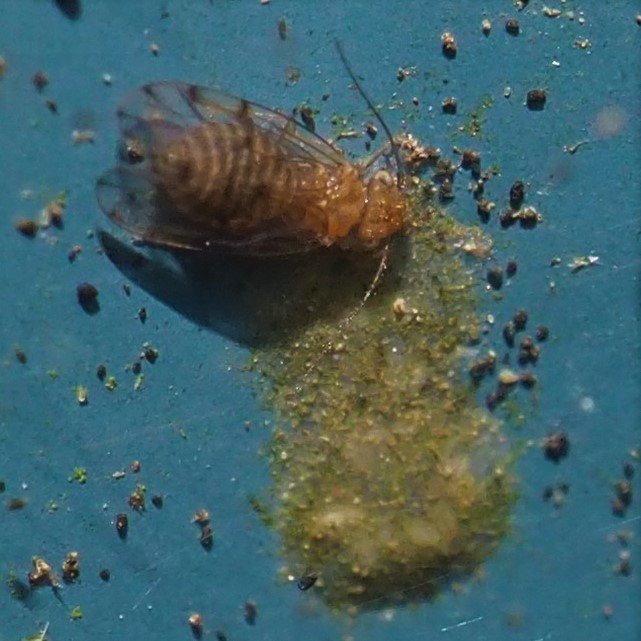
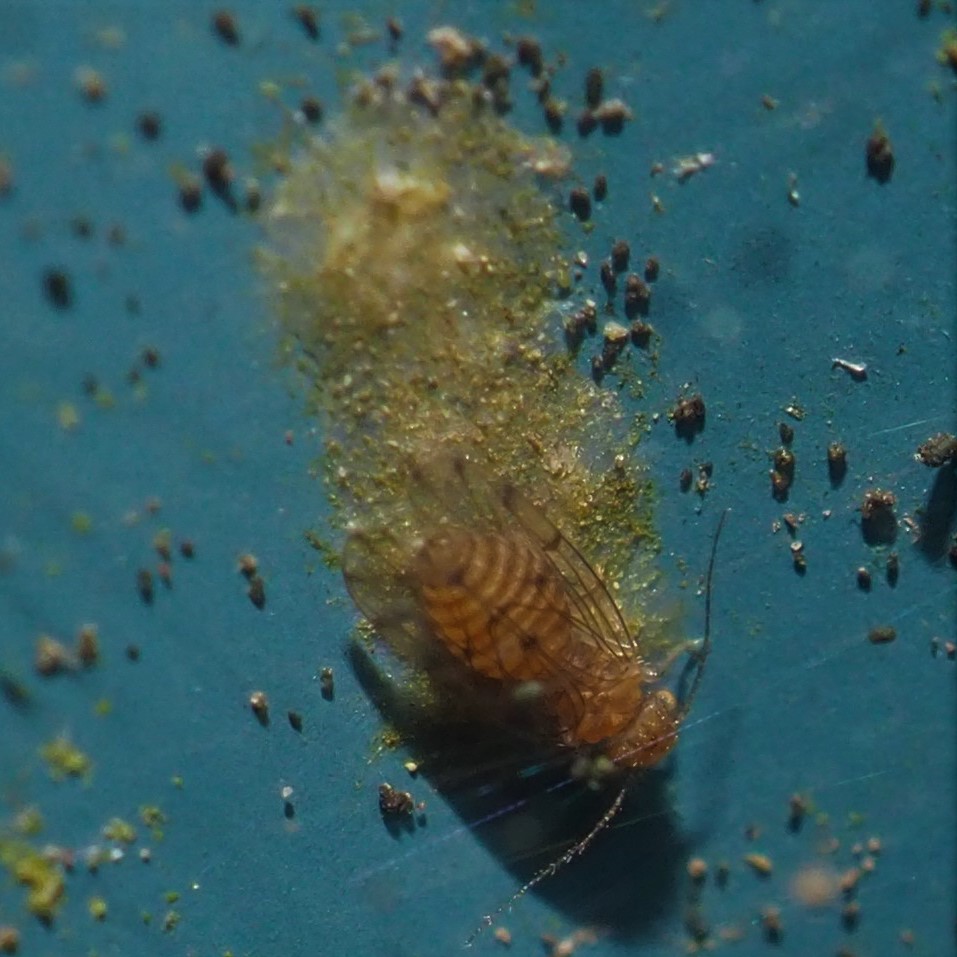
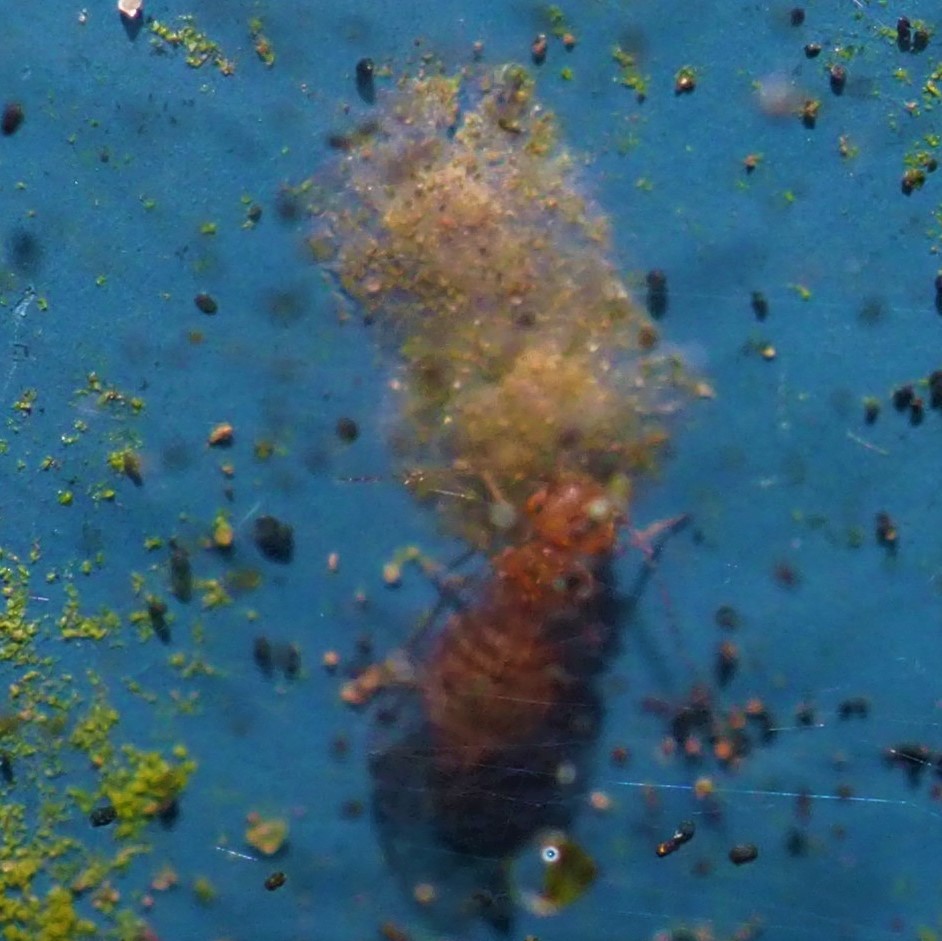
All those Polypsocus corruptus nymphs we saw last week are now adults, who are capable of running thither and fro at quite amazing speeds. They are also a bit larger than most of the other Psocid adults we've seen. So here is a remaining nymph, and two adults.
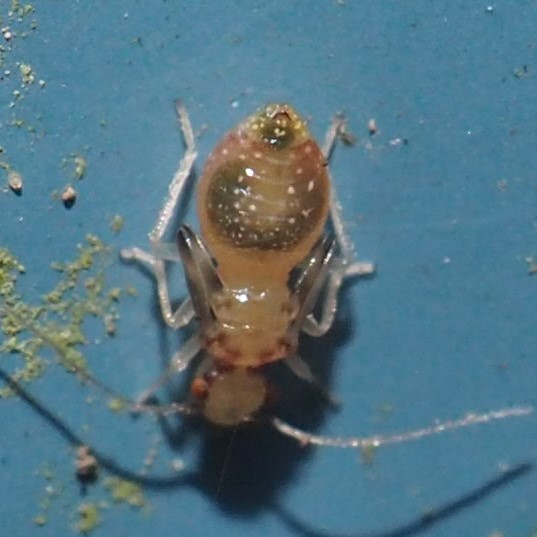
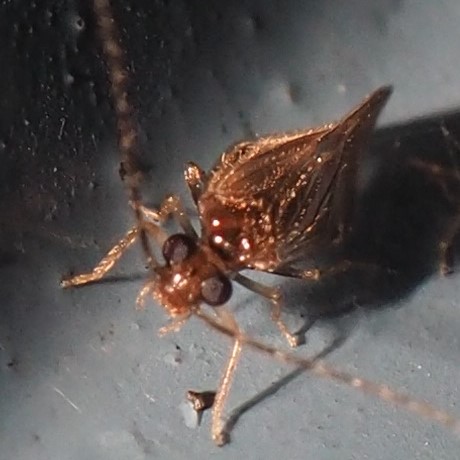
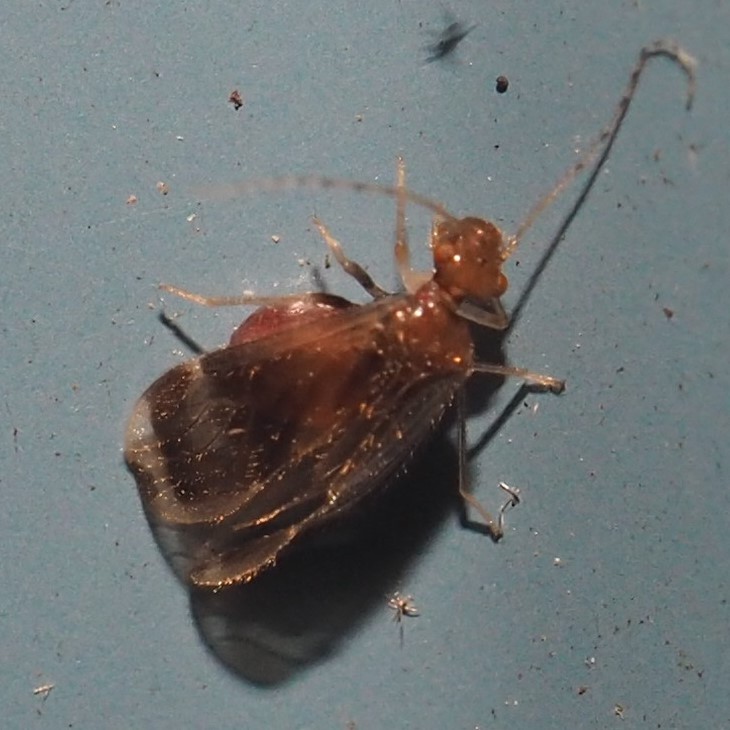
The Graphopsocus cruciatus adults are fewer right now, but their egg masses are everywhere. And oops! Here come the hatching nymphs!
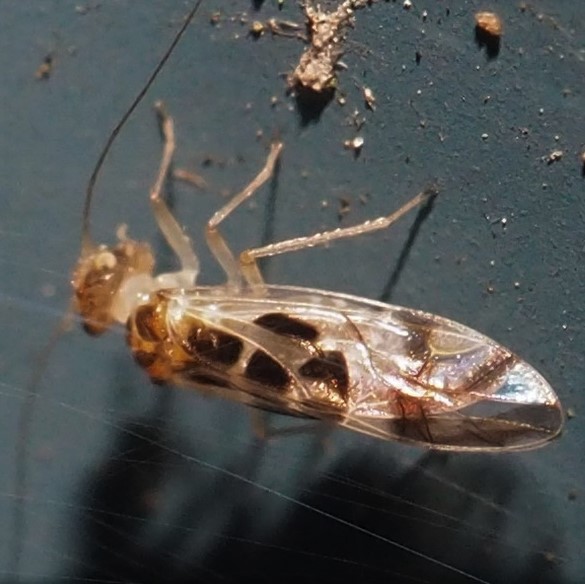

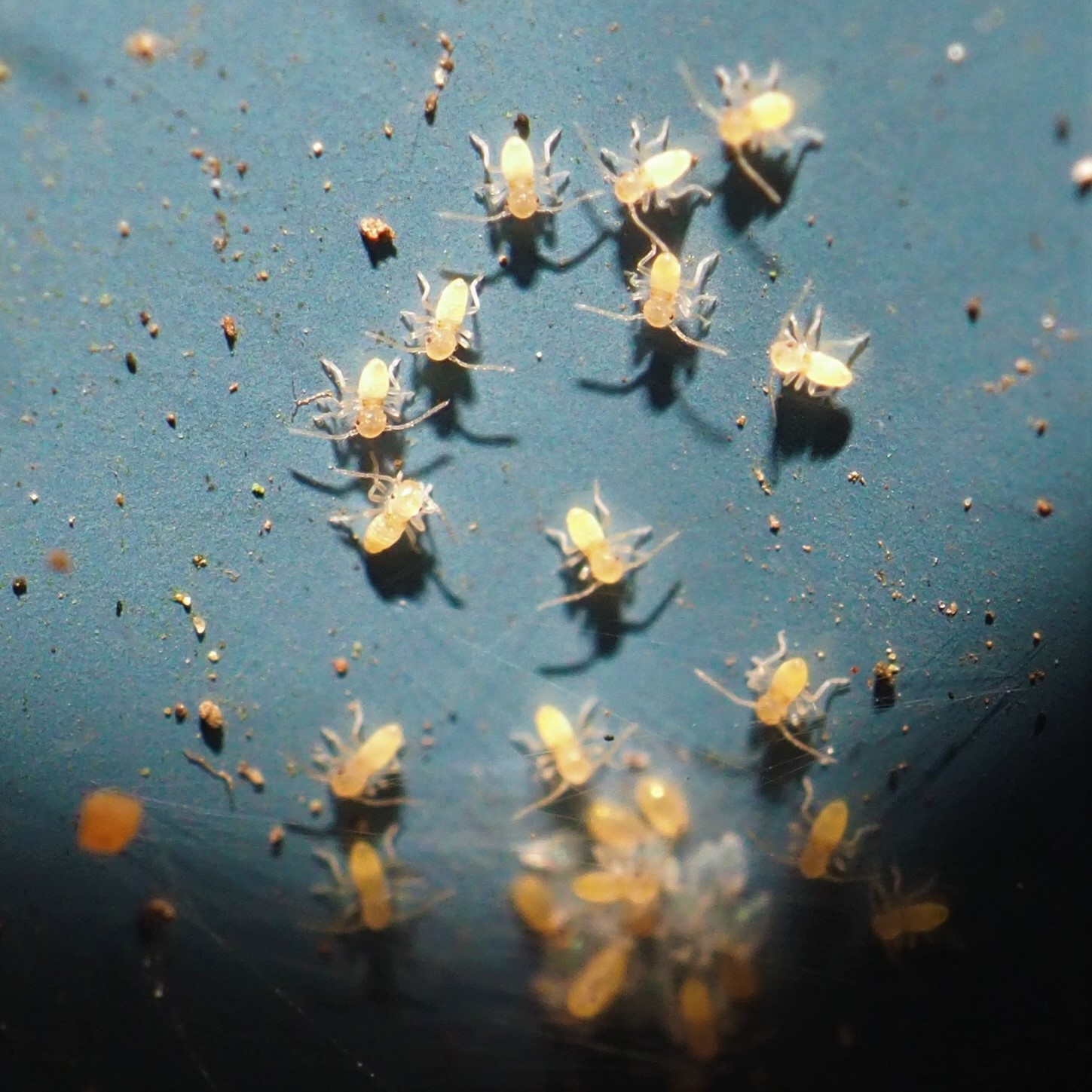
Those Metylophorus novaescotiae nymphs have continued to become adults and about now it is hard to find a nymph. But these adults are fairly common (though a lot of them have flown off).
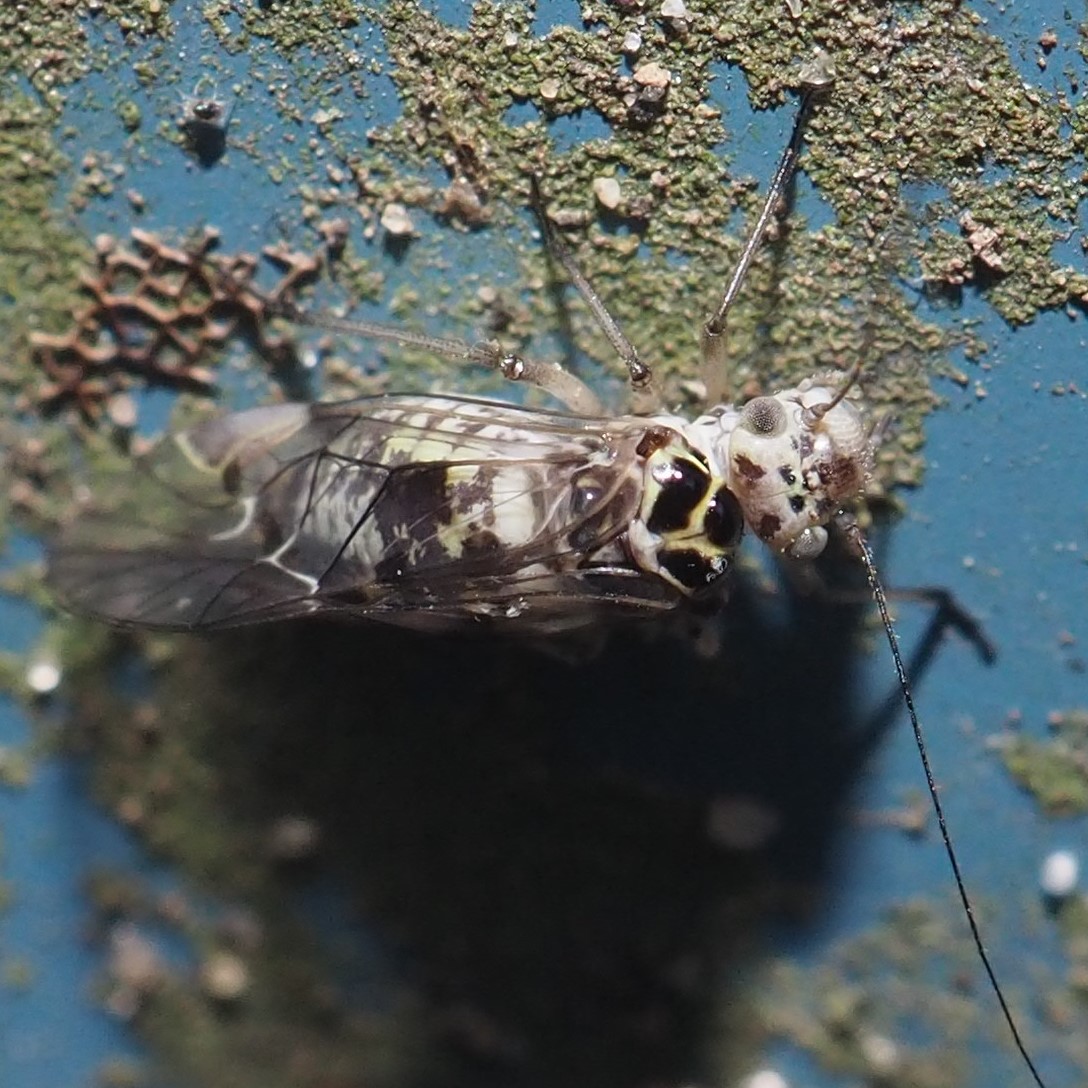
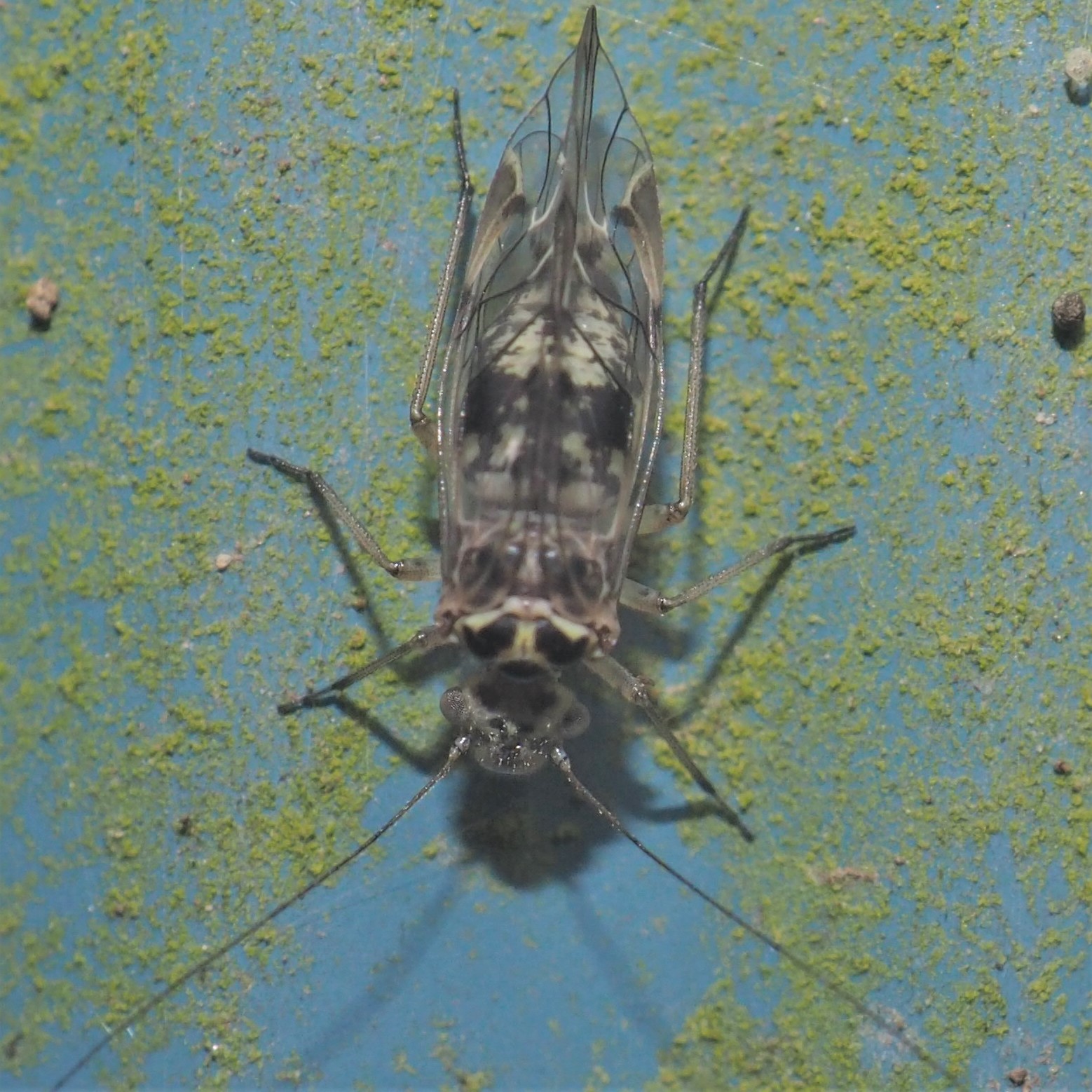
As for the "encrusted nymphs", I believe I've now seen the last of them for the season. This week Jean-paul (picture 1), "other a", "-b" and "-c" have all turned to adults. I have just sent off the two that didn't fly away to Diane Young in Texas. They got there and will need some straightening out after their flight in vials but I believe if anyone can do it it's Diane. Anyway, I'm happy to say that we now have a life history of these amazing "balls of debris" and the end of the story is that they all transformd into genus Trichadenotecnum. And that's why we don't see that genus' nymphs - they look like globs of substrate. Here we see Jean-paul on the 12th (picture 1). Next we see either "other a" or "other c" (they both converted at the same time) right after they converted to adults, quite colorless, which is common just after a moult. And finally "other b" as an adult. It's clear that the nymphs have been genus Trichdenotecnum all along. There are other genera of Barklice that also have nymphs that cover themselves with debris but I don't think we get them here. This has been a fascinating end to a short summer of observing.
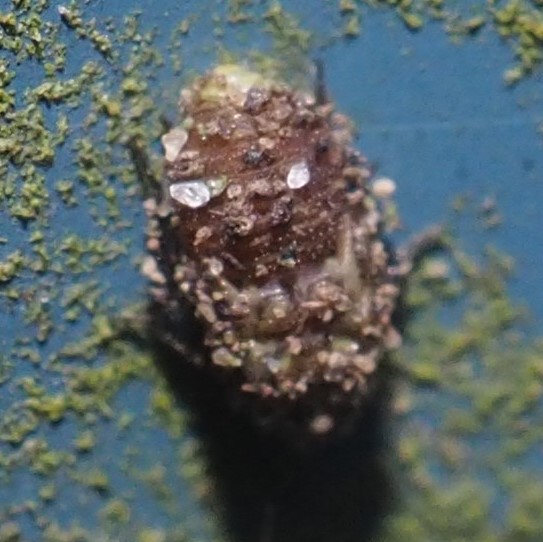
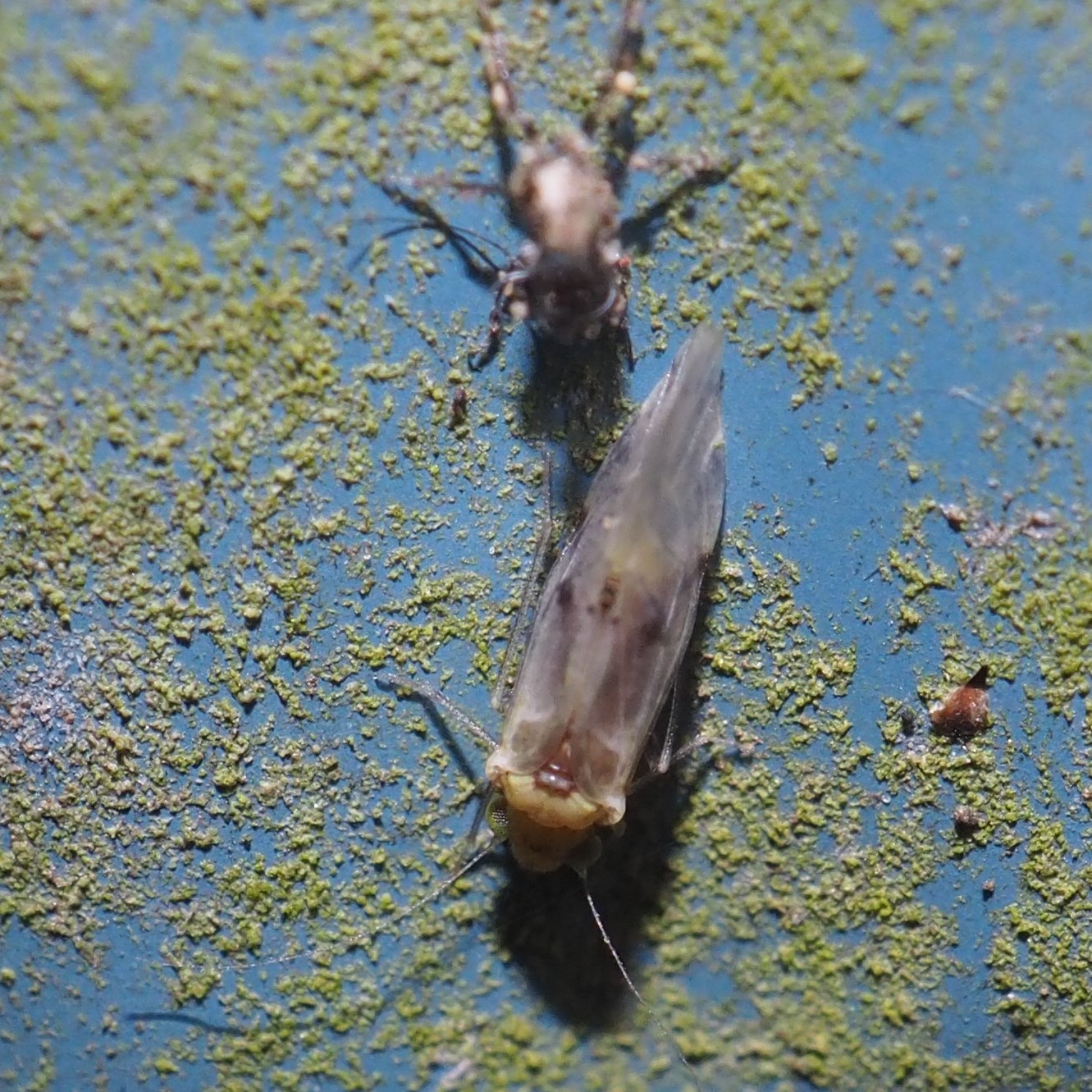
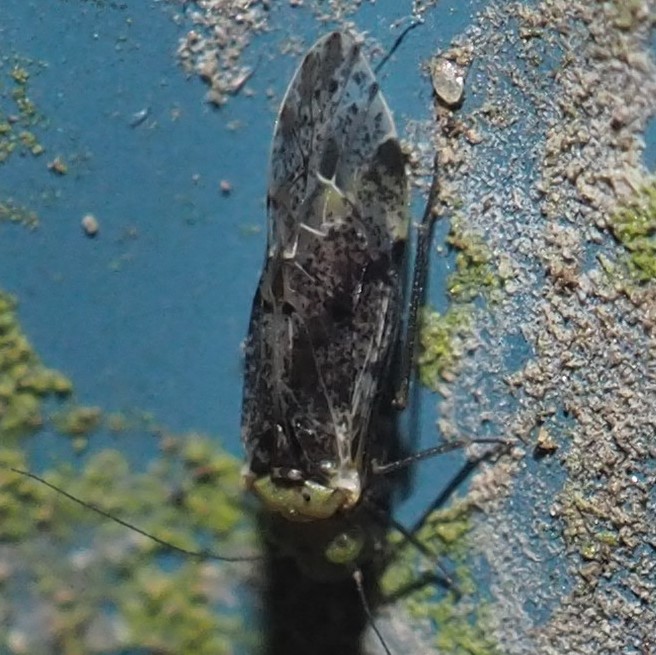
Oh! I found something new today. This little Barklouse is probably not something I've seen before.
Look at the markings behind the head, especially in picture 2.
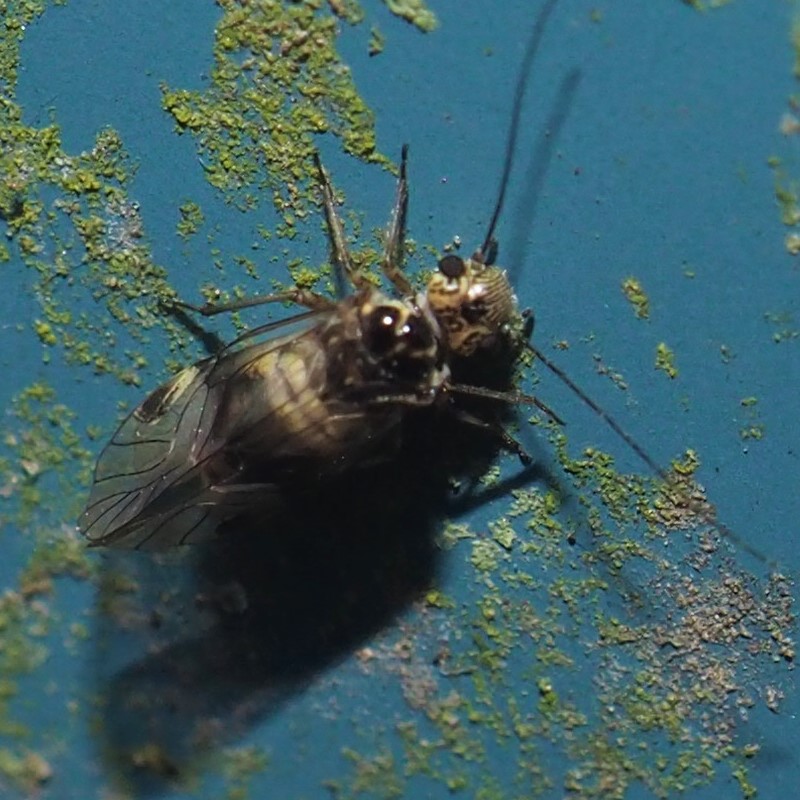
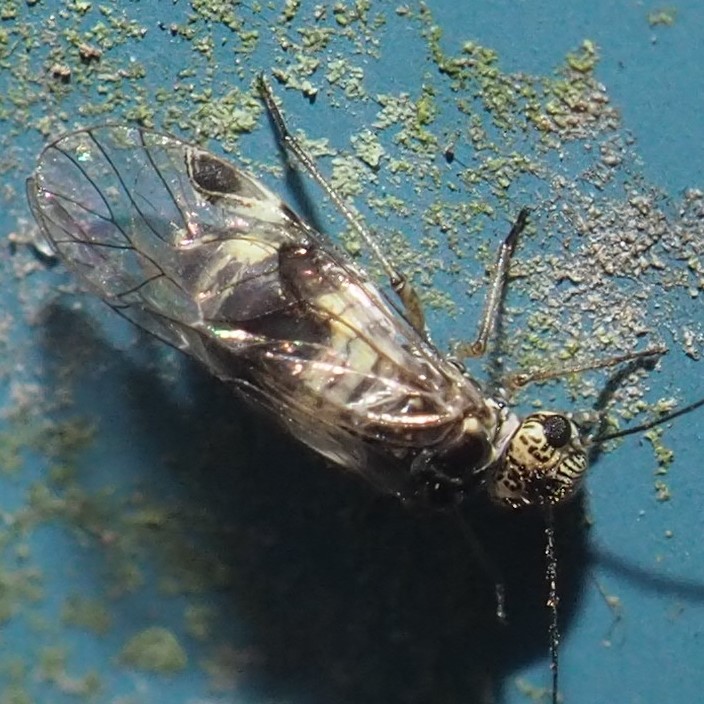
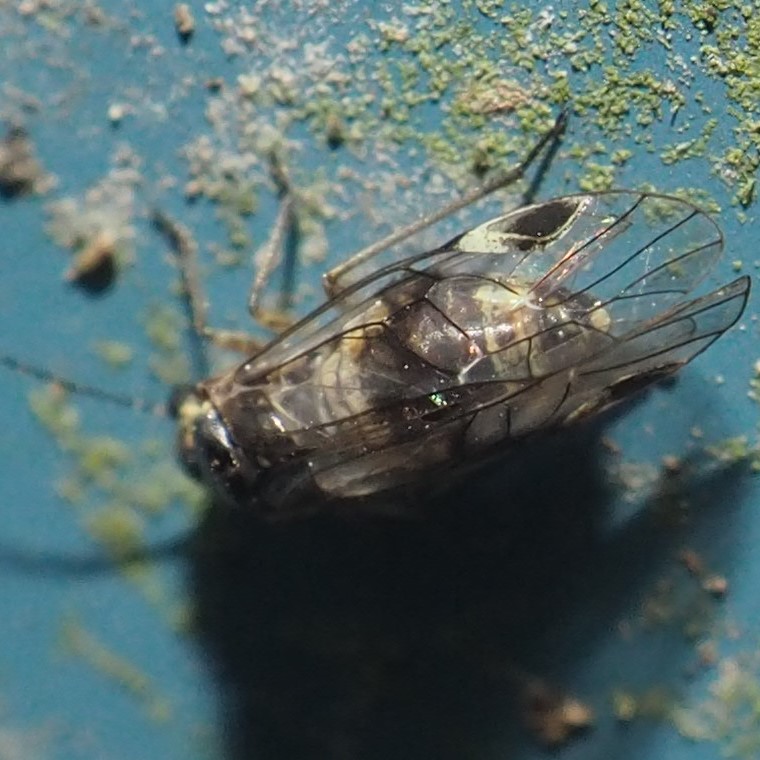
So let's turn to the Flies. Oh, first one I don't usually think to include in here - this is the European Earwig. Earwigs are very interesting - I've read that they are one of the insects who take care of their babies for quite a while after birth. Anyway, our subject here tolerated my moving of the foliage to get a better view and then expressed her annoyance by mooning me. How human!
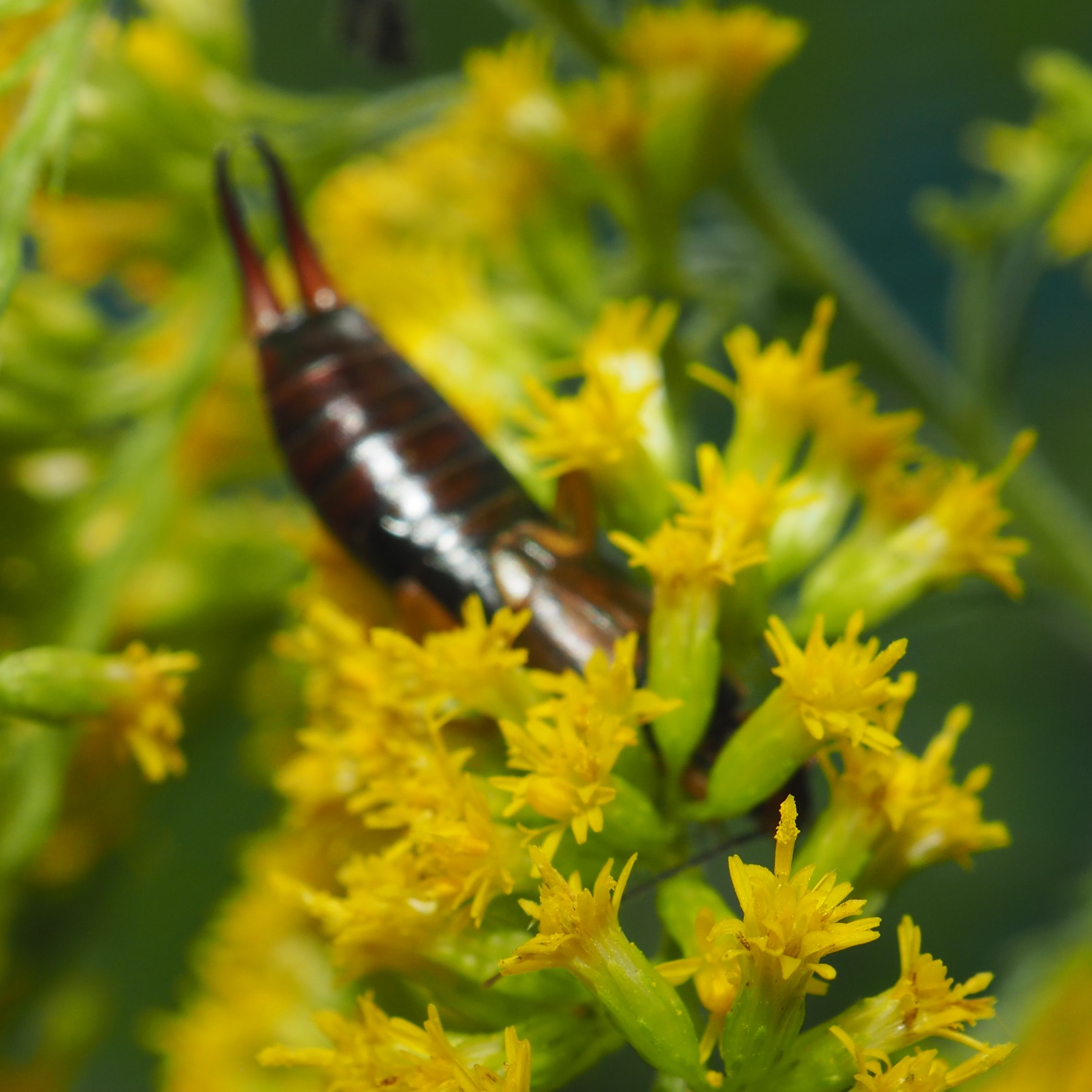
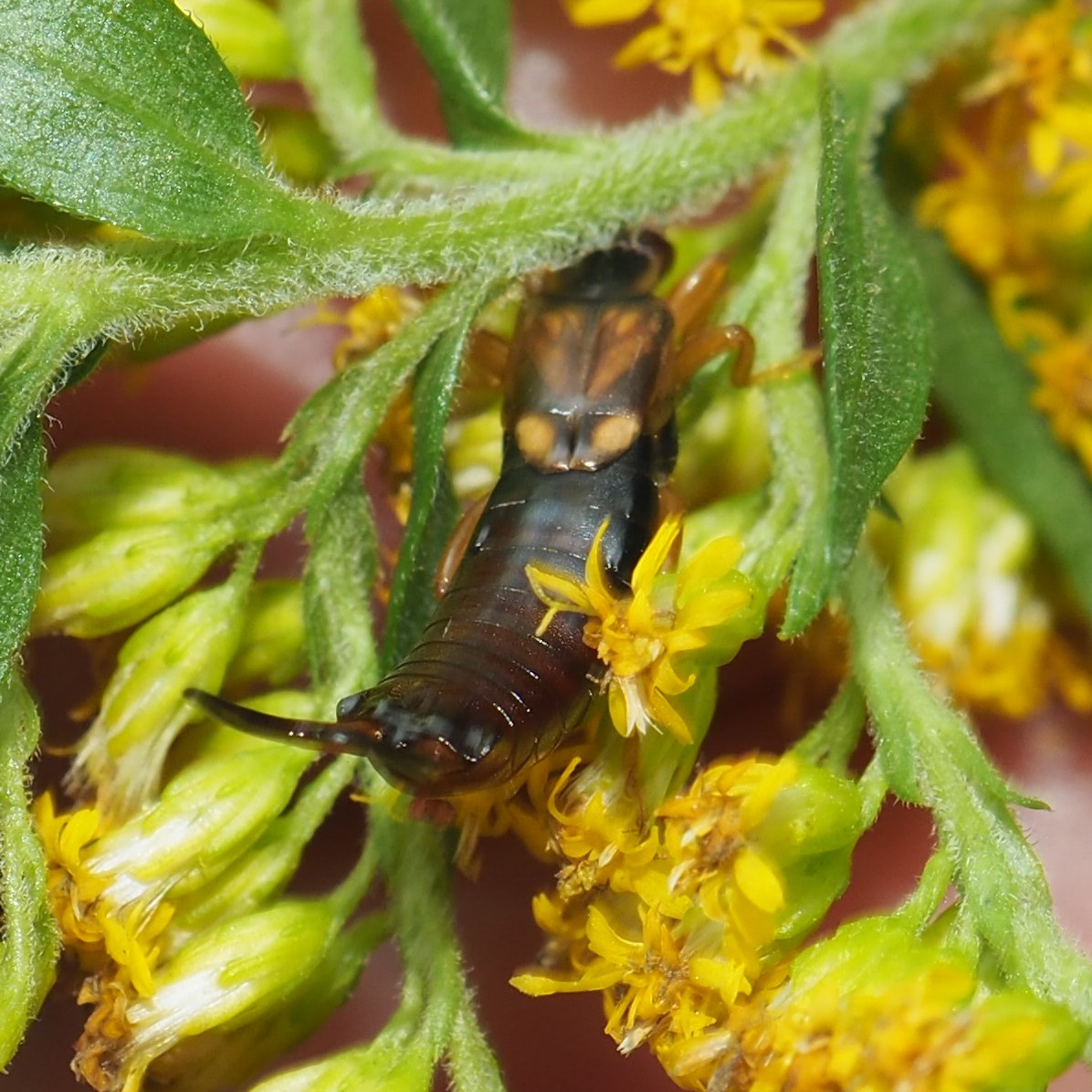

So NOW, here are some of the Flies I've seen this week. First, as usual, is a Crane Fly. But what a Crane Fly! Picture 2 is a cropping of picture 1 so that you can admire the Wings.The wings look as if someone painted abstract patterns into them. And finally - a Hover Fly that we can identify - the Narrow-headed Marsh Fly (Helophilus fasciatus). This is one of the Hoverflies that lay their eggs in the pond, which eggs hatch into larvae that clean garbage from the Pond, Nature's little garbage persons. They are also rather people-averse so this picture was taken from a few feet away.
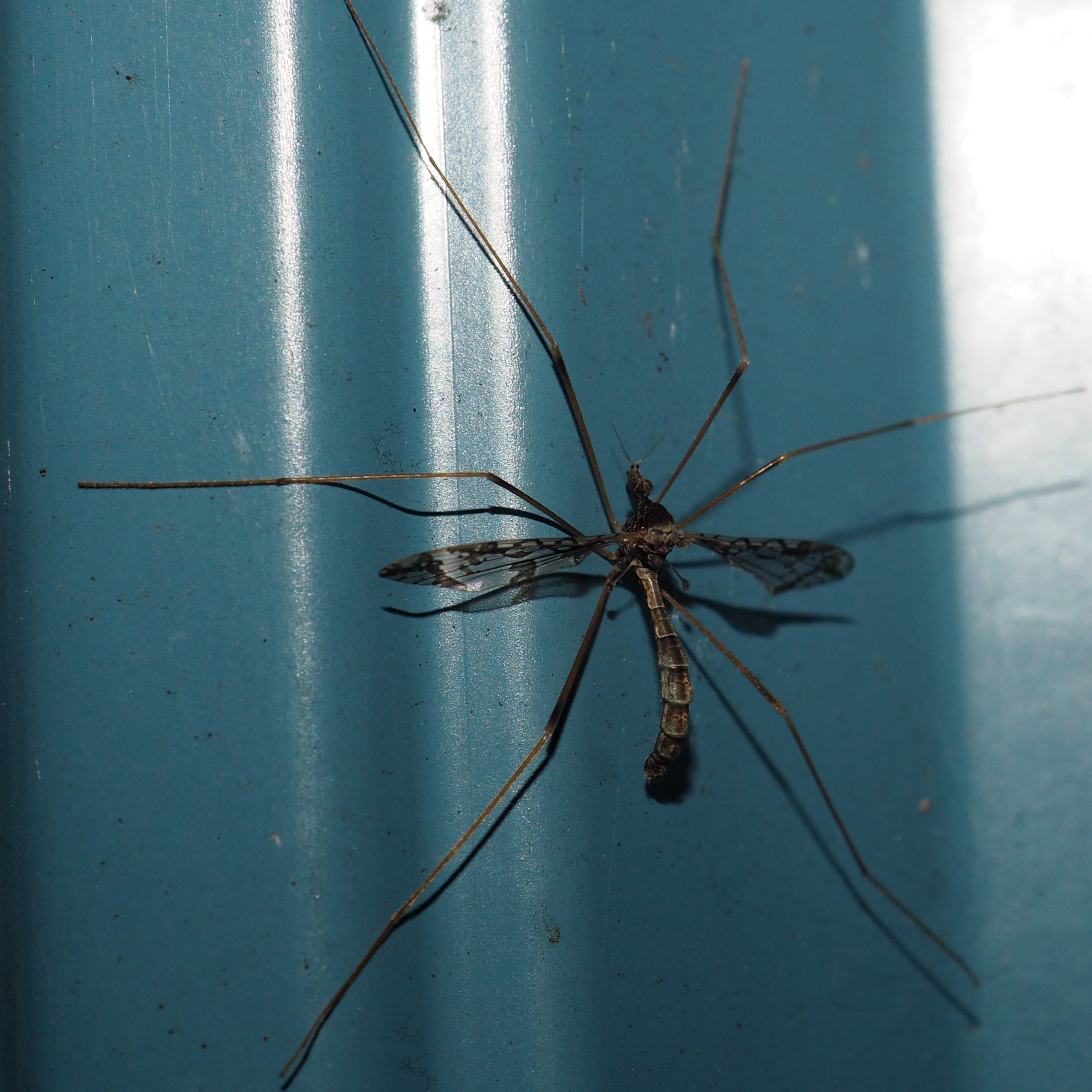
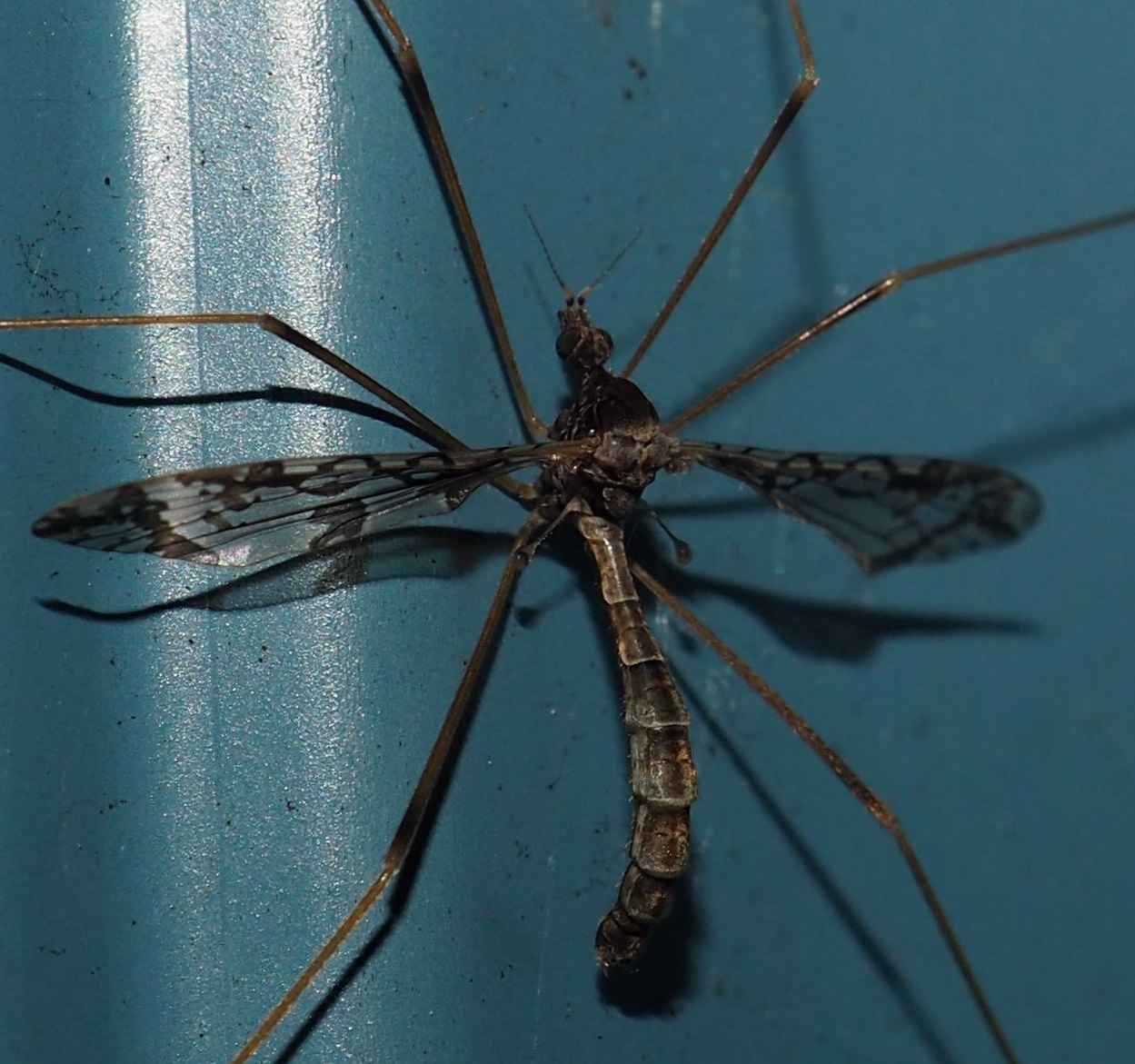

Here are a non-biting Midge (look how it holds out its front feet) and a real Mosquito, the Asian Bush Mosquito. Last is a very small Fly.
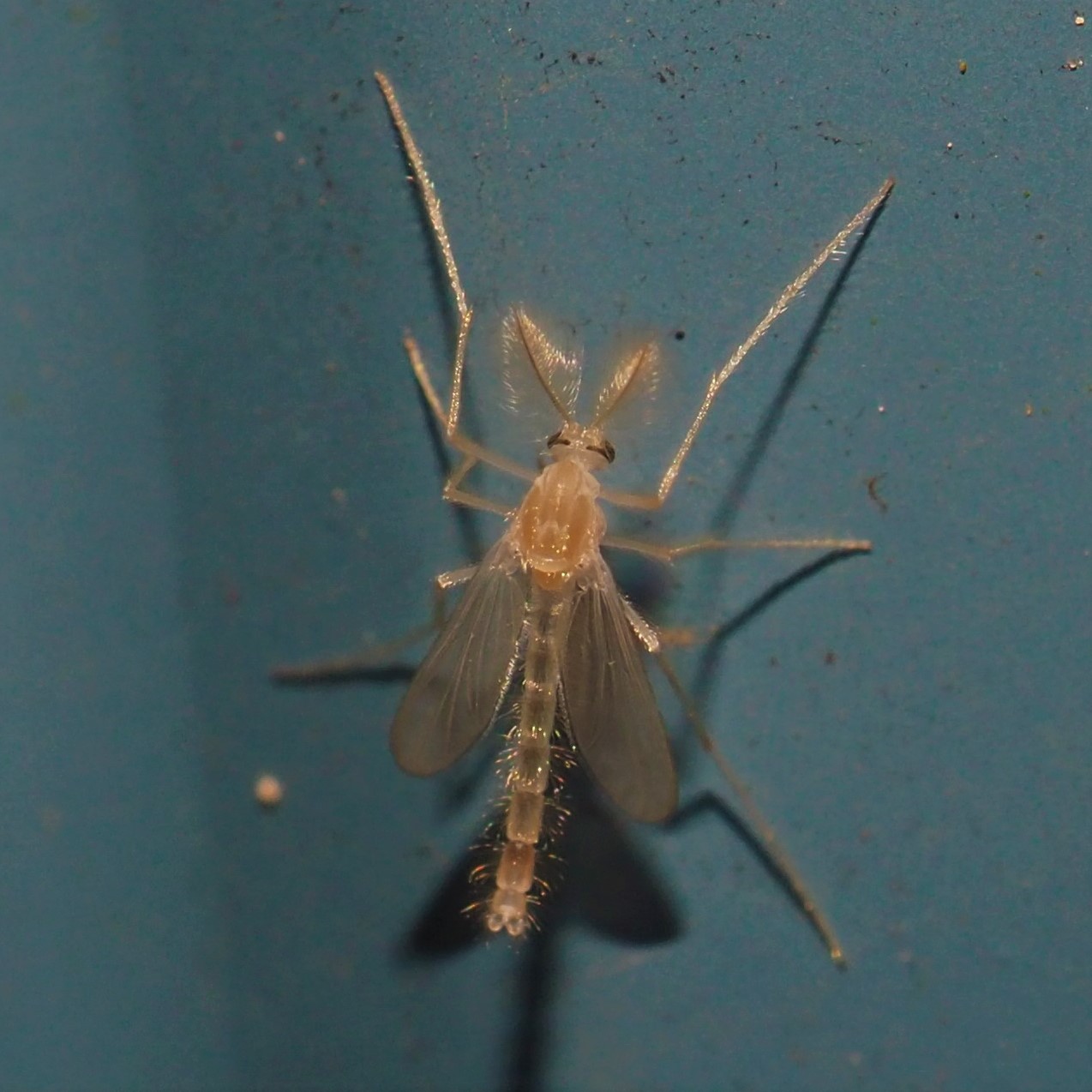
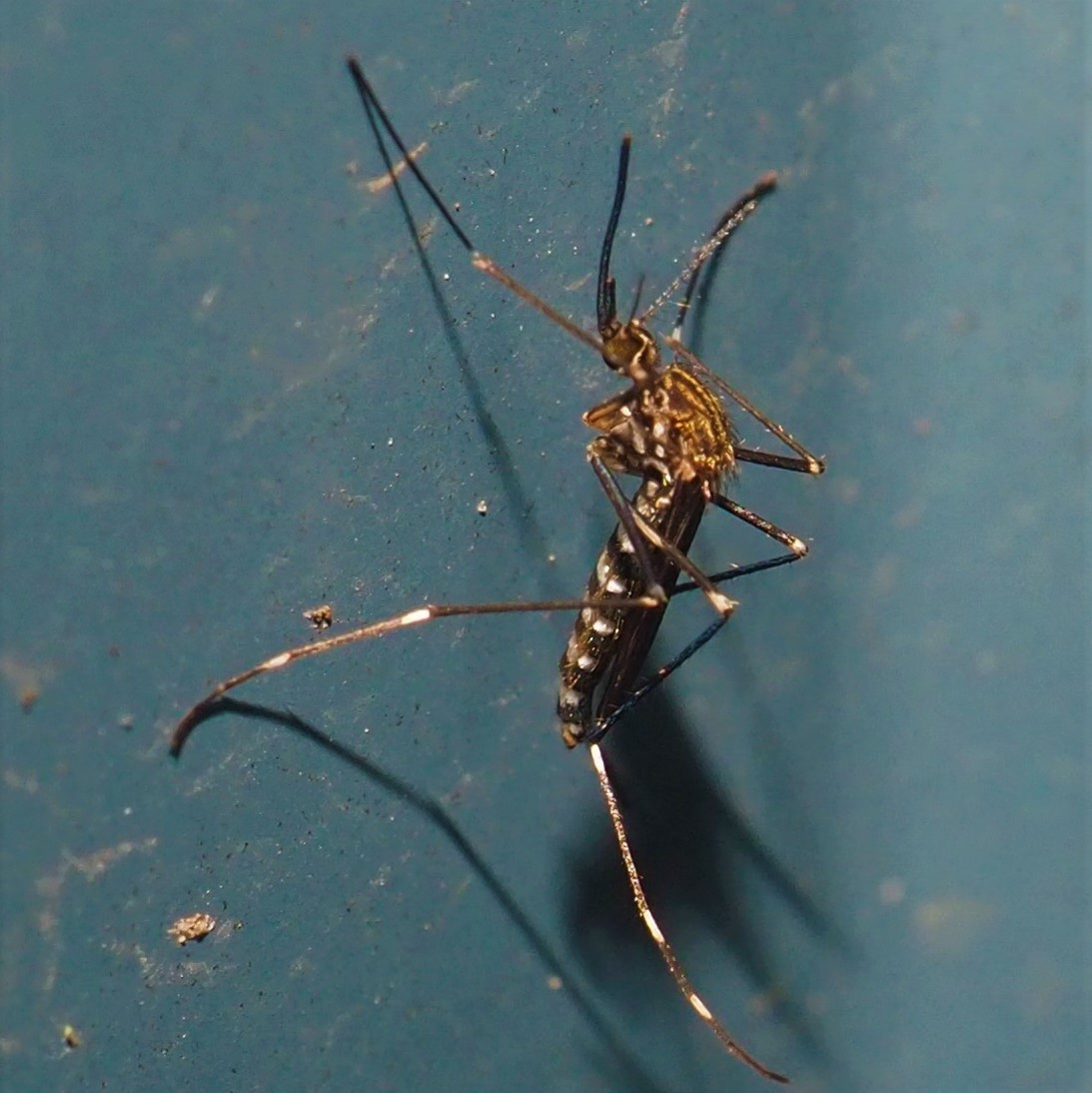
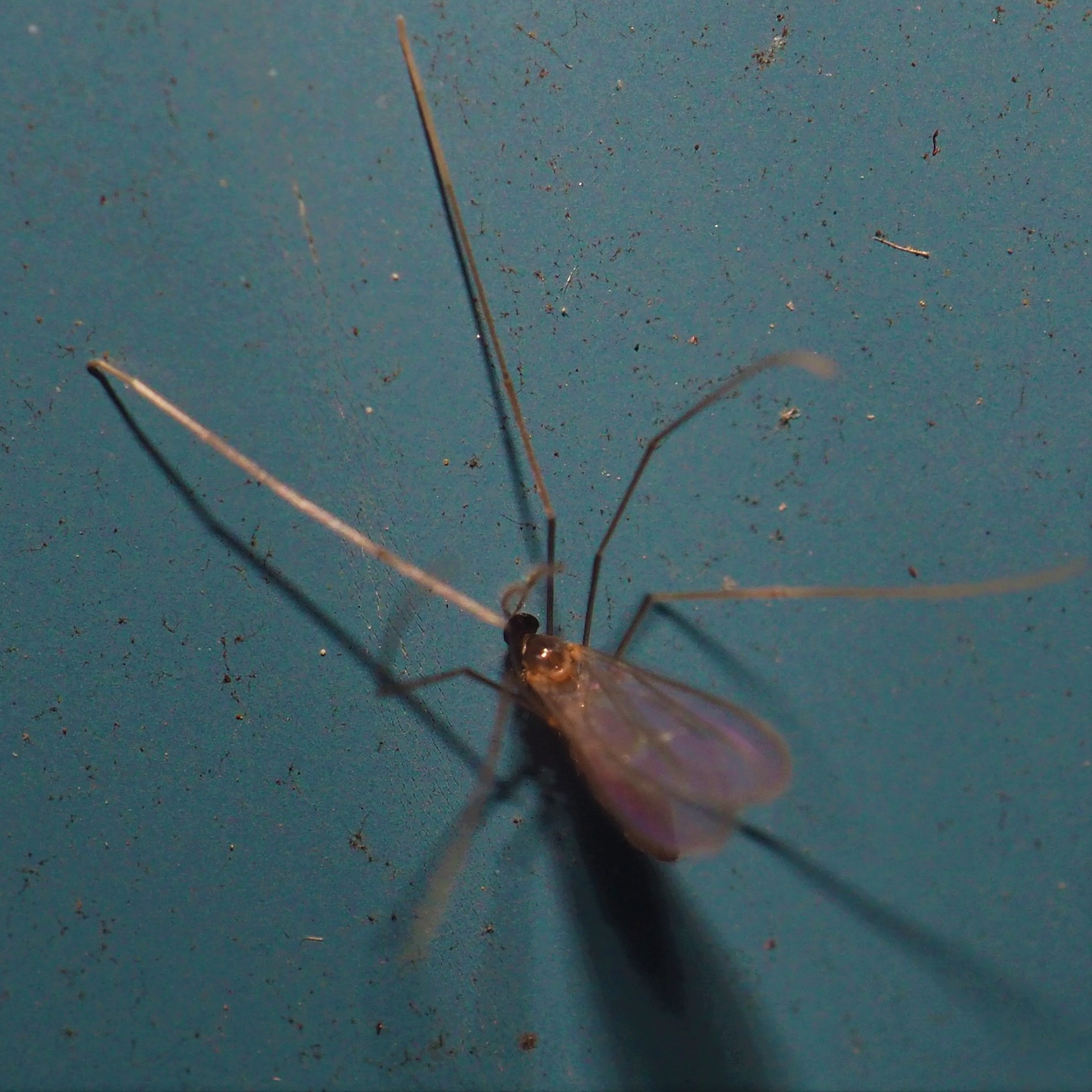
Here are three unknown Flies.
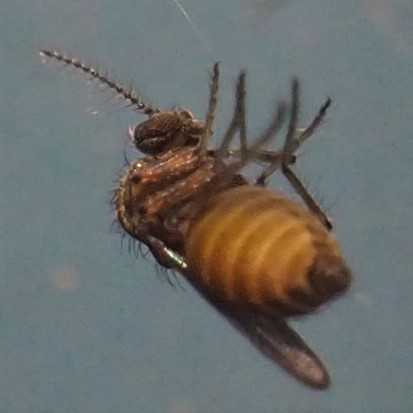

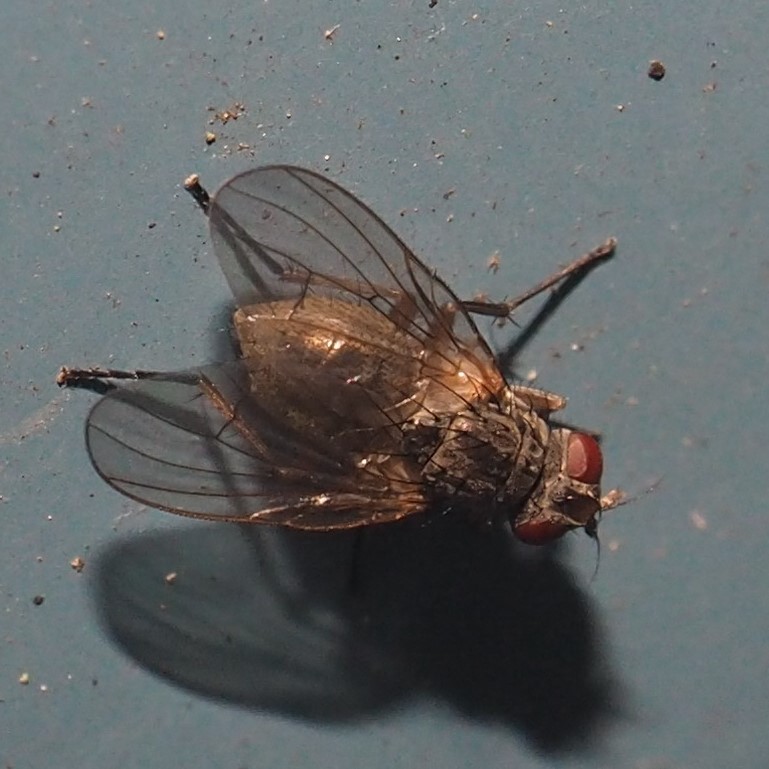
As we transition to the two little Moths I saw this week, here is that beautiful Bathroom Moth Fly. Second MAY be the same but it caught the light strangely, making it reflect that light in a very beautiful way.
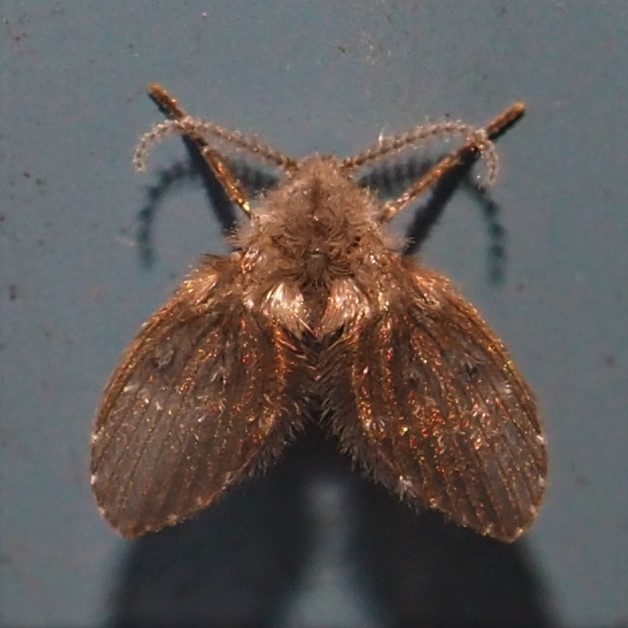

We had three tiny Moths.
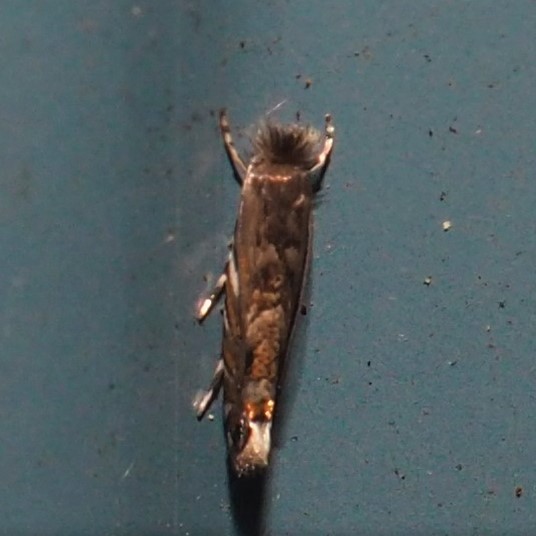
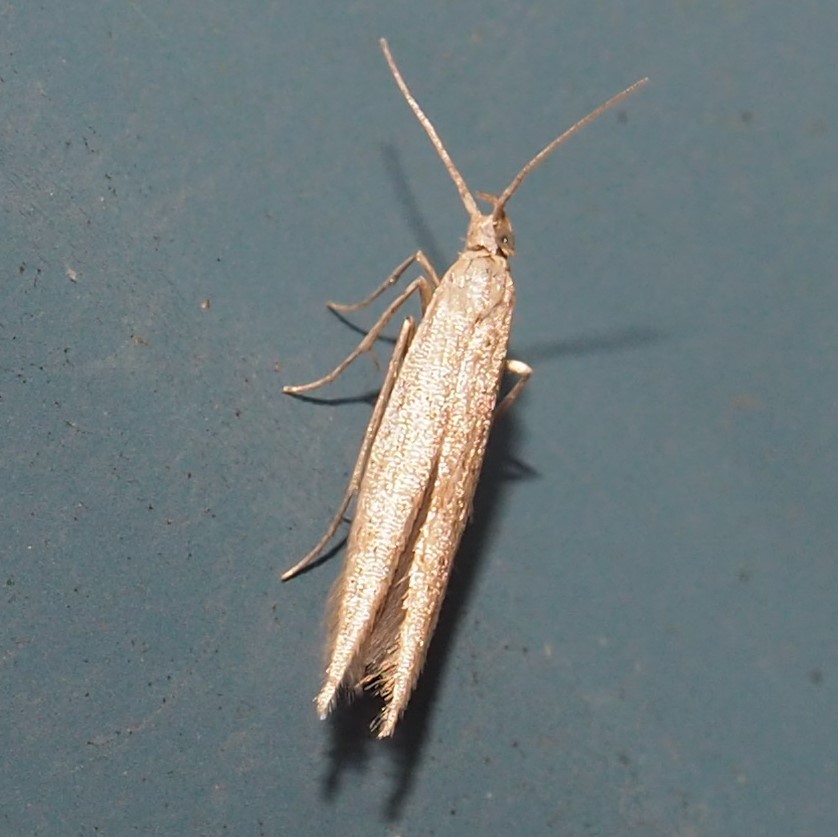
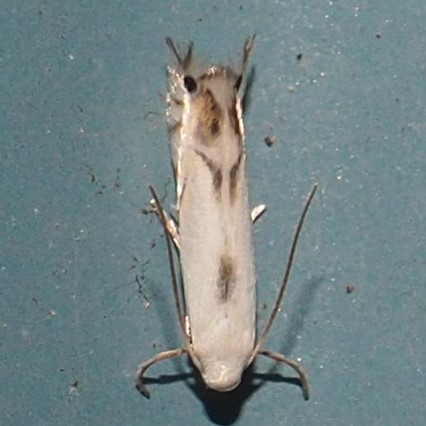
And that brings us to our ever shorter Flower Walk. Here is the Japanese Anemone, followed by the tiny Asiatic Day Flower and its fishy retinue. Last is that pop-up Spiderwort, probably truly the last of the season.
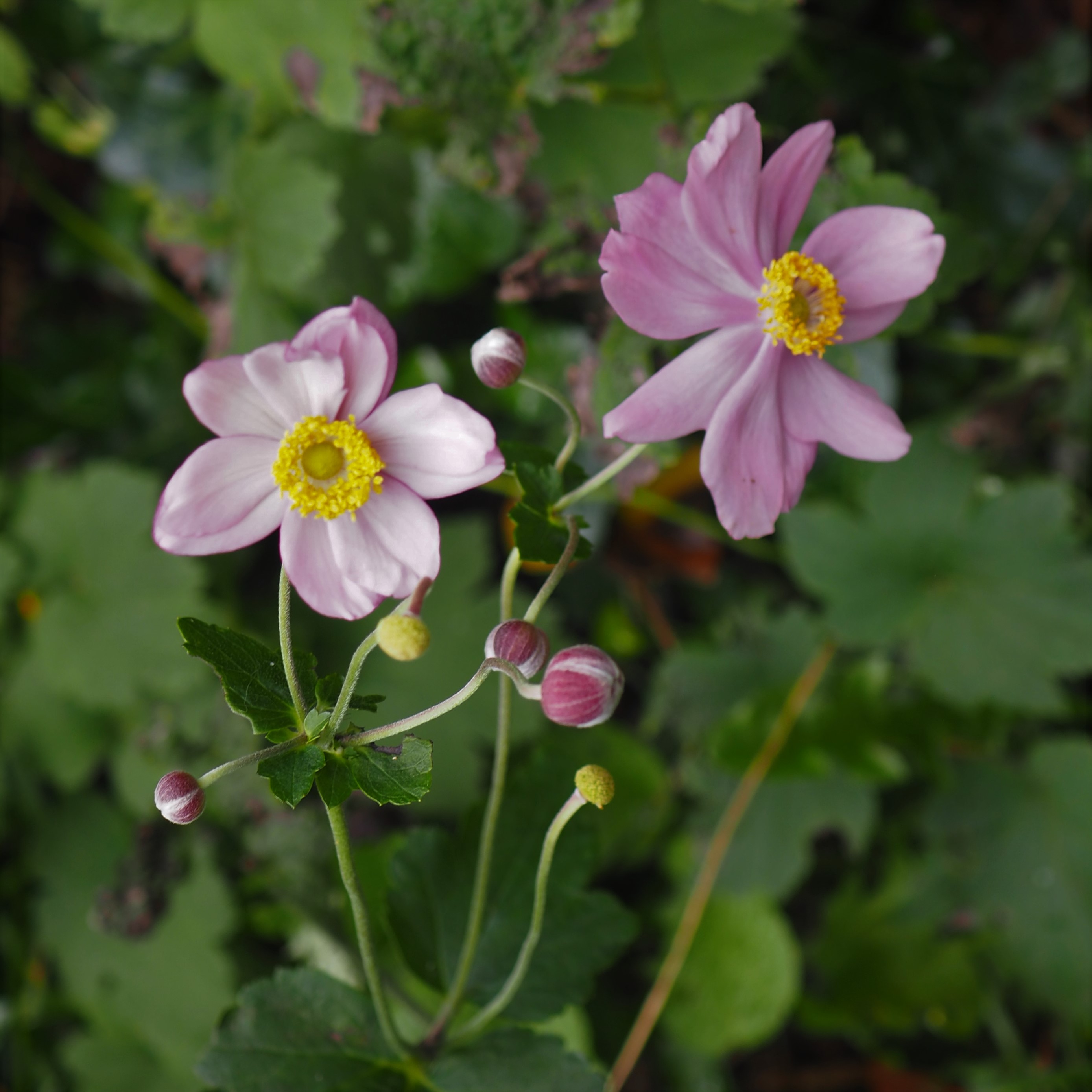
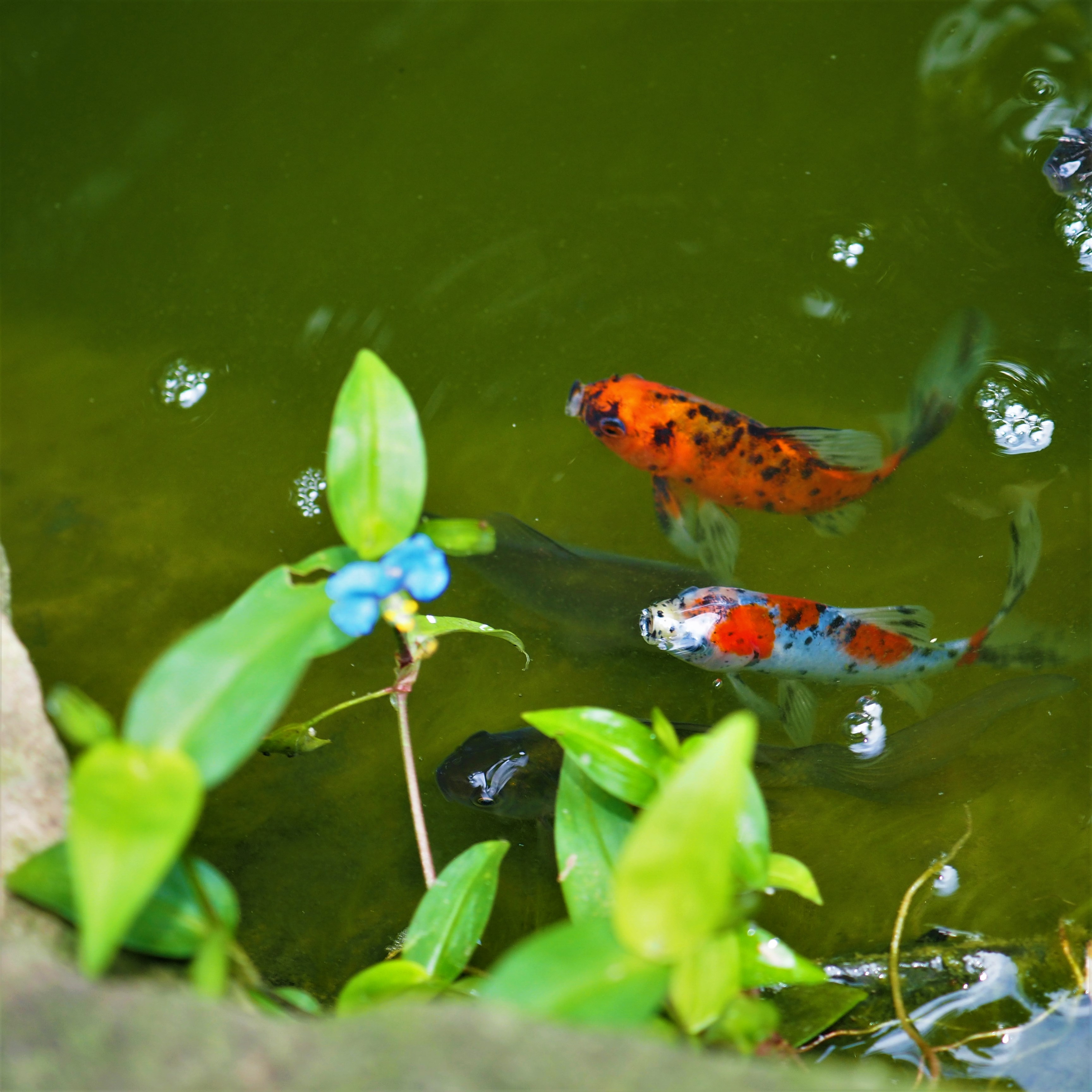

I'm in love with this shade of pink. The Asters responded by making lots of them! Of course, the purple ones are lovely too.


The cultivated Phlox are awesome as they bloom again, brighter and brighter. And although the Tall Evening Primrose are tapering off, they still fill our eyes with sunlight. Last, YOU might think this is cheating, but I'm counting these refruiting Black Raspberries as flowers, just because they are so bright.
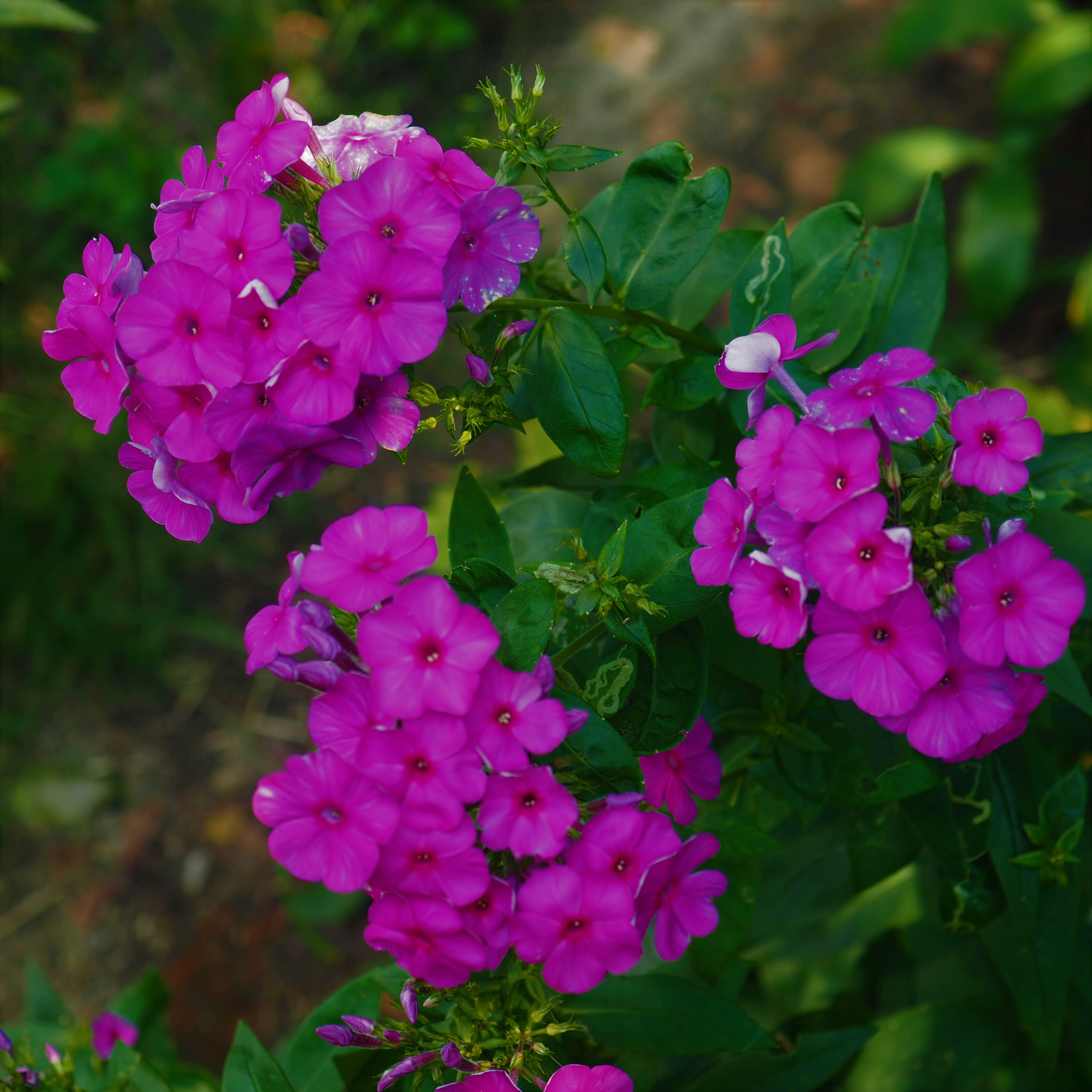
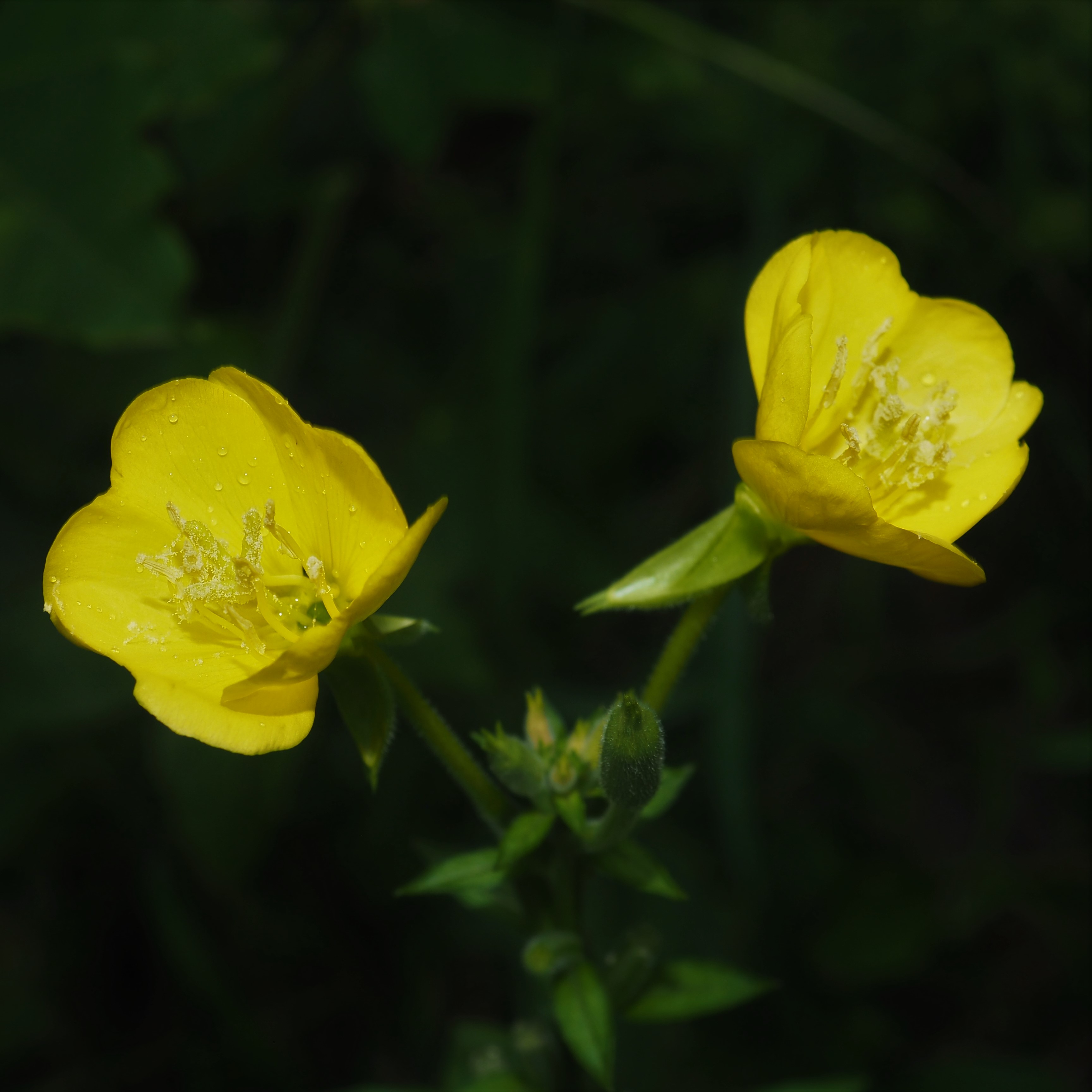
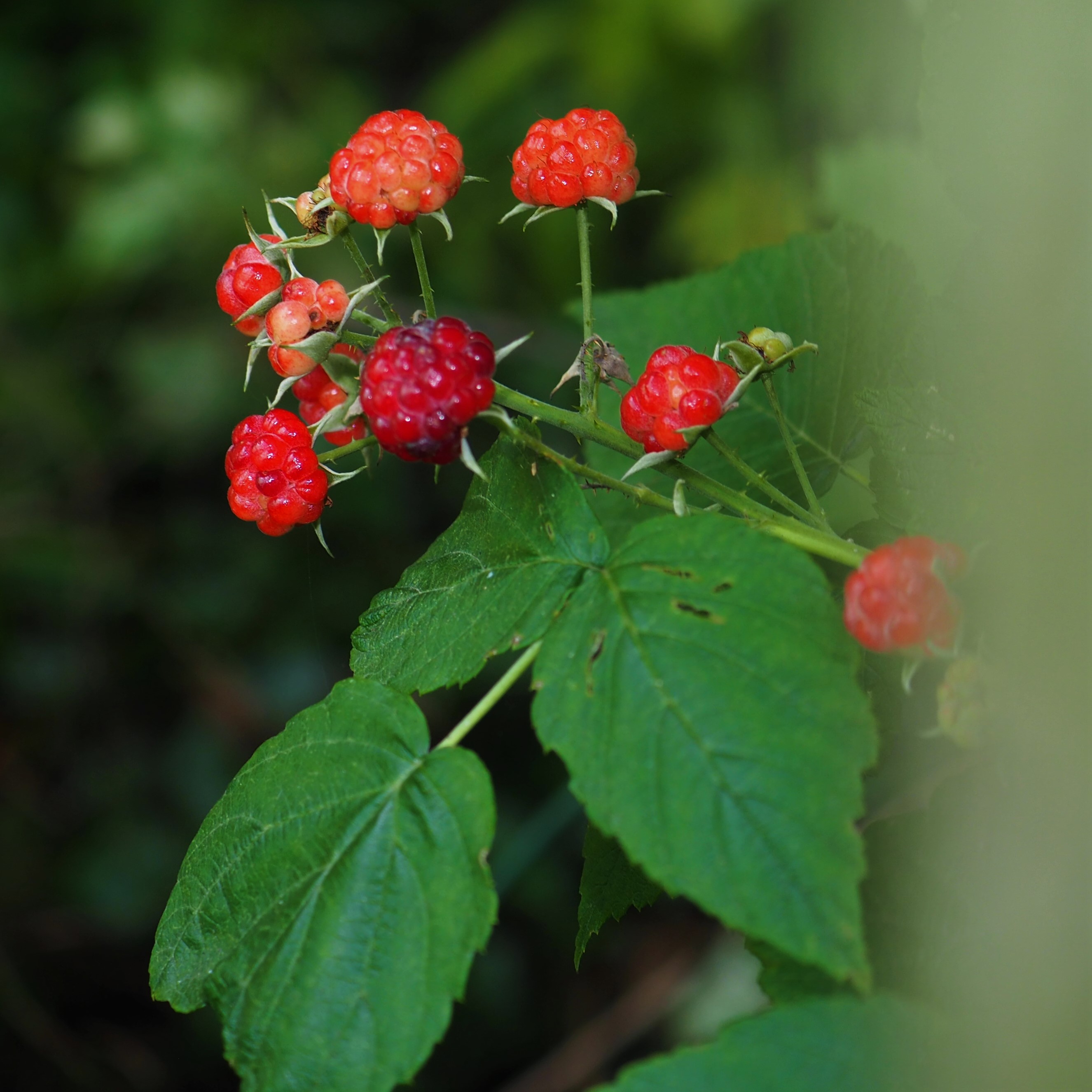
Oh my, that WAS a short walk. There isn't even a Lily in bloom, although one is almost ready and another is starting up underwater. But remember, we have those beautiful Spiders to account for.
The Cellar Spiders are still watching the area around the shop windows. And another Spider who won't show its face is also lurking around one of the windows. Third, a Grass Spider was running around the bottom of the kitchen cabinets when I came in yesterday. I hope it found its own way out.
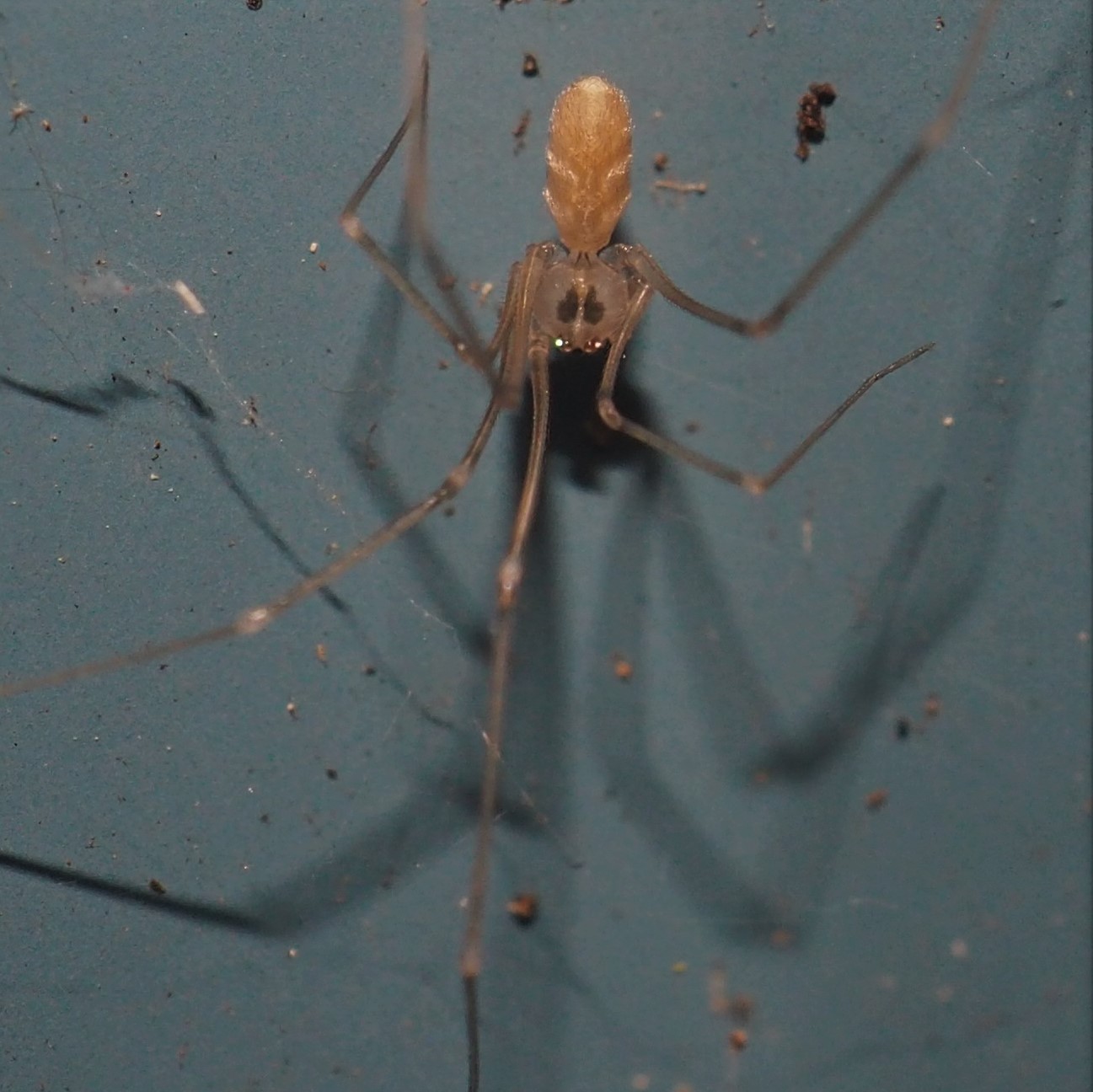


Here's a handsome Cobweb Spider. Too bad there are another couple who have been targeted by those Ephialtini Wasp larvae.
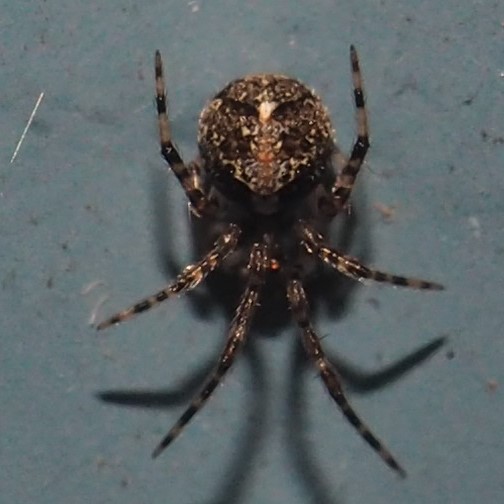
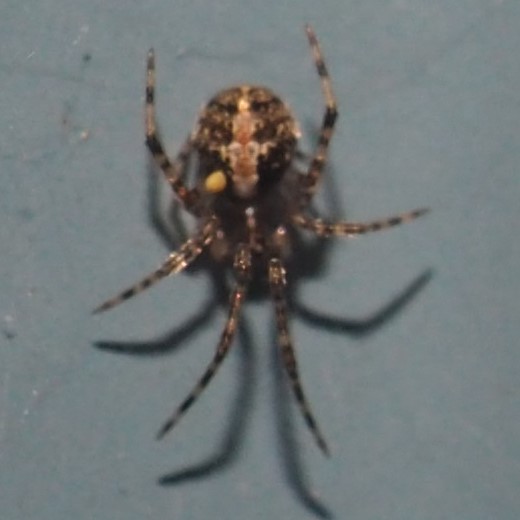
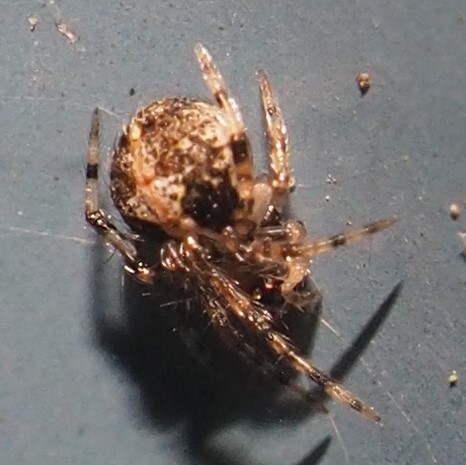
Those Common House Spiders are also targets for the Wasp larvae. But the Spiders aren't always the ones on the receiving end. The Spider in number 2 is juggling two meals, one already made into a wrap. In picture 2, you see another Spider with fresh prey. The last spider is one I don't recognize. It is NOT a Common House Spider.
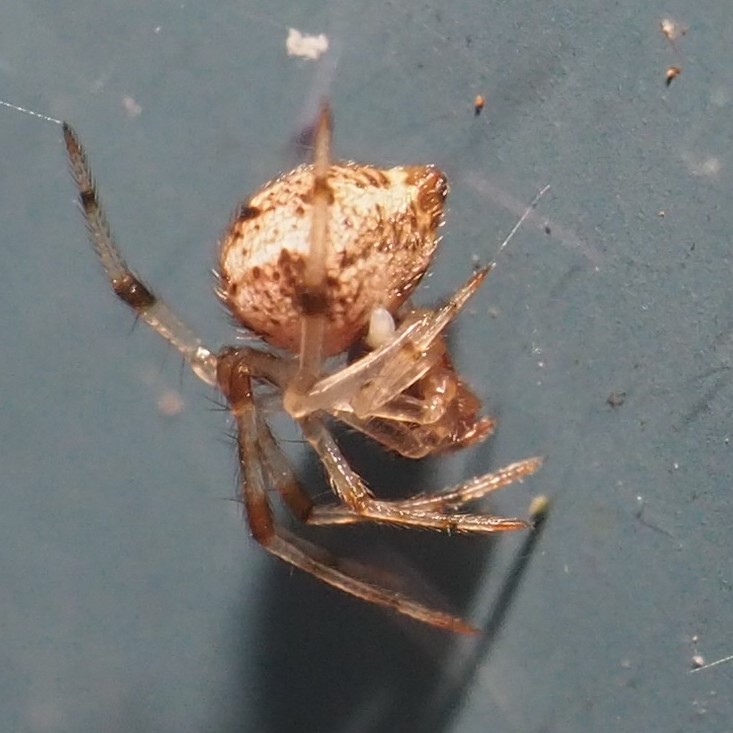
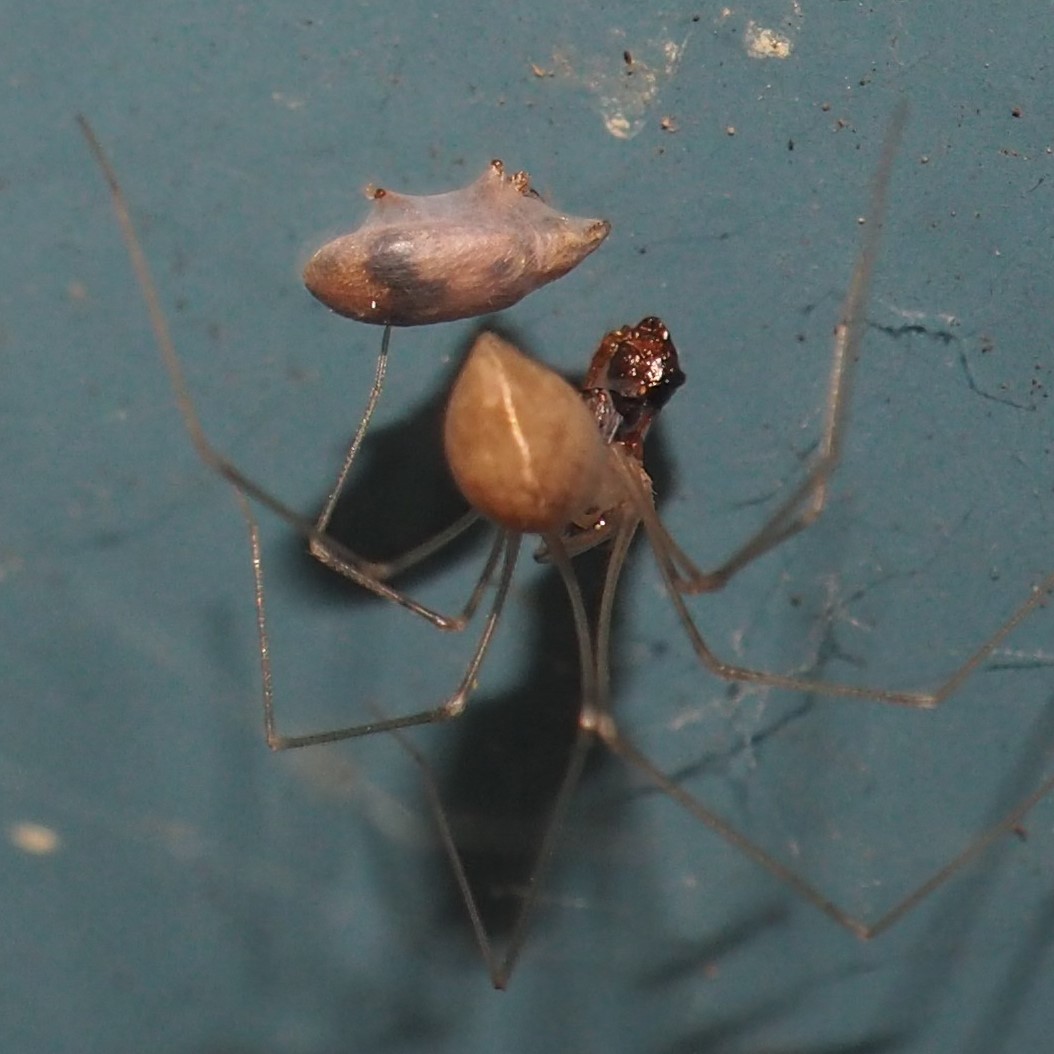
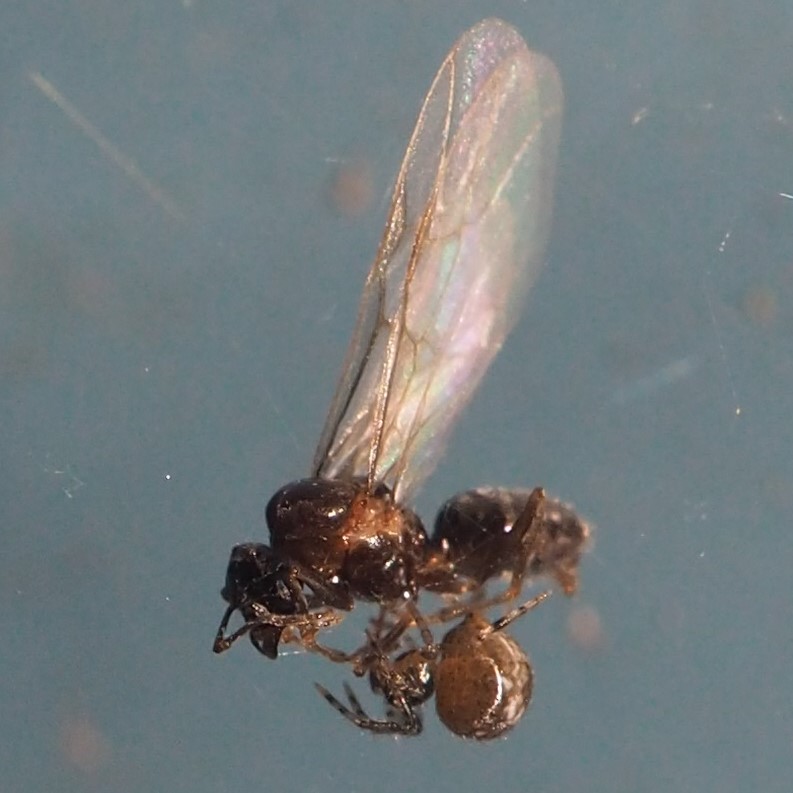
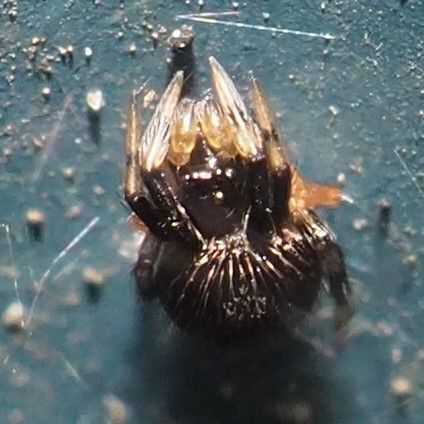
Here's a bit of comic relief. You know how fond I am of the Common Cannibal Spider Mimetus puritanus. Sometimes they hid themselves in plain sight by striking strange poses that don't show the elements that let us identify them (the big grin on the abdomen, the "necktie" on the head region, etc. But here is an assemblage of pictures, all from the same spot on the Wall, showing how easy it is to look like something else. The spider comes and goes depending on how it turns itself.
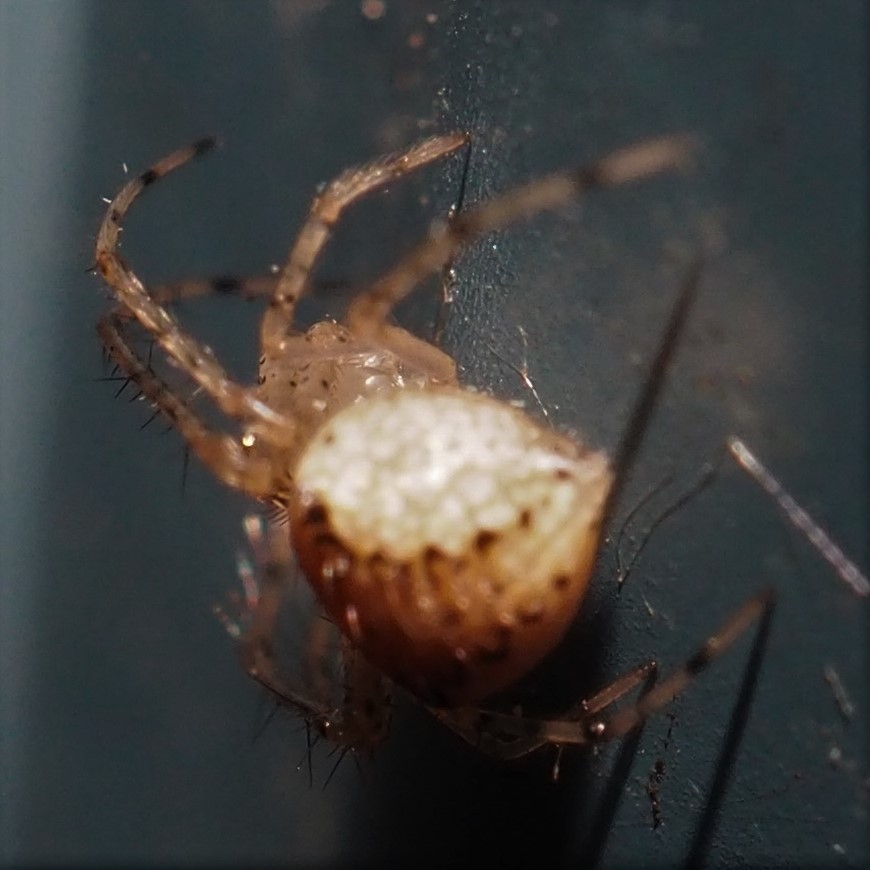
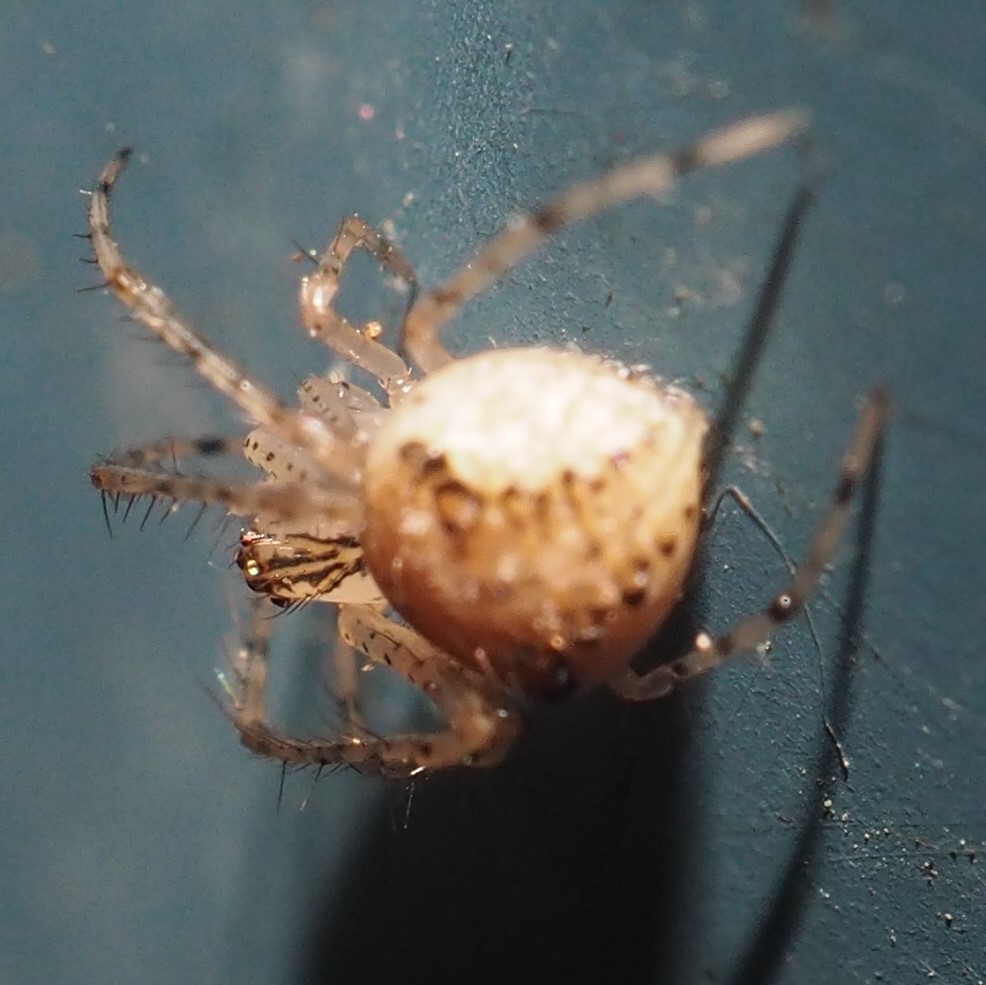
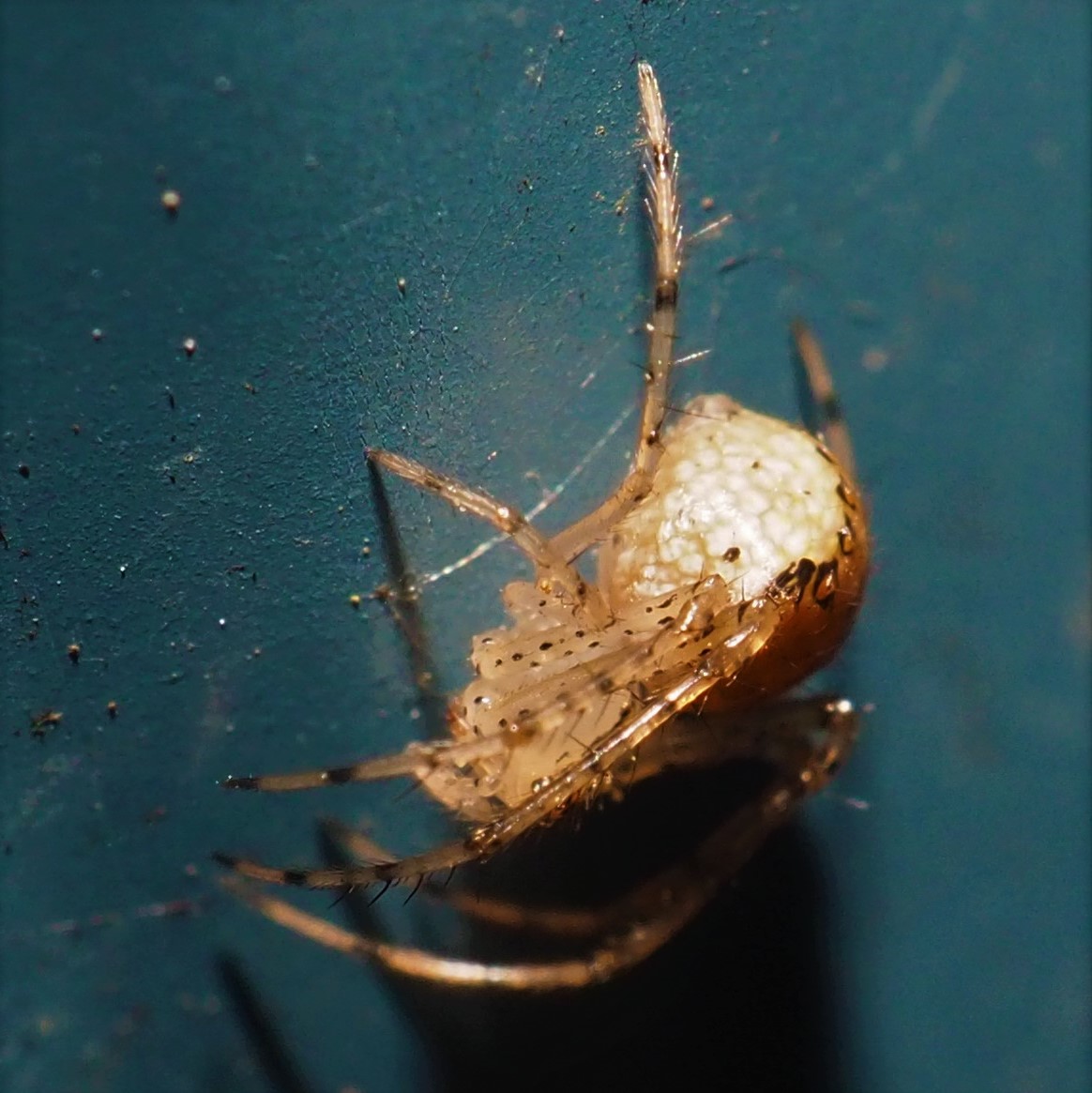
Ah, here it is. It is now rotated into the usual viewing position. The last picture seems to be of a slightly older Spider, but it's one of our favorites.
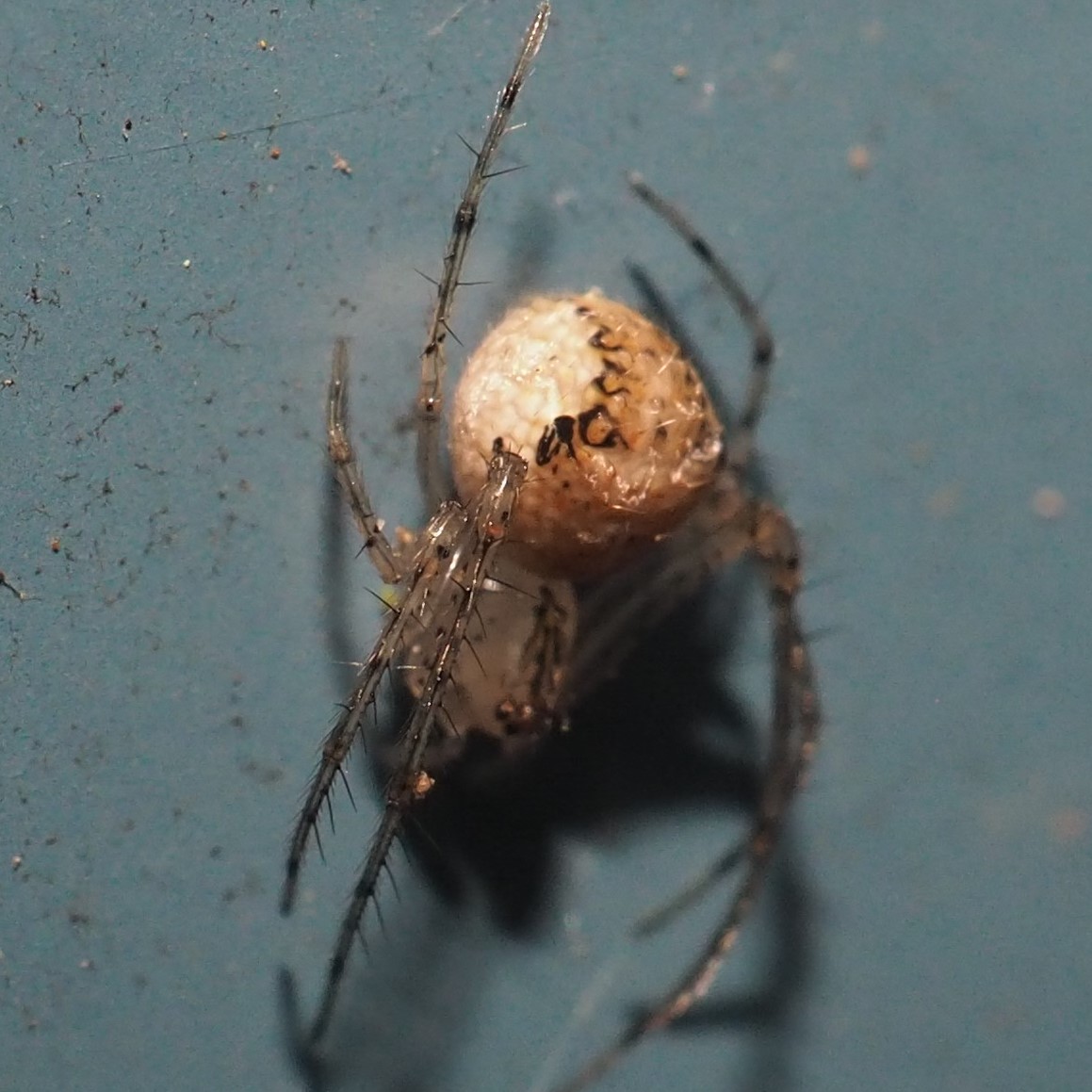
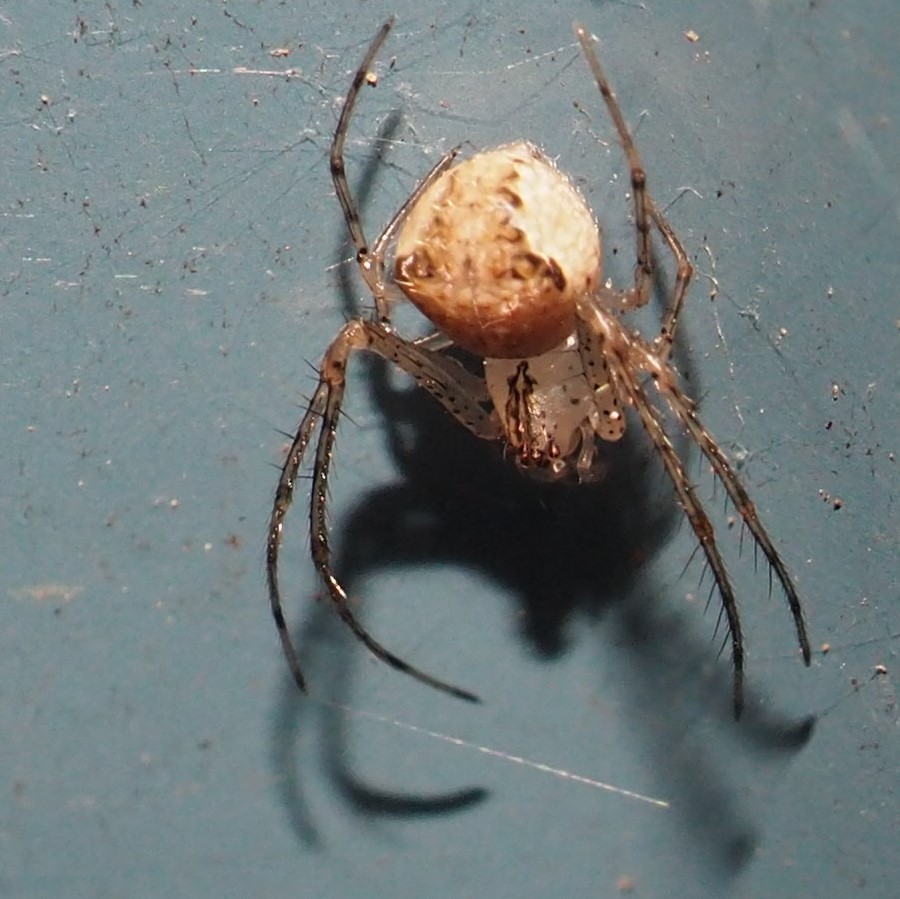
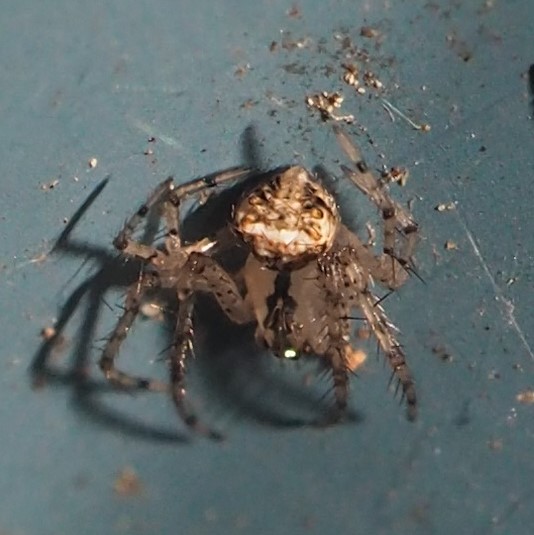
Let's take a look at our Wasps. First is a tiny Chalcidoid Spider in Subfamily Pteromalinae. Then we have another tiny one in genus Anastatus. Third is a very tiny Wasp that was on the North Wall near where we watch for Barklice.
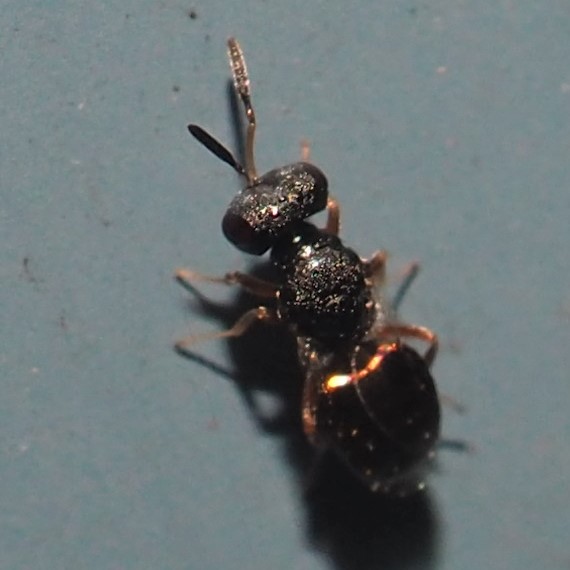
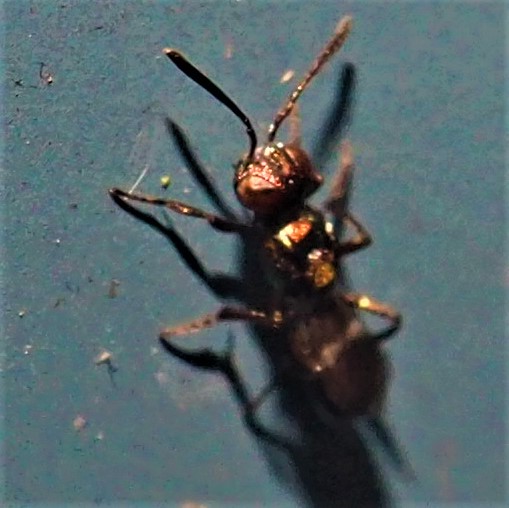
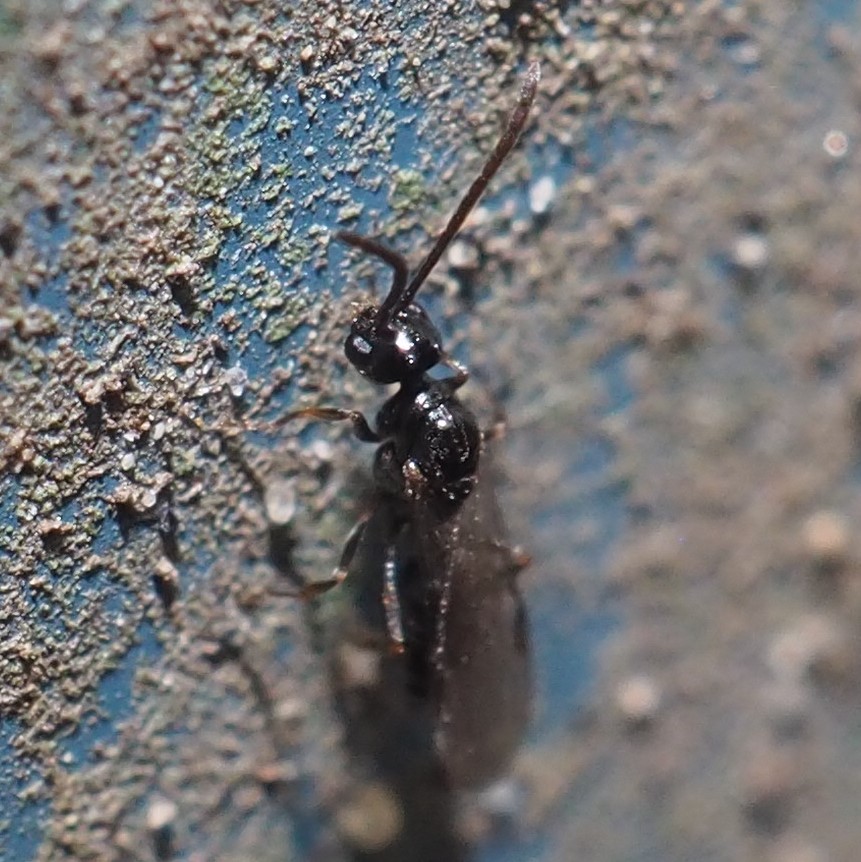
Here are some of the Wasps that love Goldenrod. This one is probably Cerceris insolita. Next is another view of it. The third one I included last week and called it the Great Black Digger Wasp. But @susanna_h told me it is not that, but Isodontia philadelphica, a member of the Thread-waisted Wasps, in the same Family (Sphecidae) as the Great Black Digger. Now you know too.
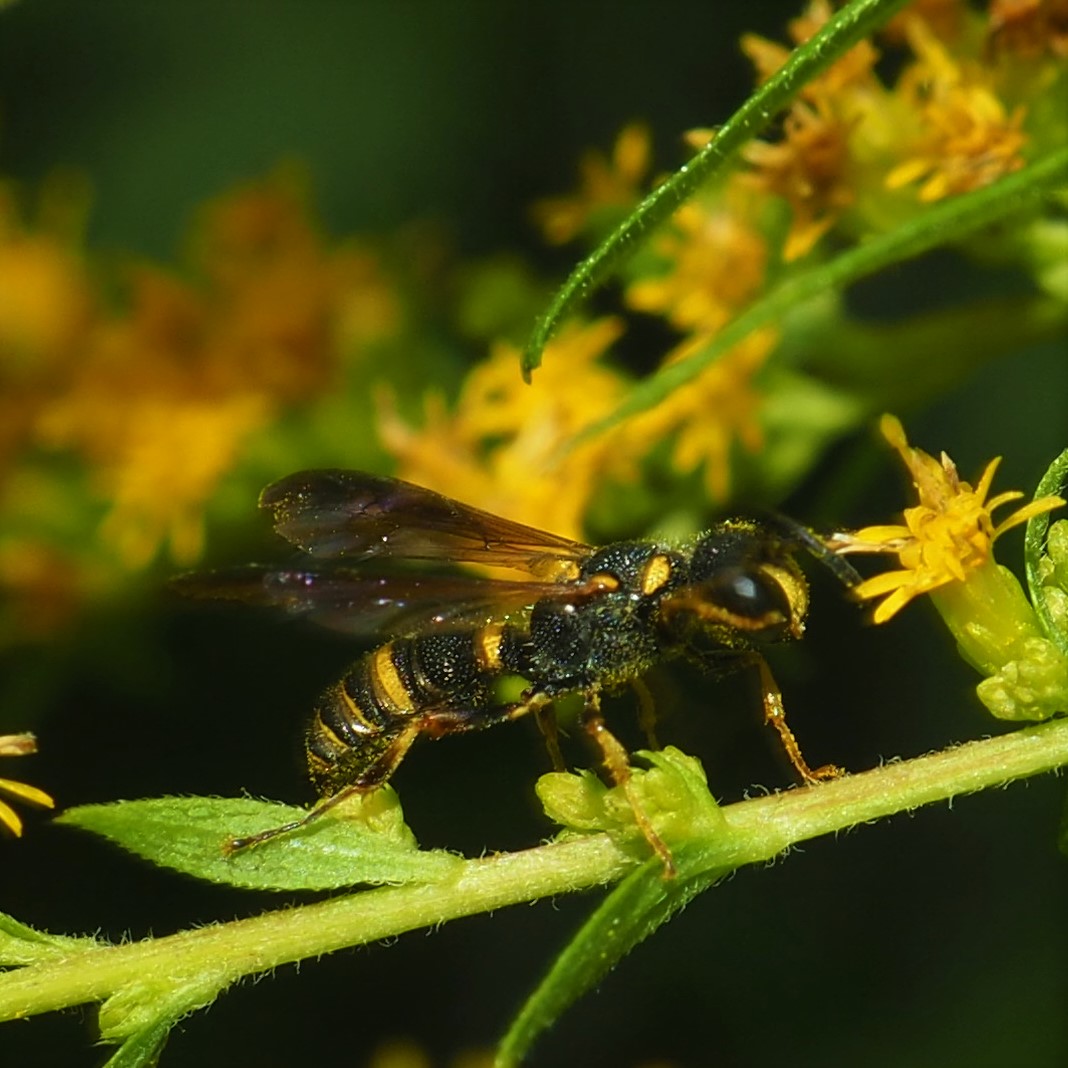
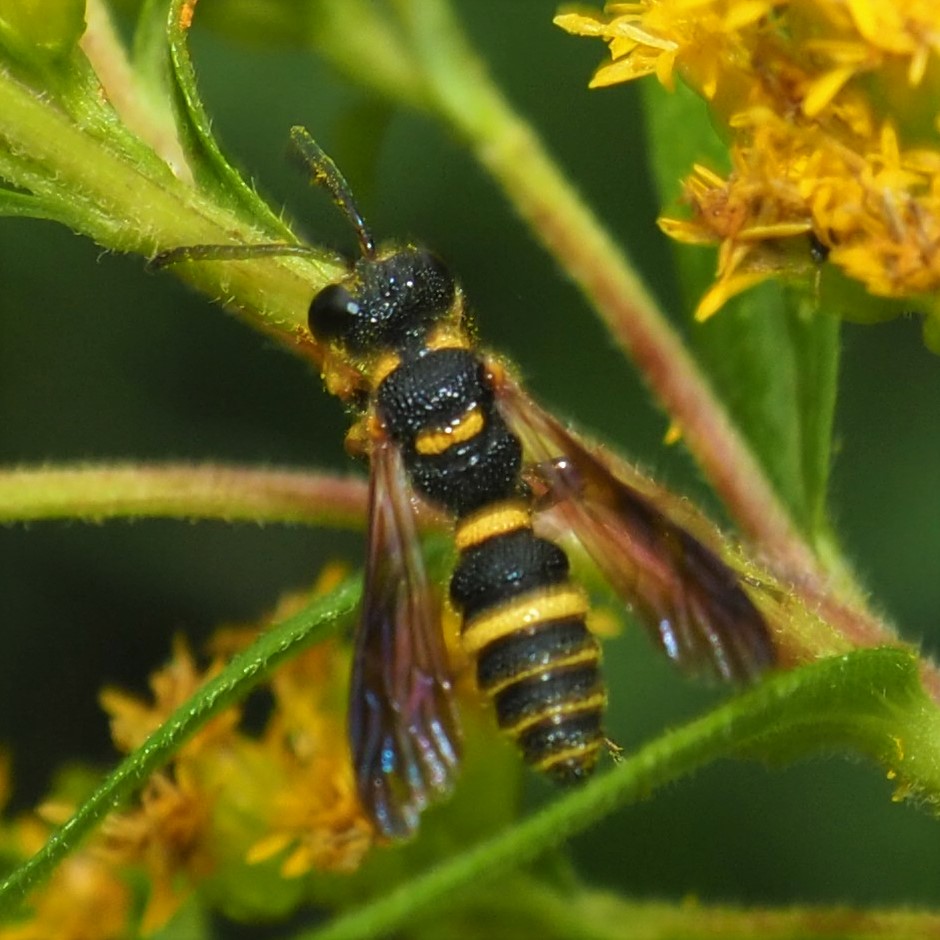
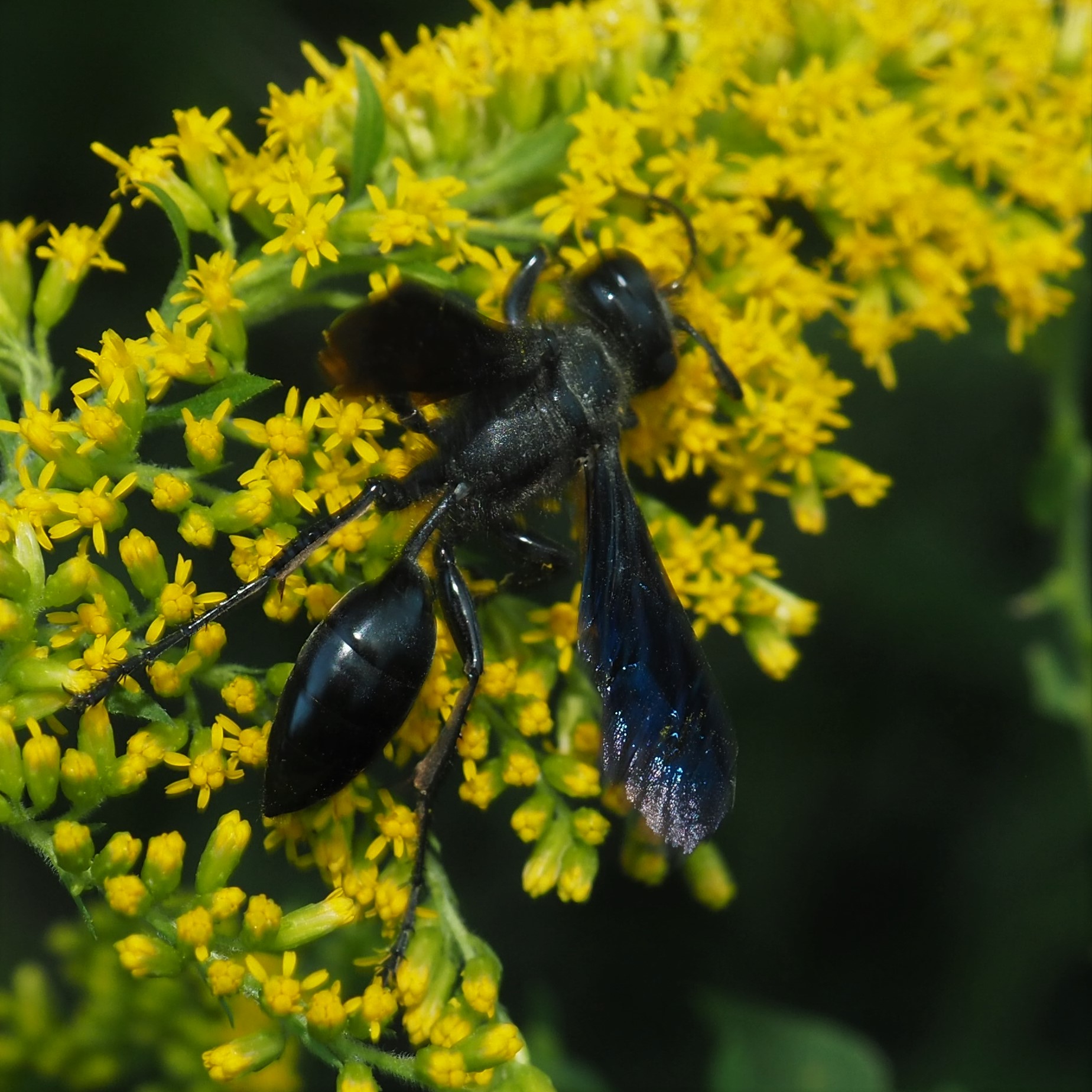
Here is that male Dark Paper Wasp again. It is followed by two pictures of the other common Paper Wasp around here, the European Paper Wasp.
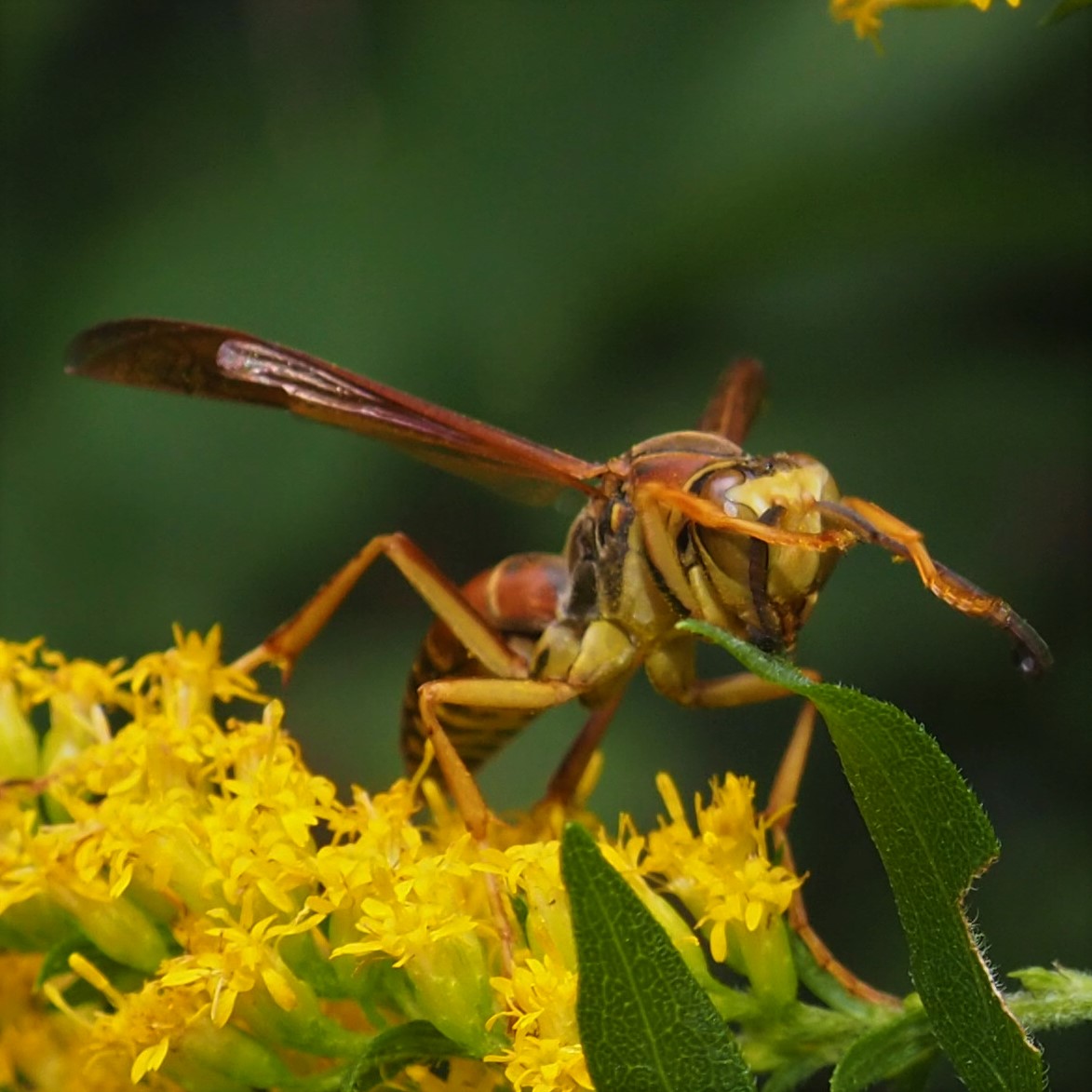
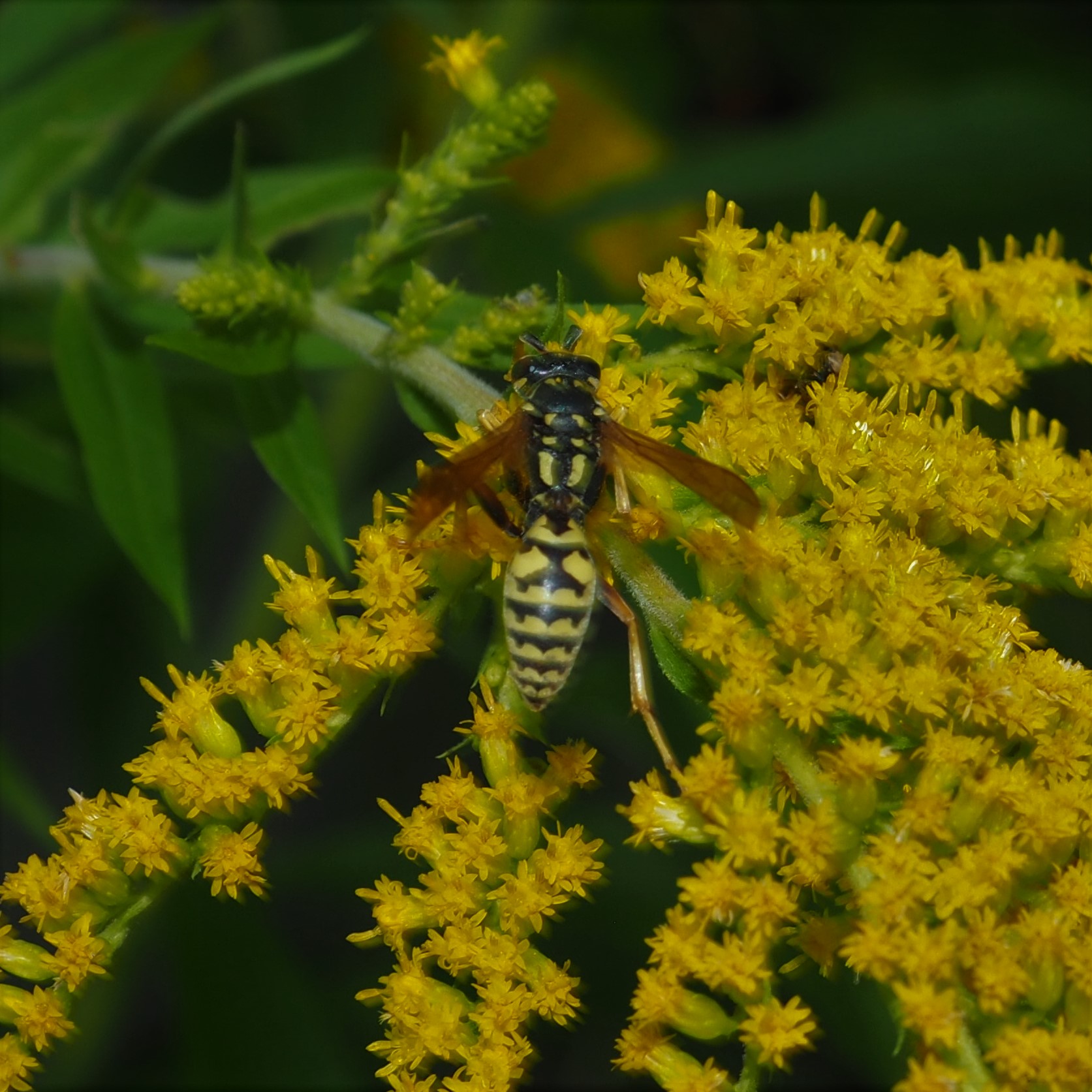
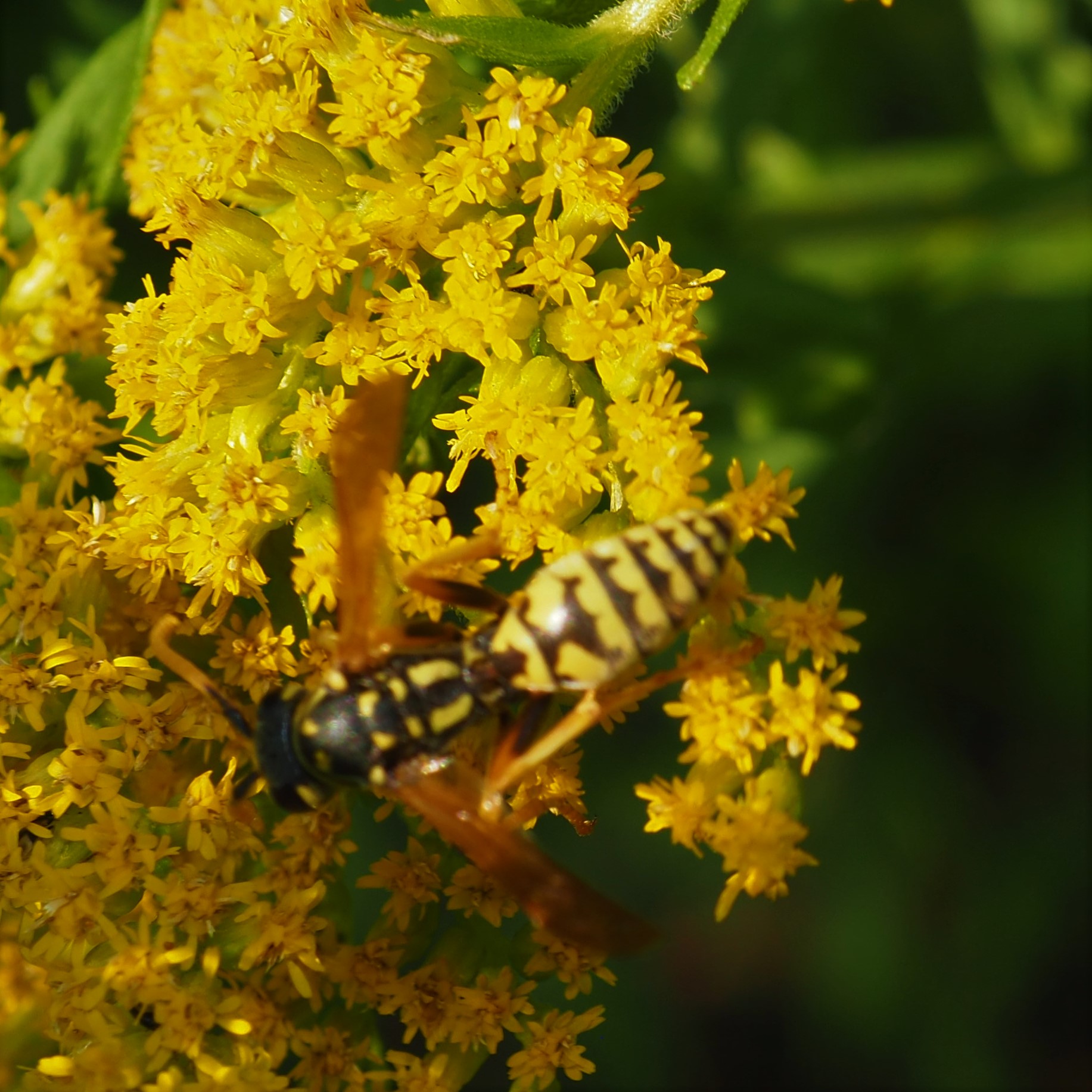
We've been noting when we see certain non-insect creatures that are common here. One is the Brickwork Pillbug, and the other is that Polyxenus, or Bristled Millipede. Diane Young sent me an article saying that those bristles, which are on the tail end of the creature, are useful in confusing Ants. Apparently they stick the bristles in the Ant's face and it reacts the way we probably would if we found our eyes full of a lot of sharp bristles.


The Pond is still warm enough that I can feed the Fishes. They go crazy when I stand beside the Pond in their favorite feeding position. I don't really have to sing "Here Fishes" song anymore to get them interested. Here are some Fishy pictures.
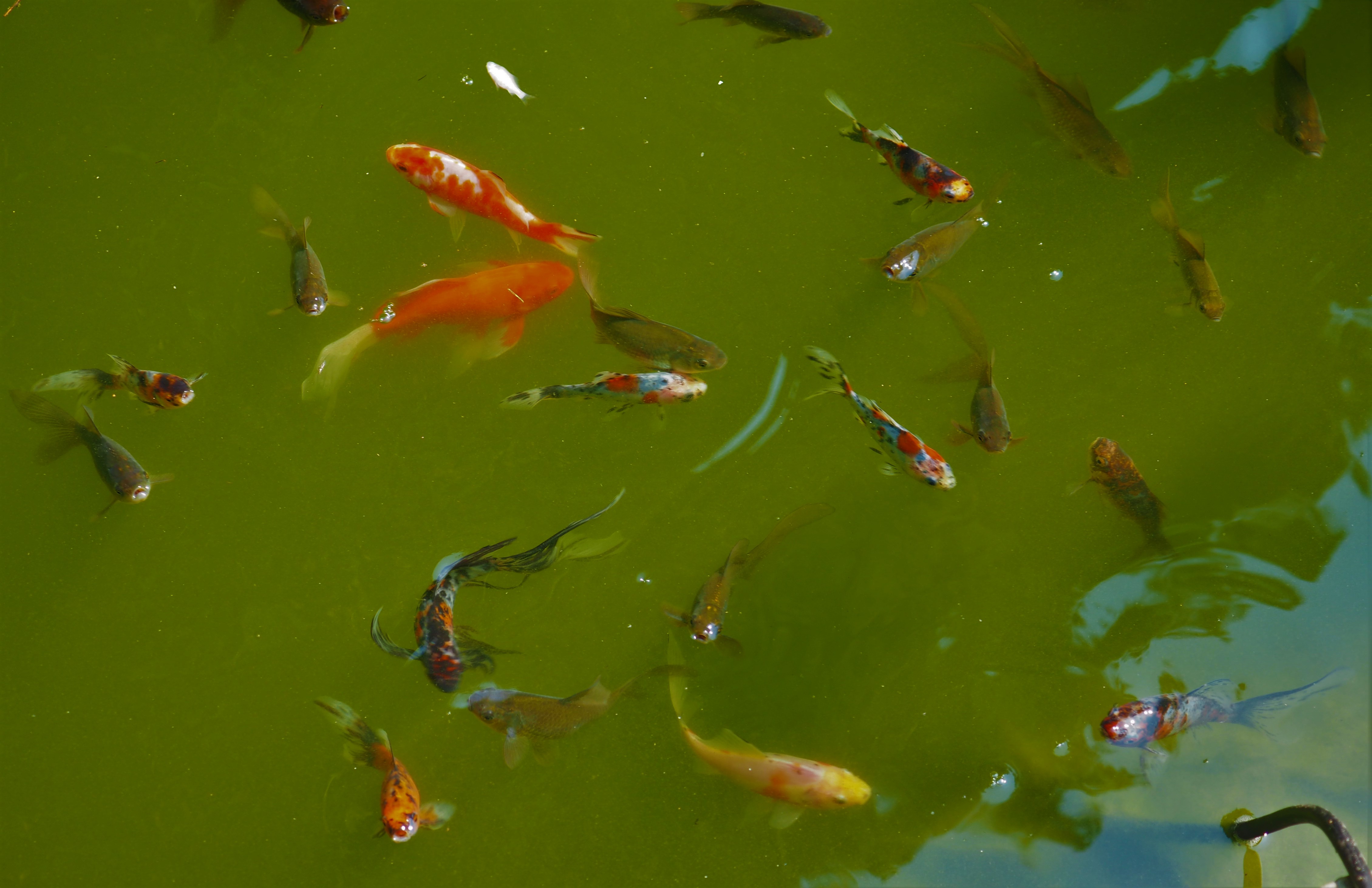
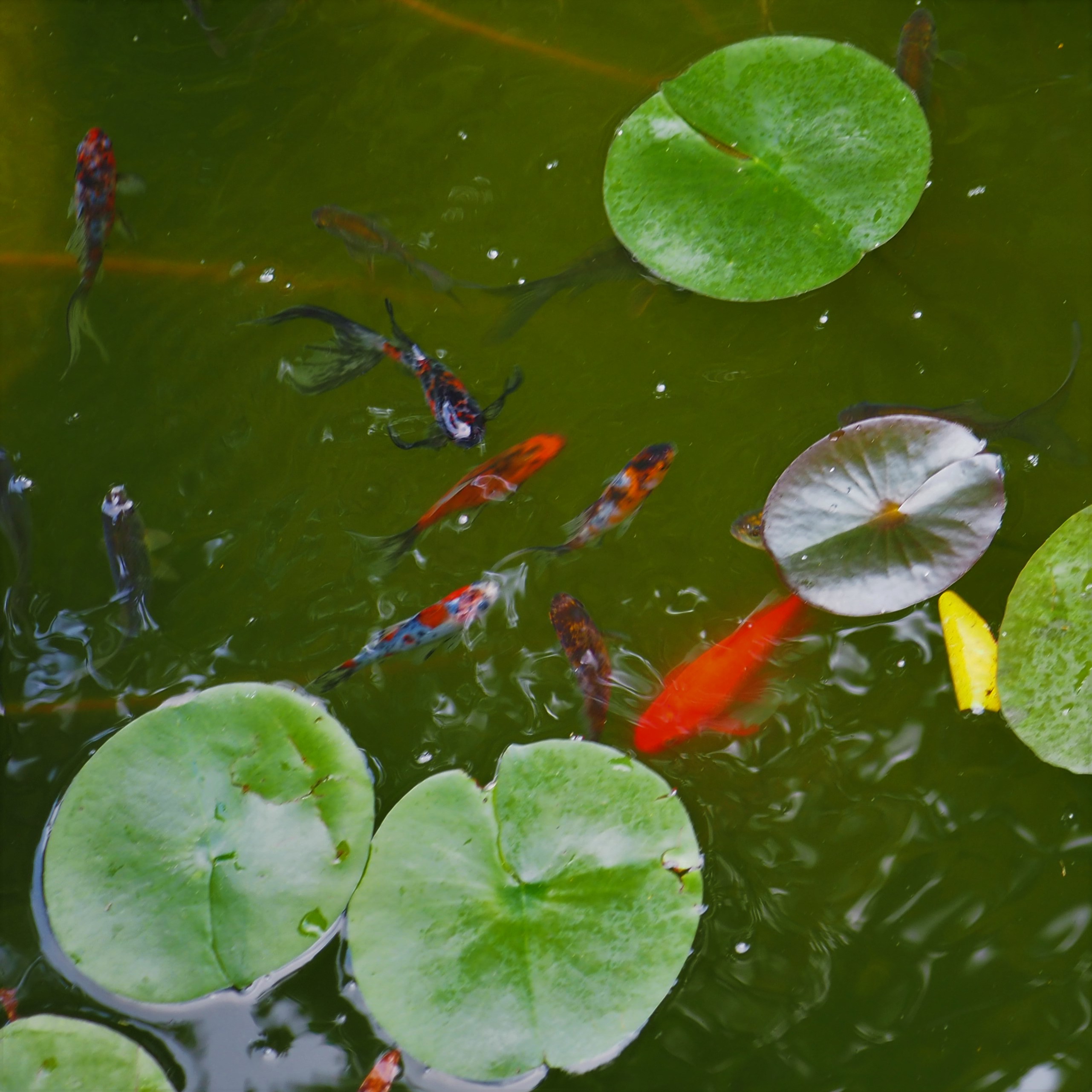
Here are the Frogs I saw this morning when I went out. Since they were at different distances from me, I'm not sure if the first picture or the second is Frog Two or Frog 3 (remember Frog Two is bigger than Frog 3). But picture 3 shows one of the former Tiny Frogs, who is now almost as big as Frog 3 was at the beginning of the summer!


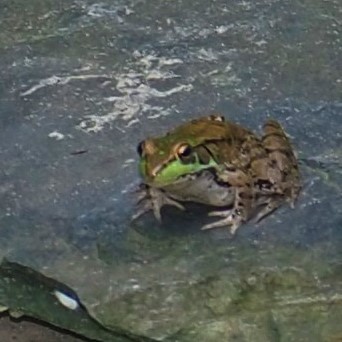
And here is another elocution major at the side of the Pond. I videoed us chatting, him silently and me in my booming voice. See how Froggy silently opens his mouth. He also looks as if he is getting ready to dance (my imagination there). Just tap on the empty space to hear me and see him. There is a little volume adjuster at the bottom of the screen. I suggest you turn it almost off.

Well, another week shot by - but it was wonderful to sit by the Wall and visit with the Barklice that remain there. And to visit the Goldenrod. And to talk to friends over a Wet Burrito at Lopez Taco House. But it would be just as lovely if you could visit with me or I with you. The power came back on in fewer days than threatened, though the Internet took longer. IT finally fixed the server accesss and that's why I'm back here talking to you.
Love, Martha
Back to September 11, 2022
Forward to October 2, 2022
Back to main menu
copyright Martha O'Kennon 2022






























.jpg)














































































